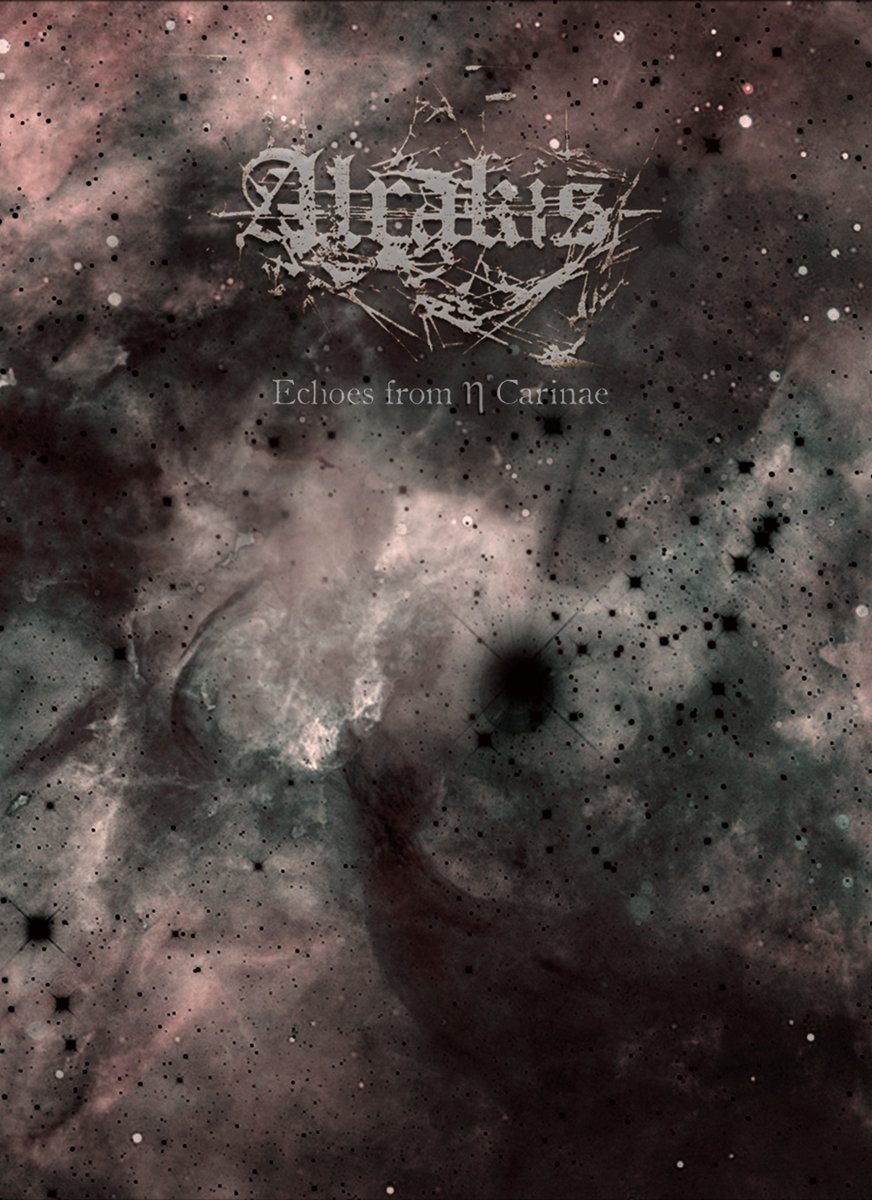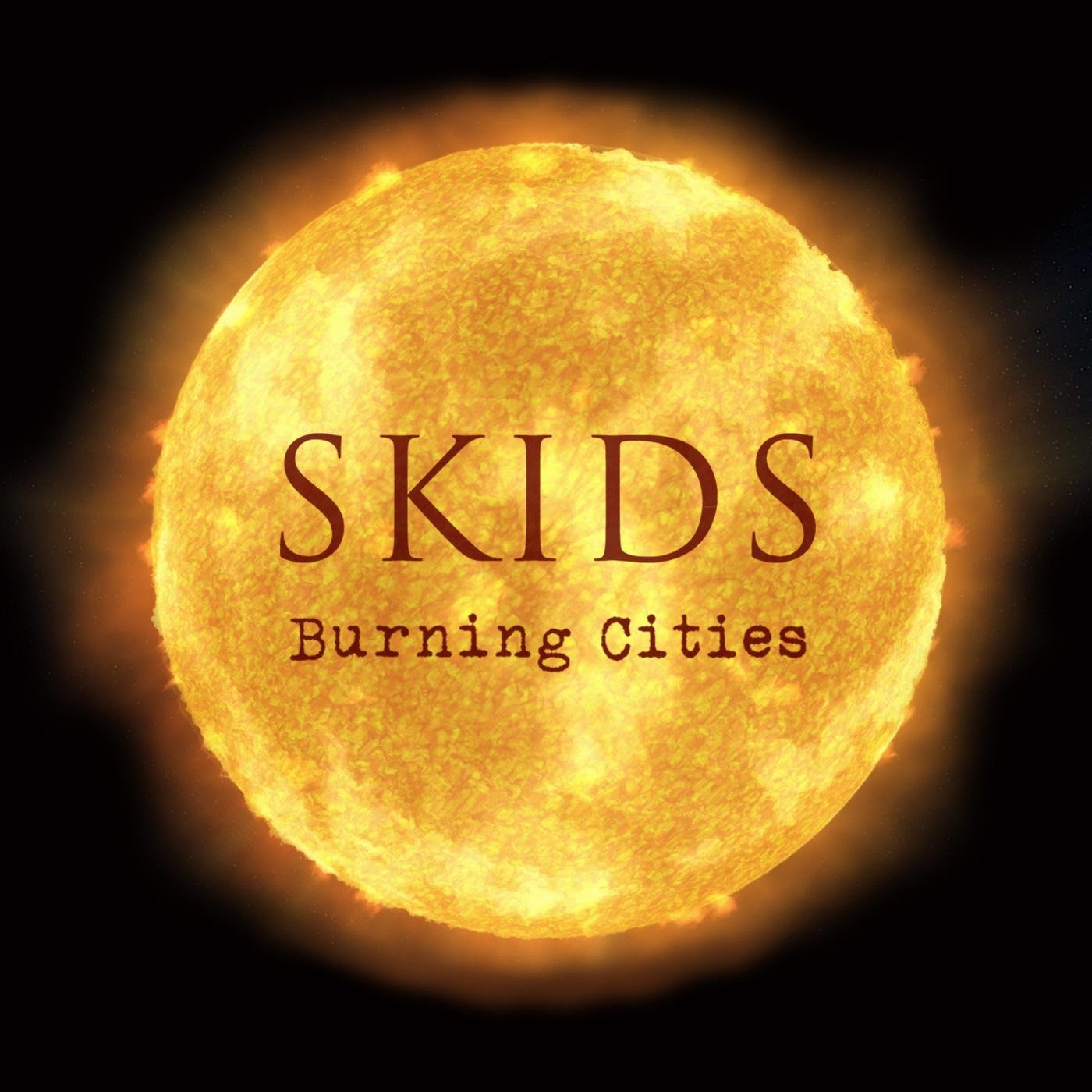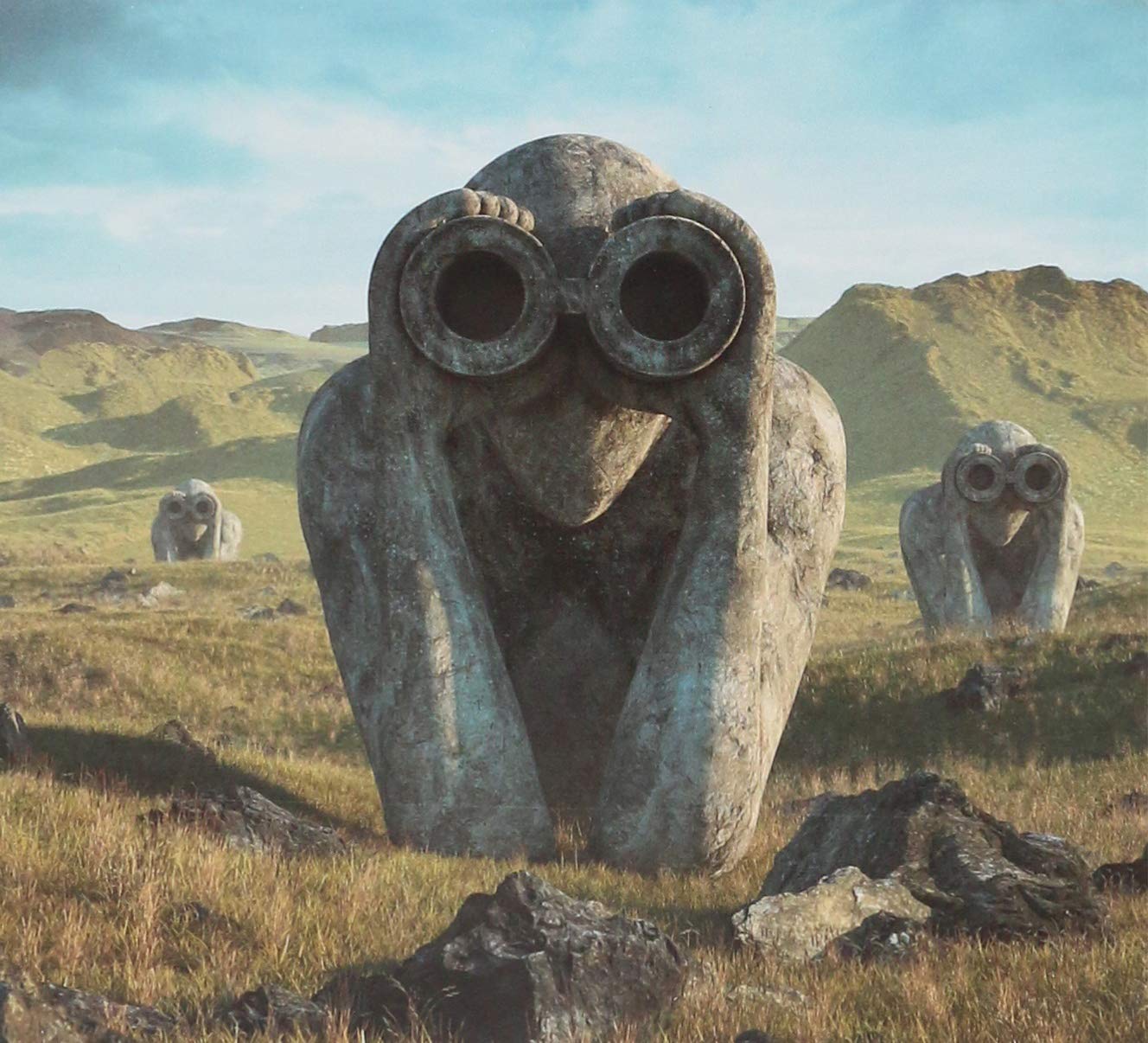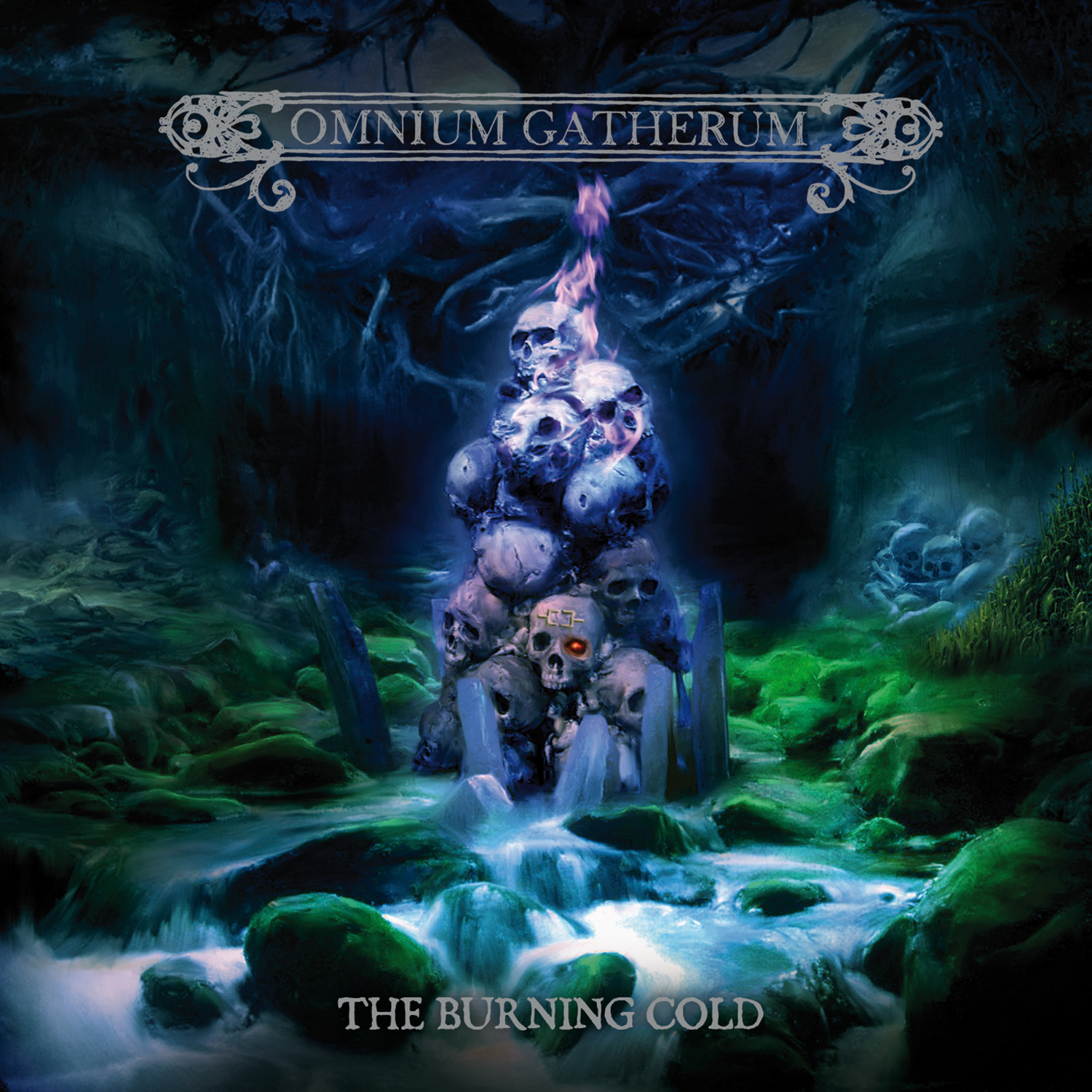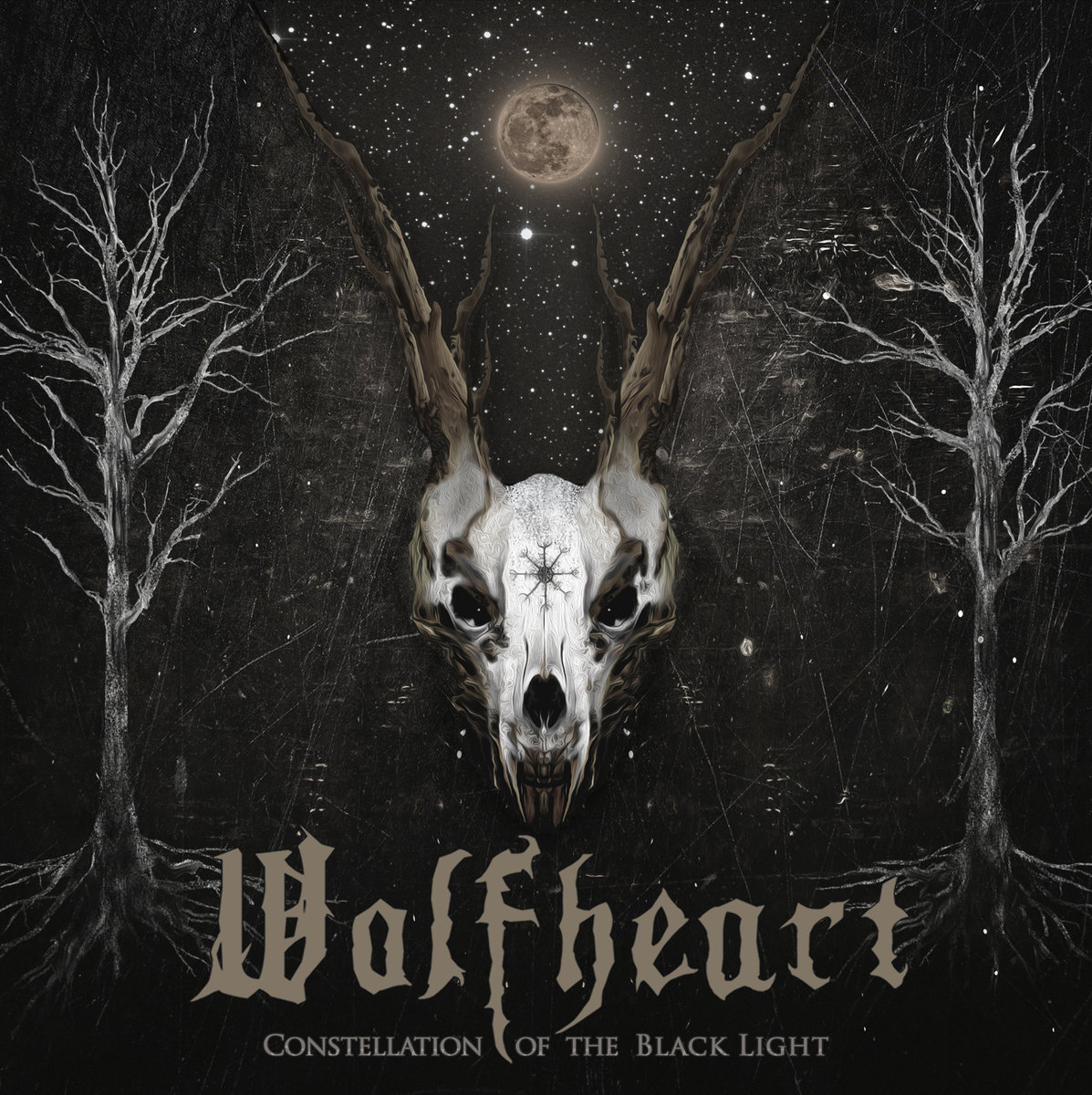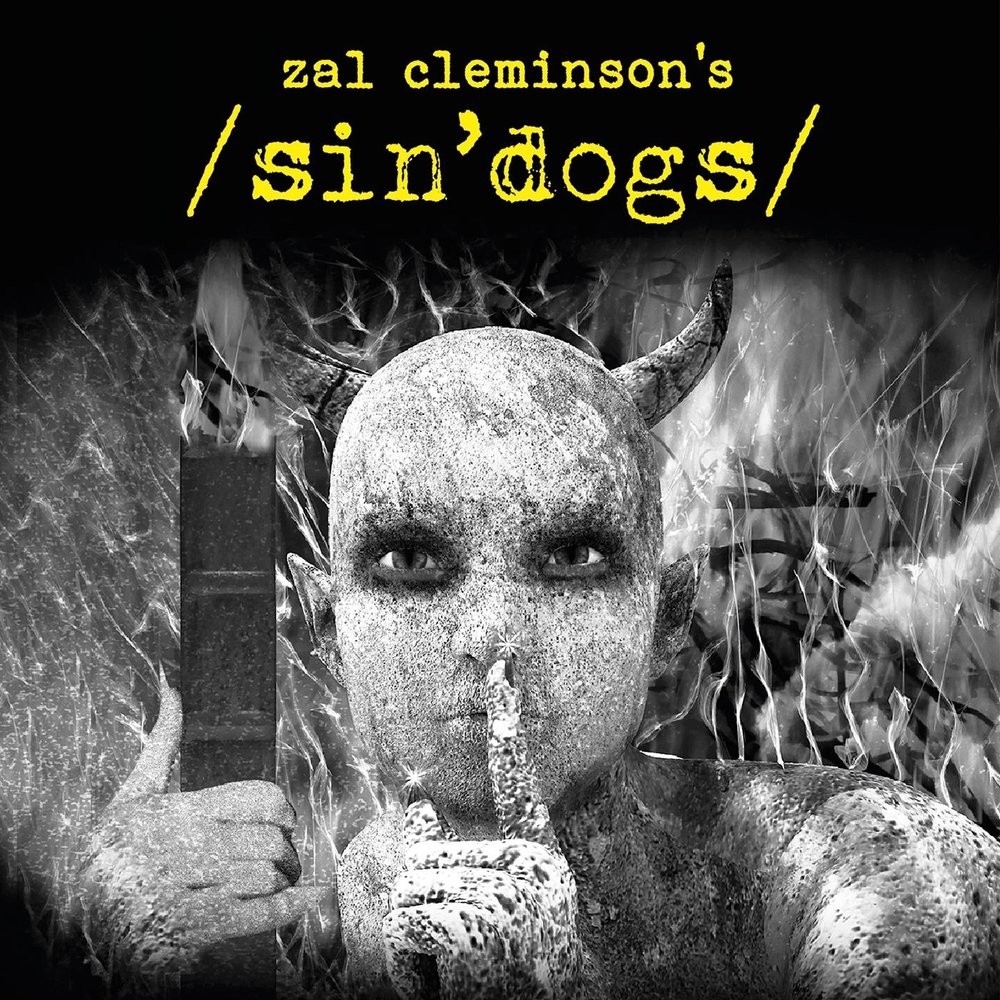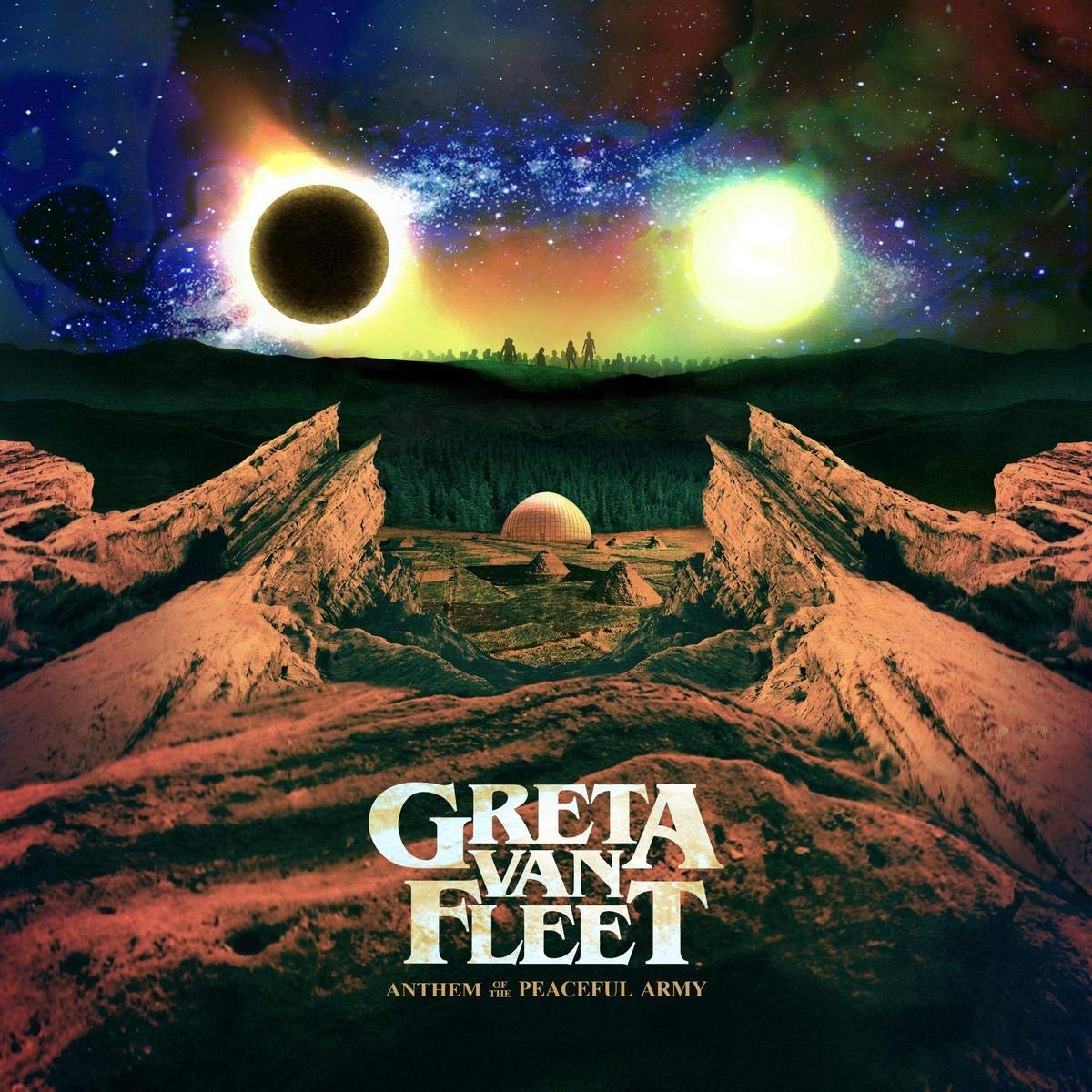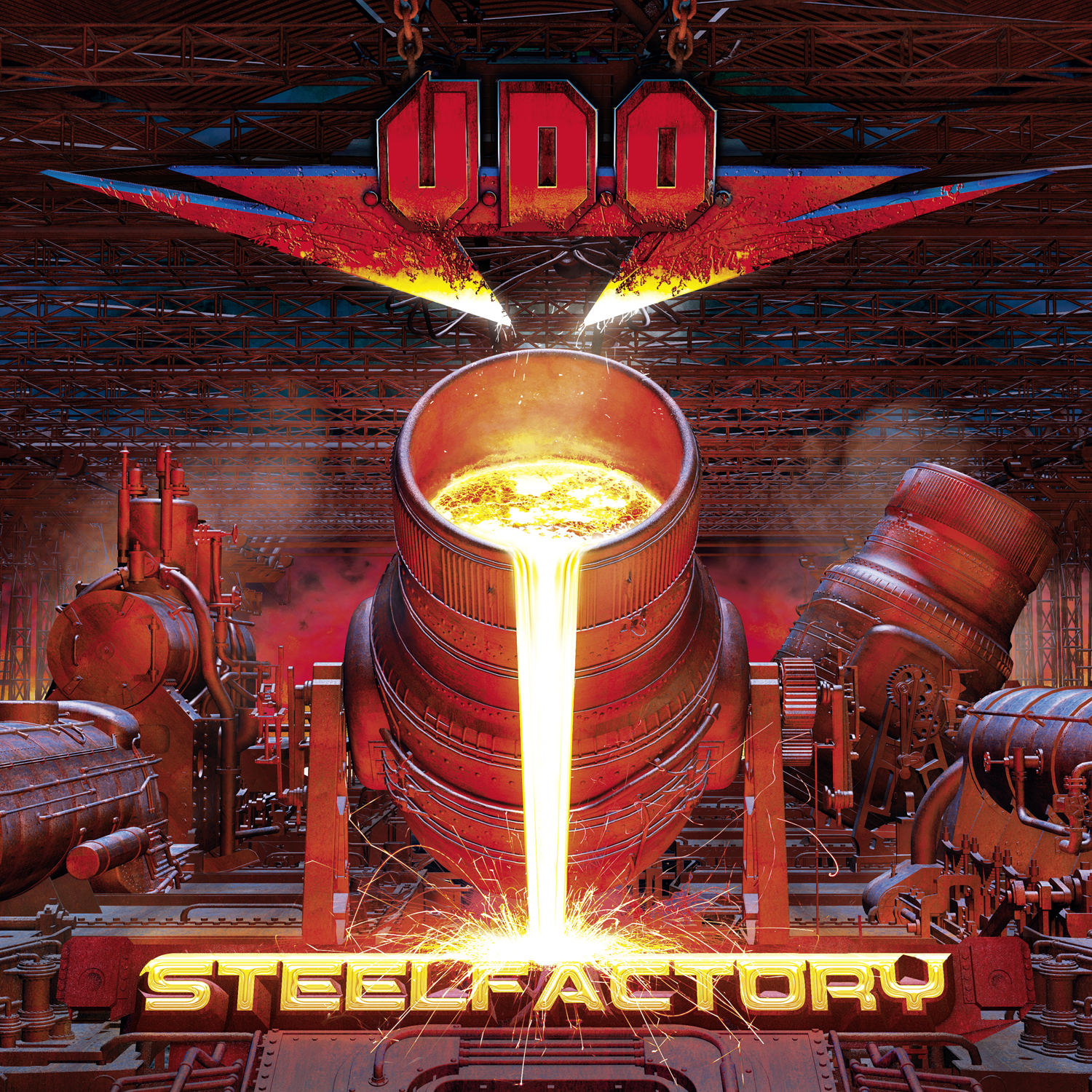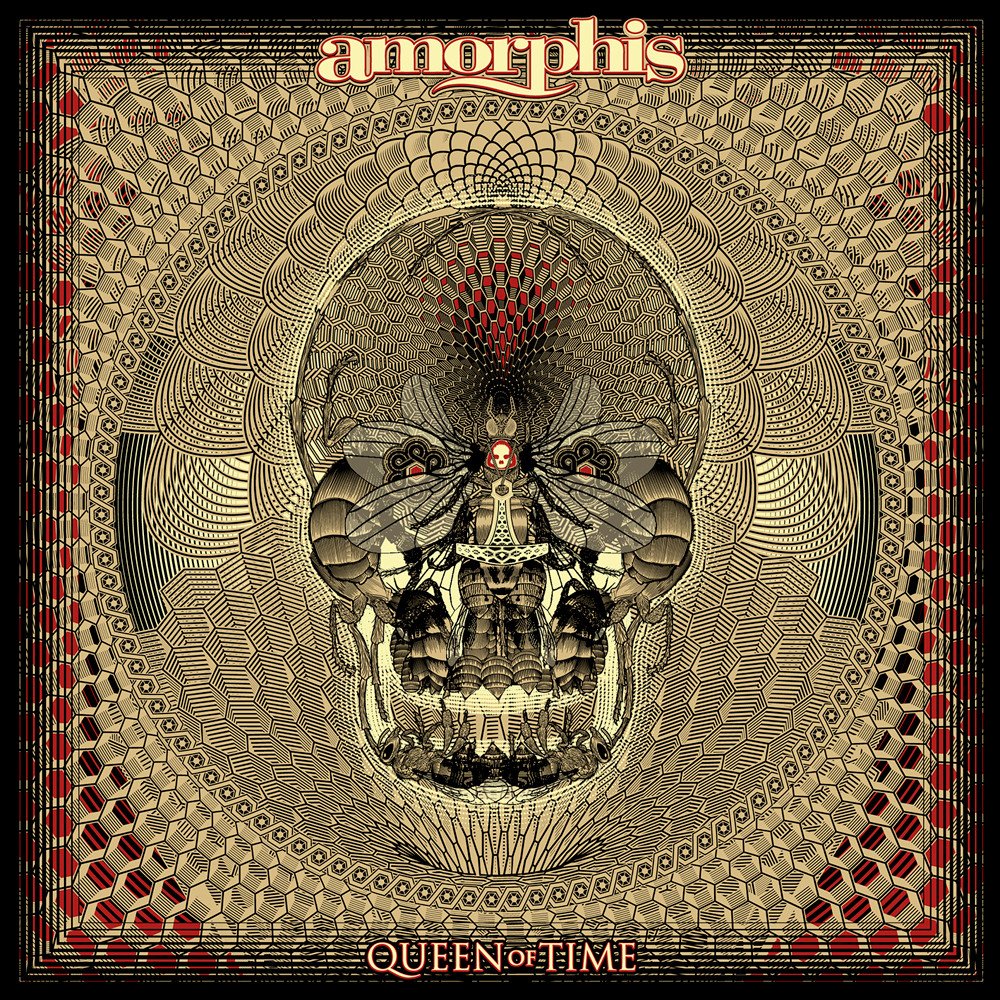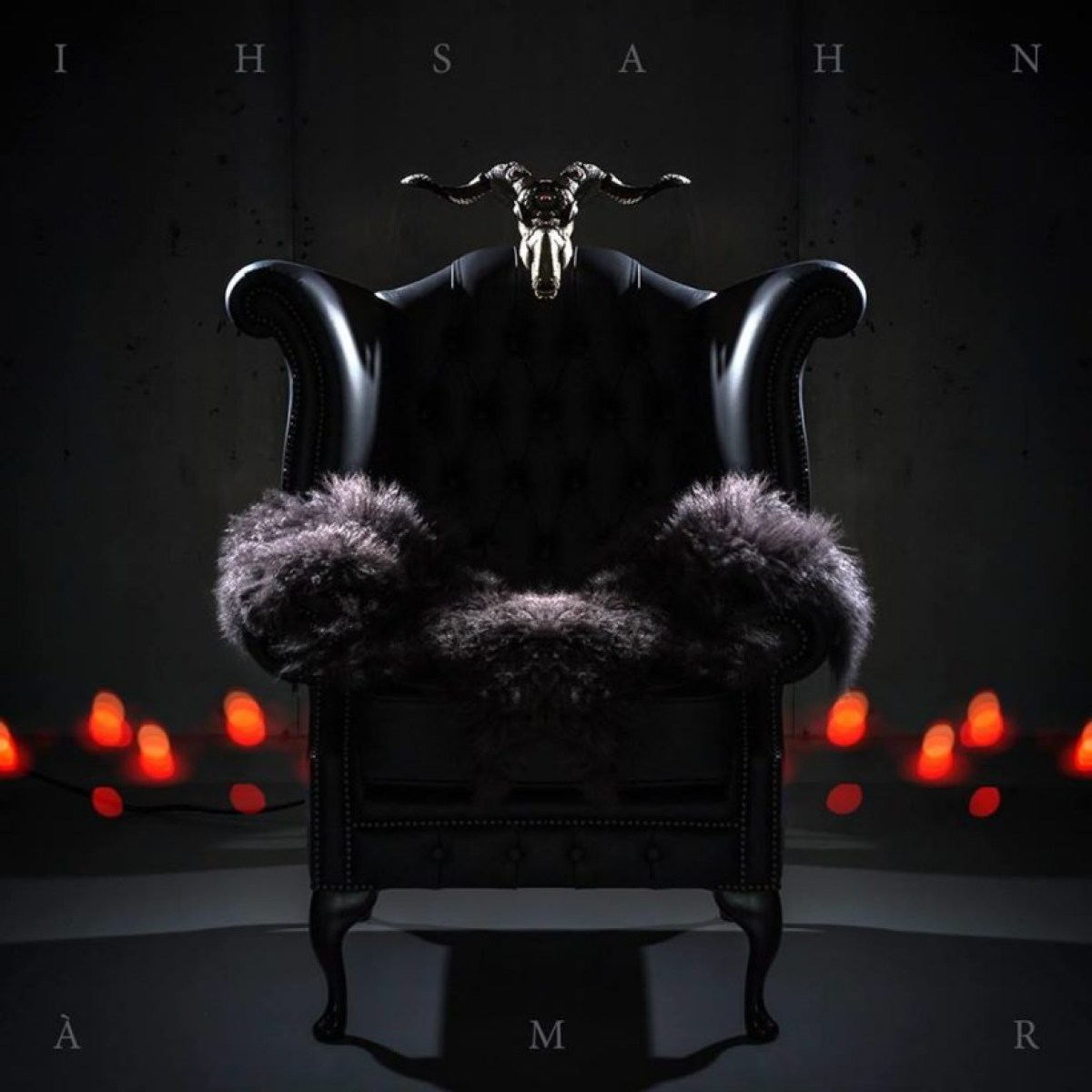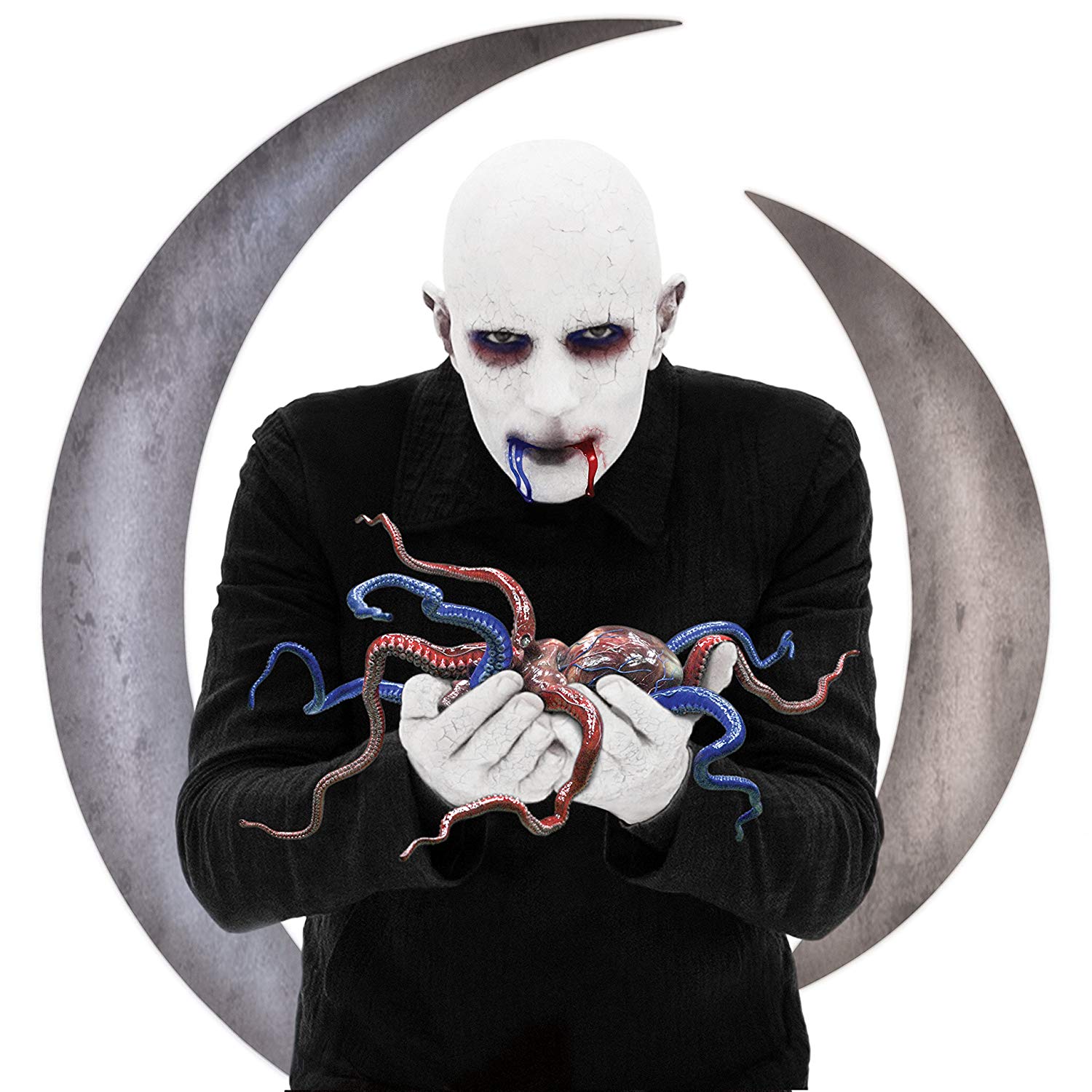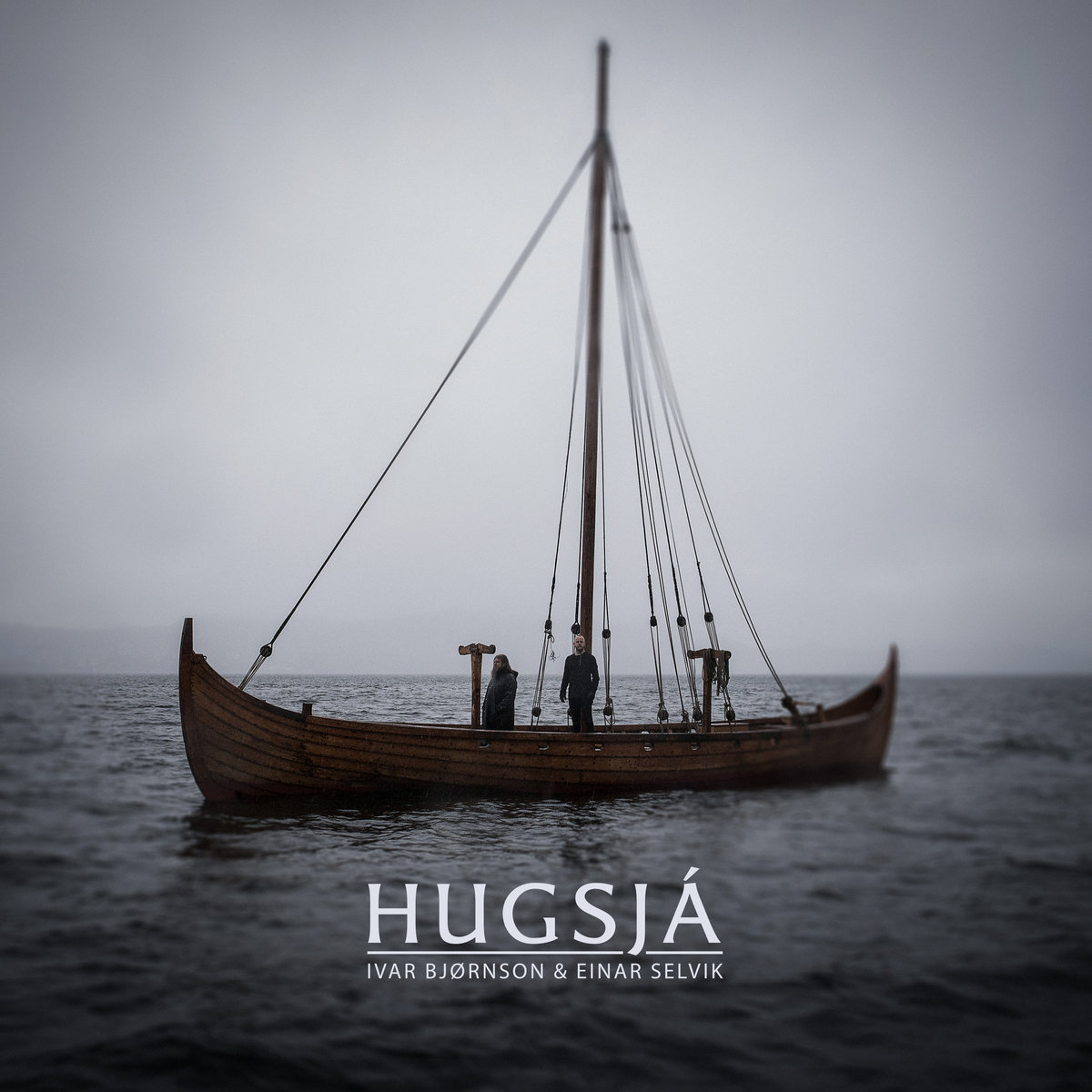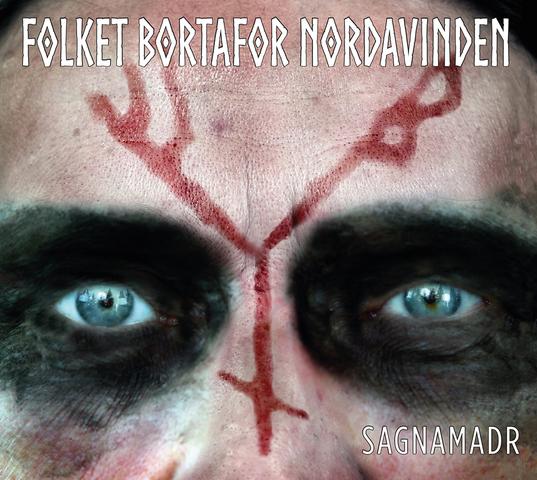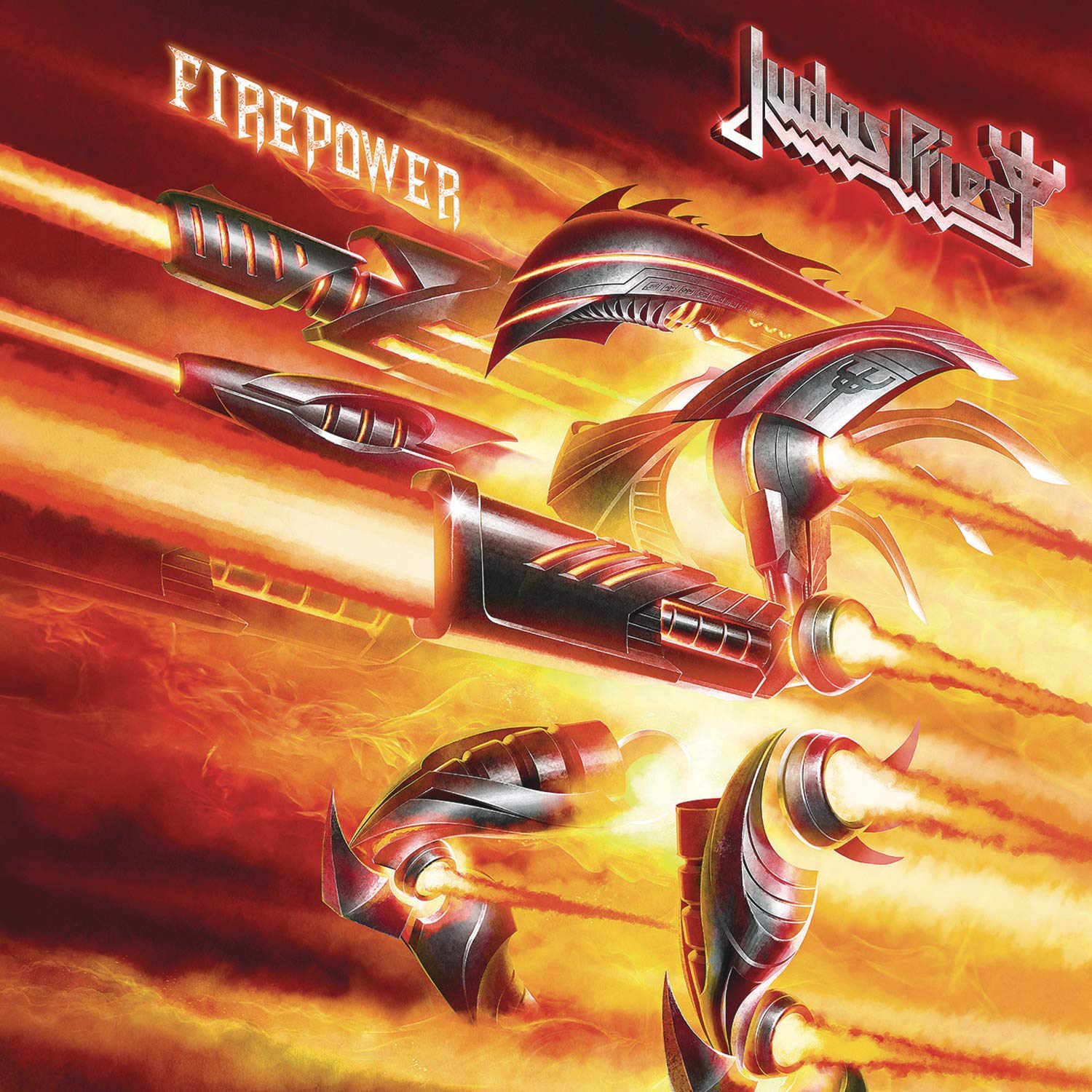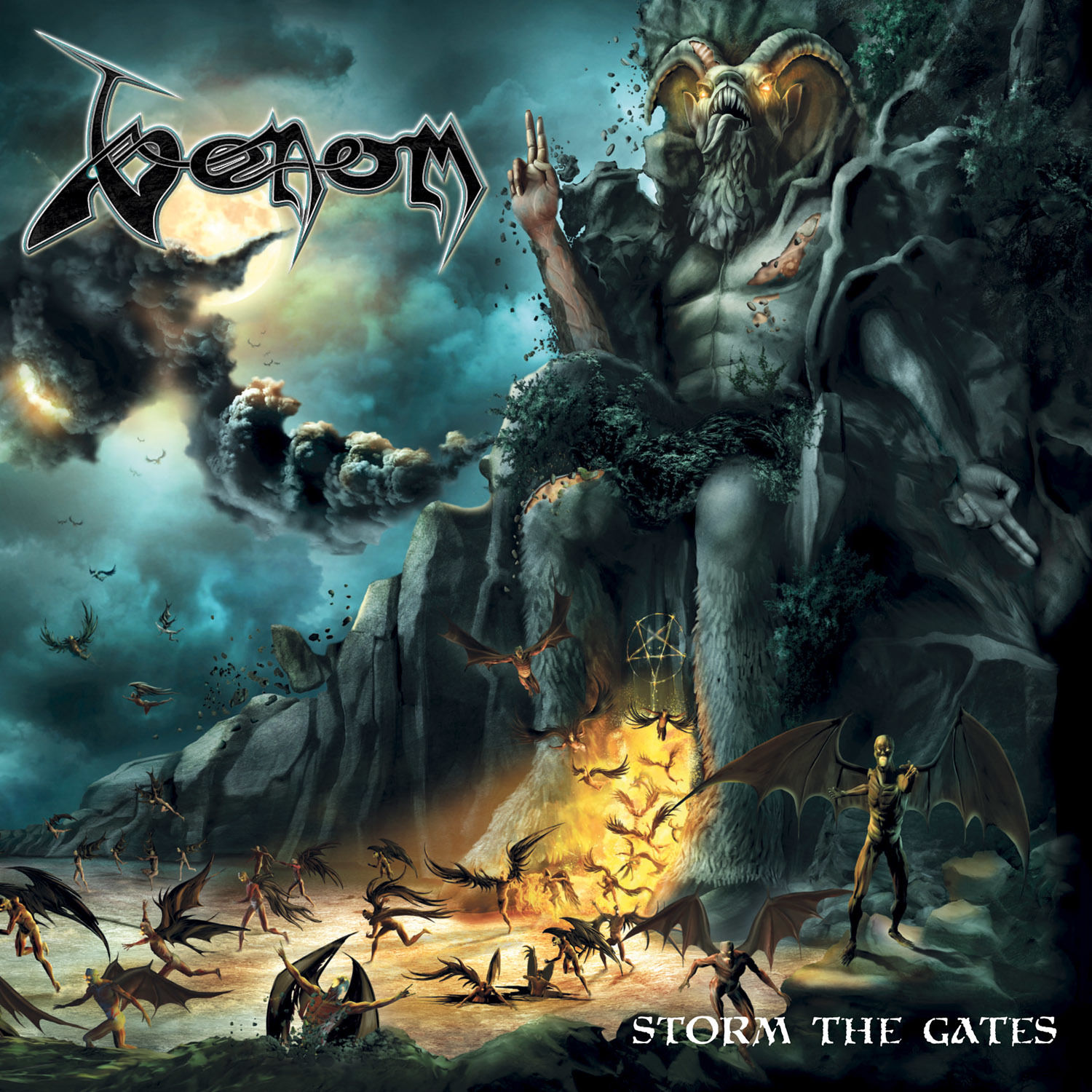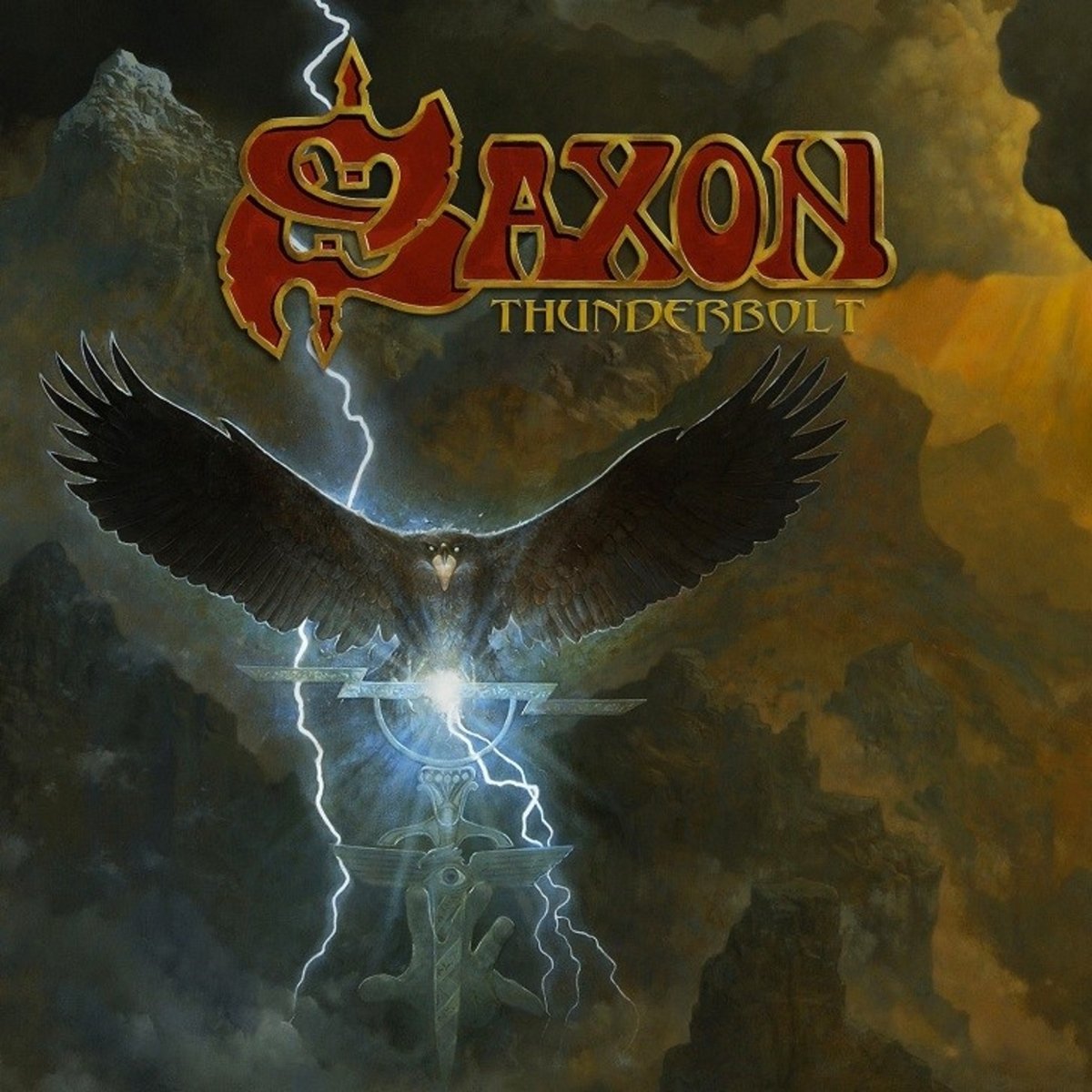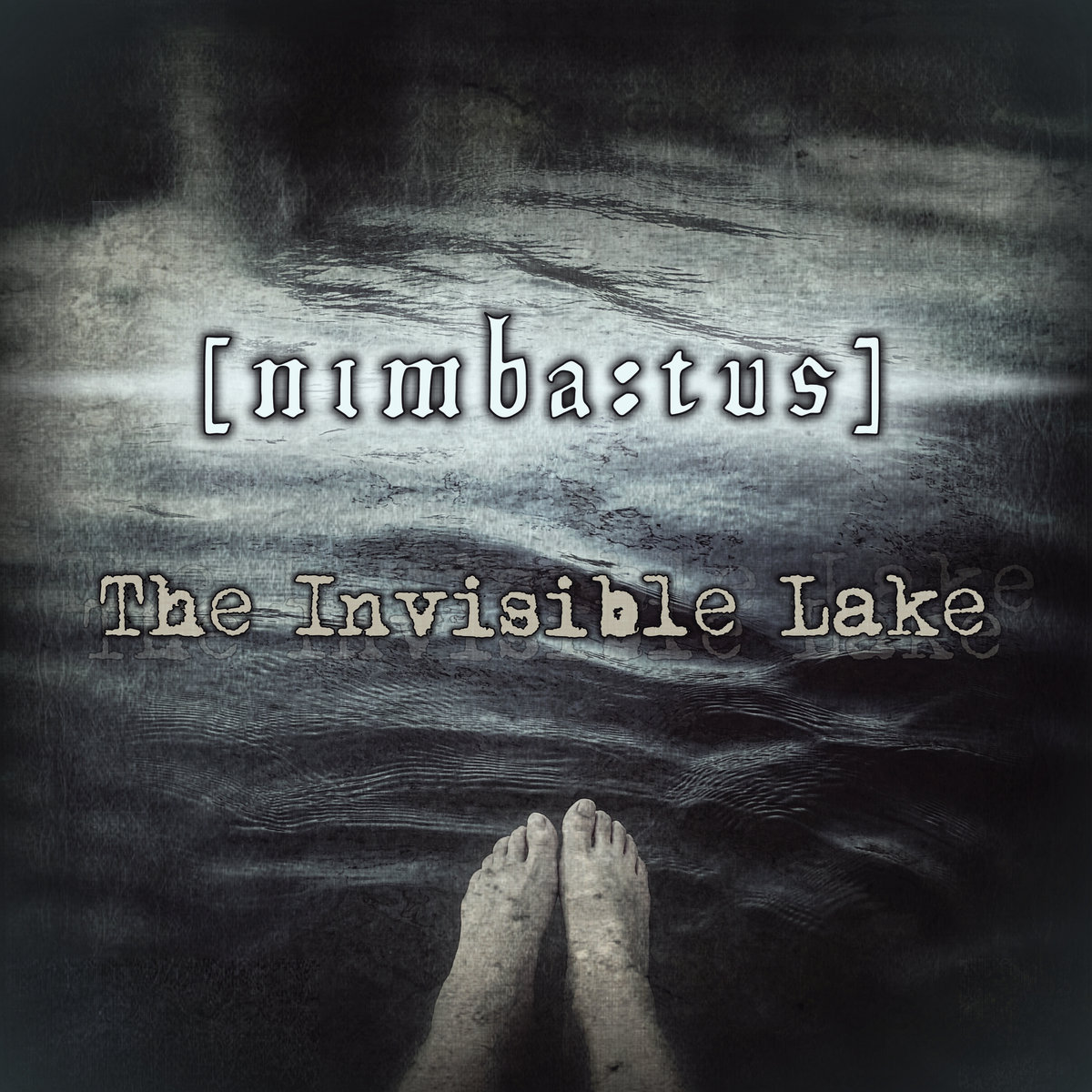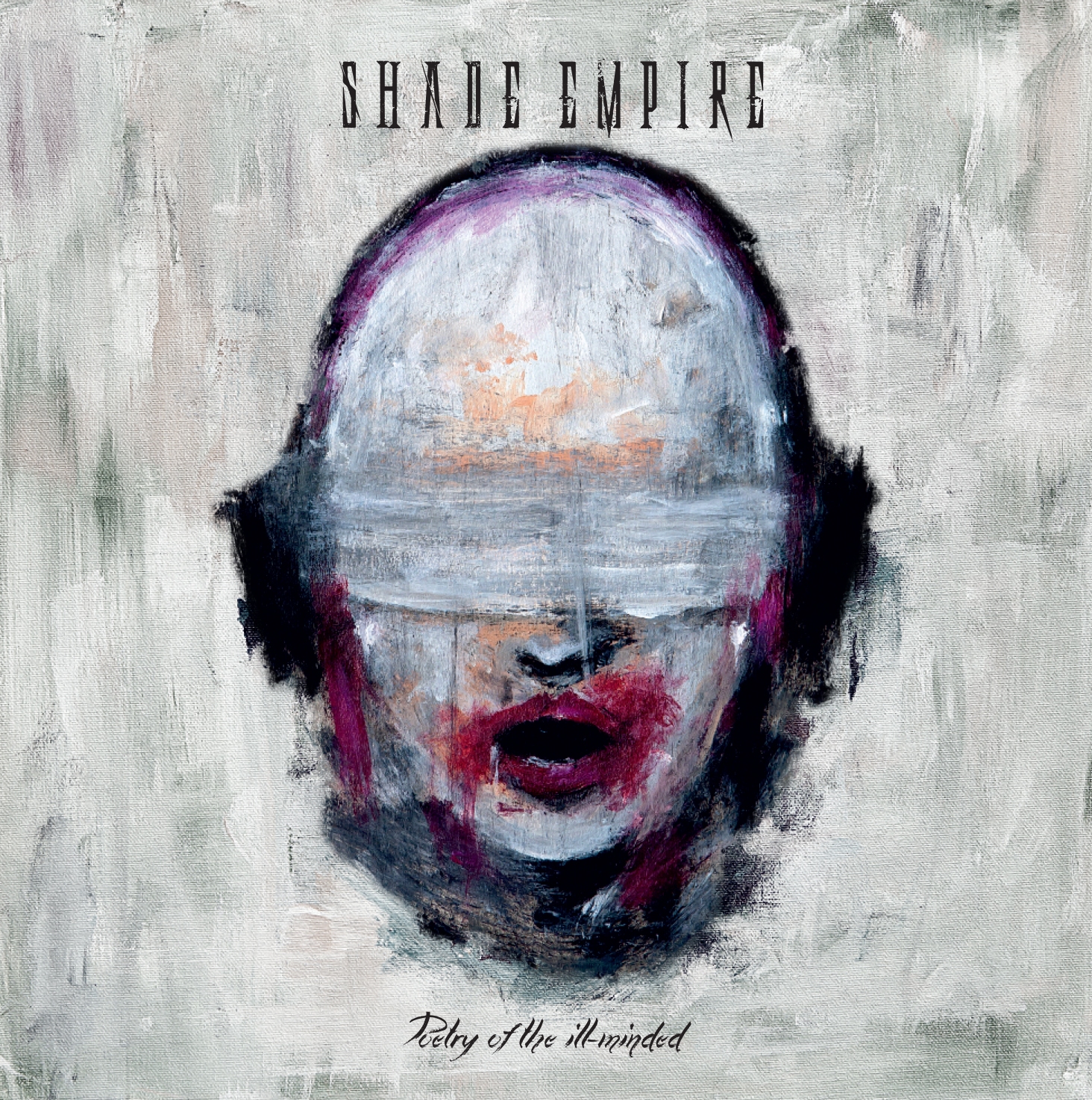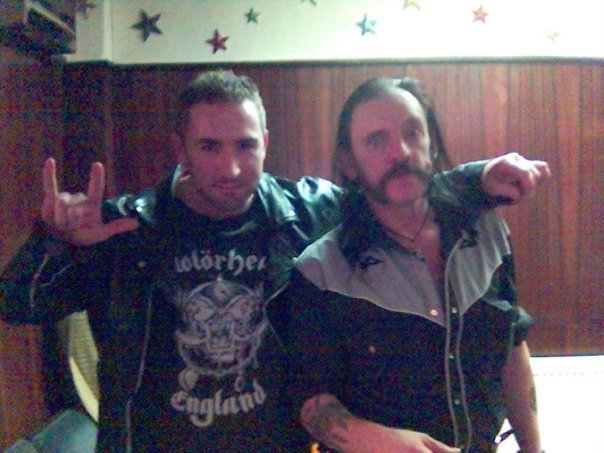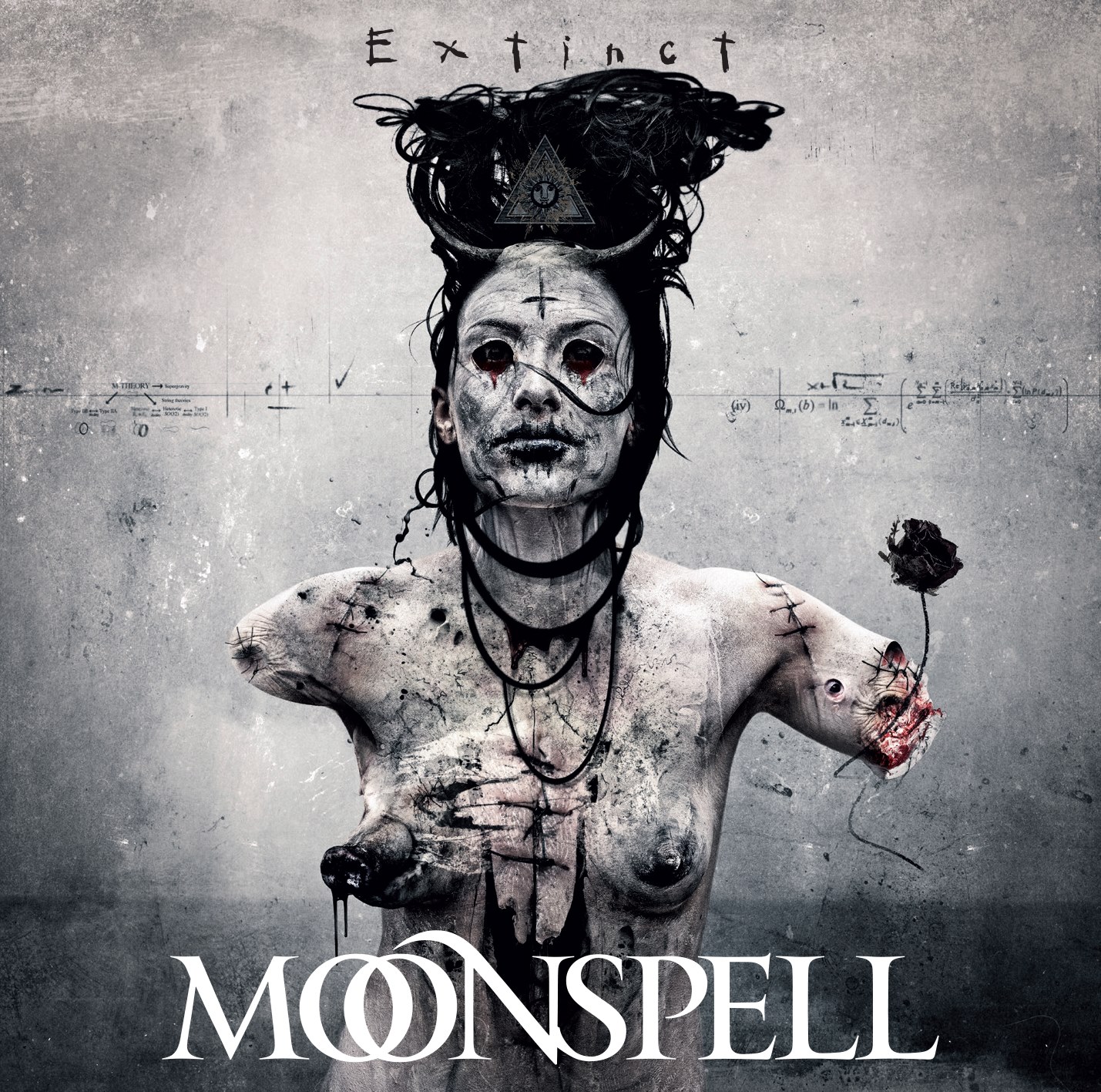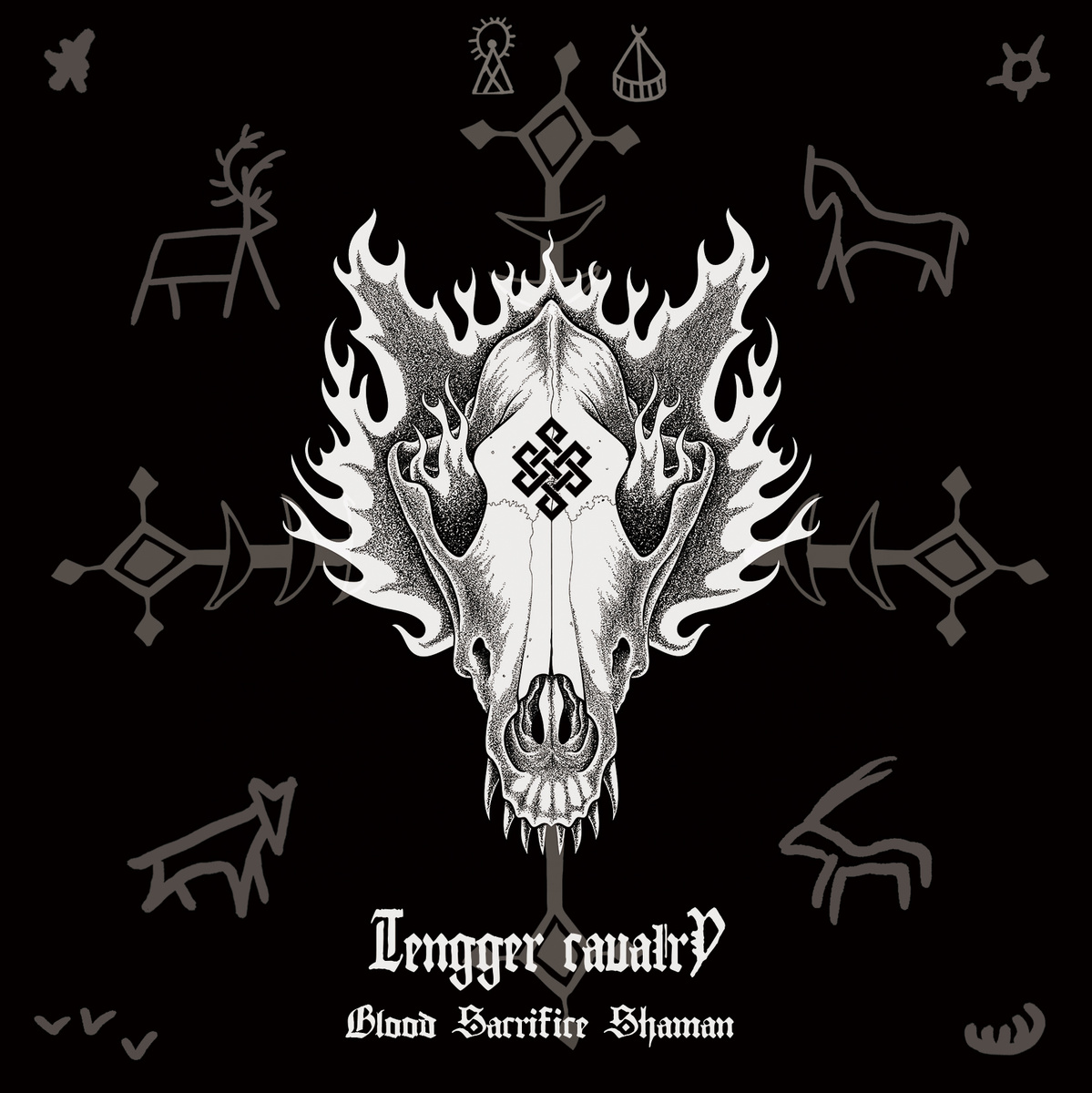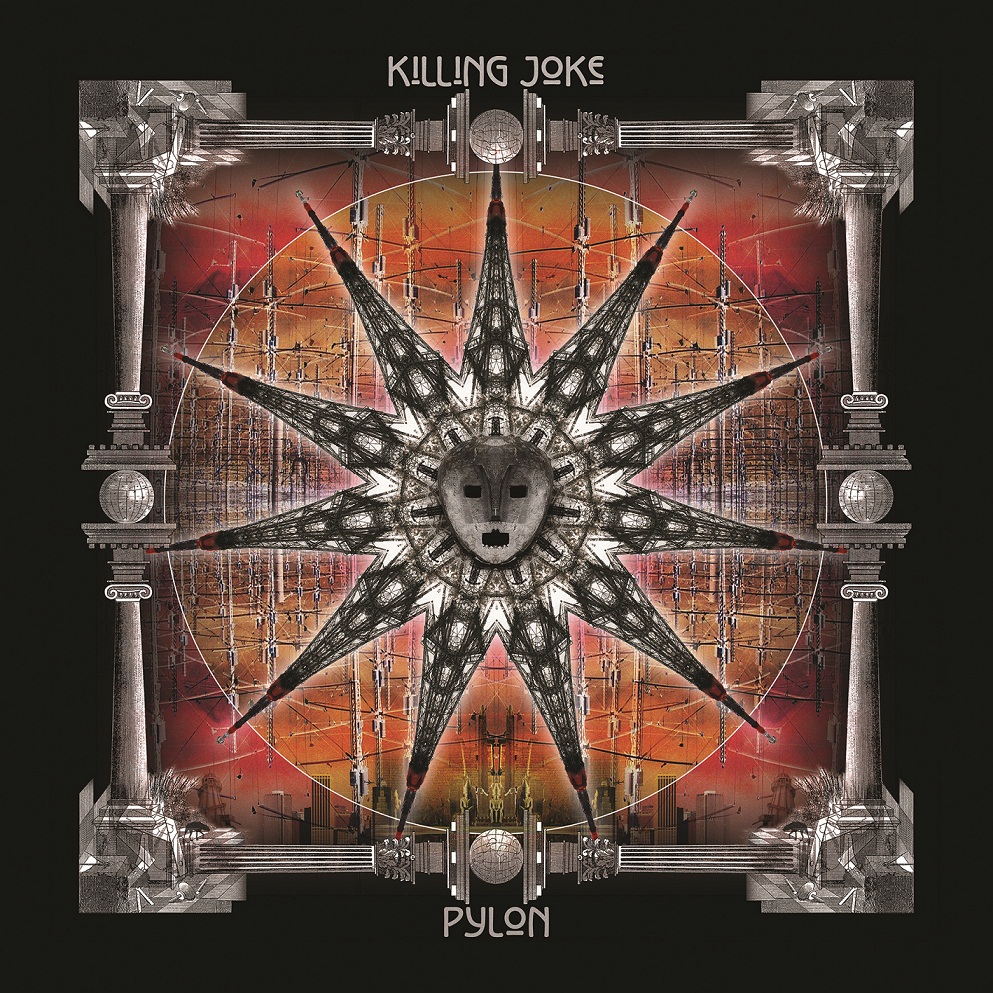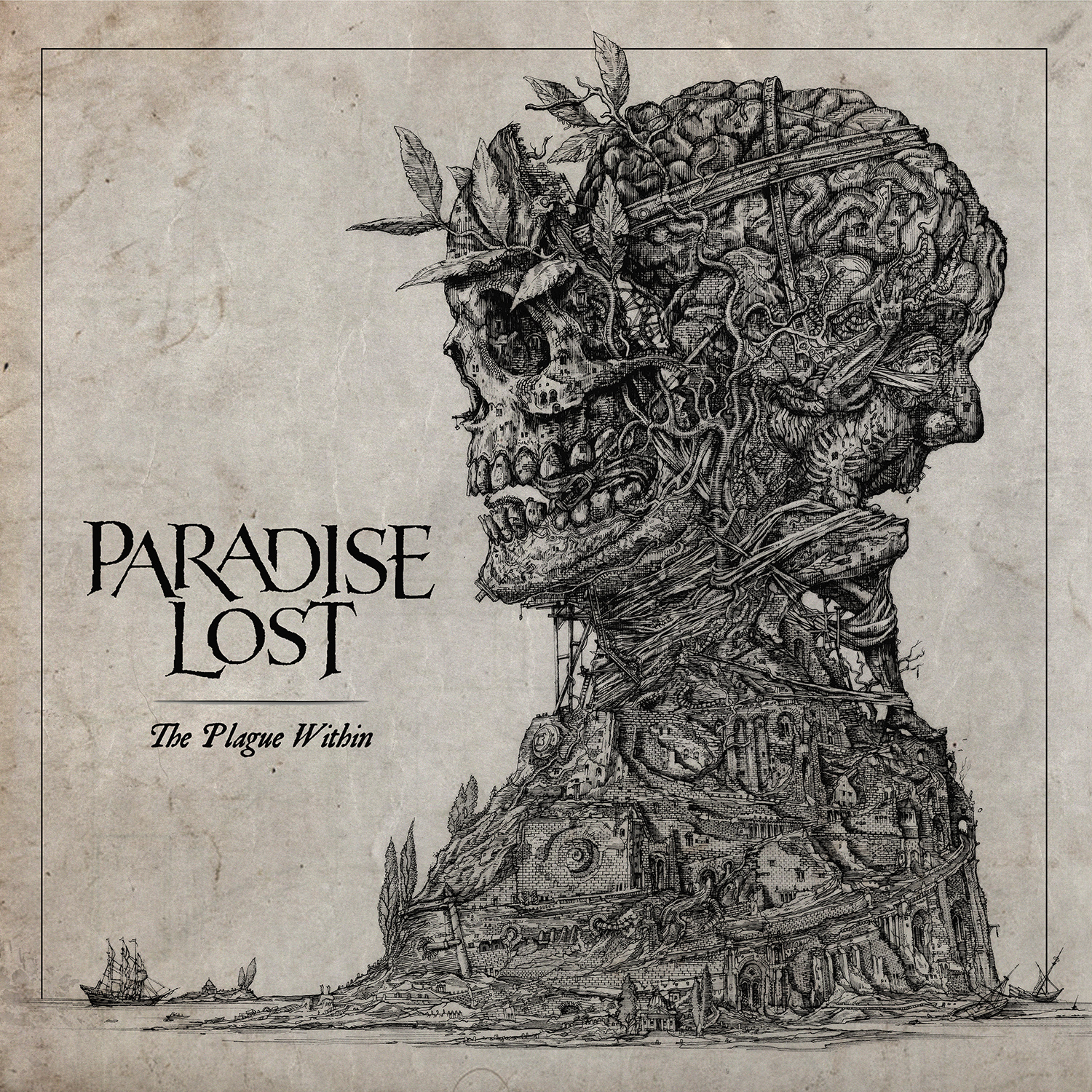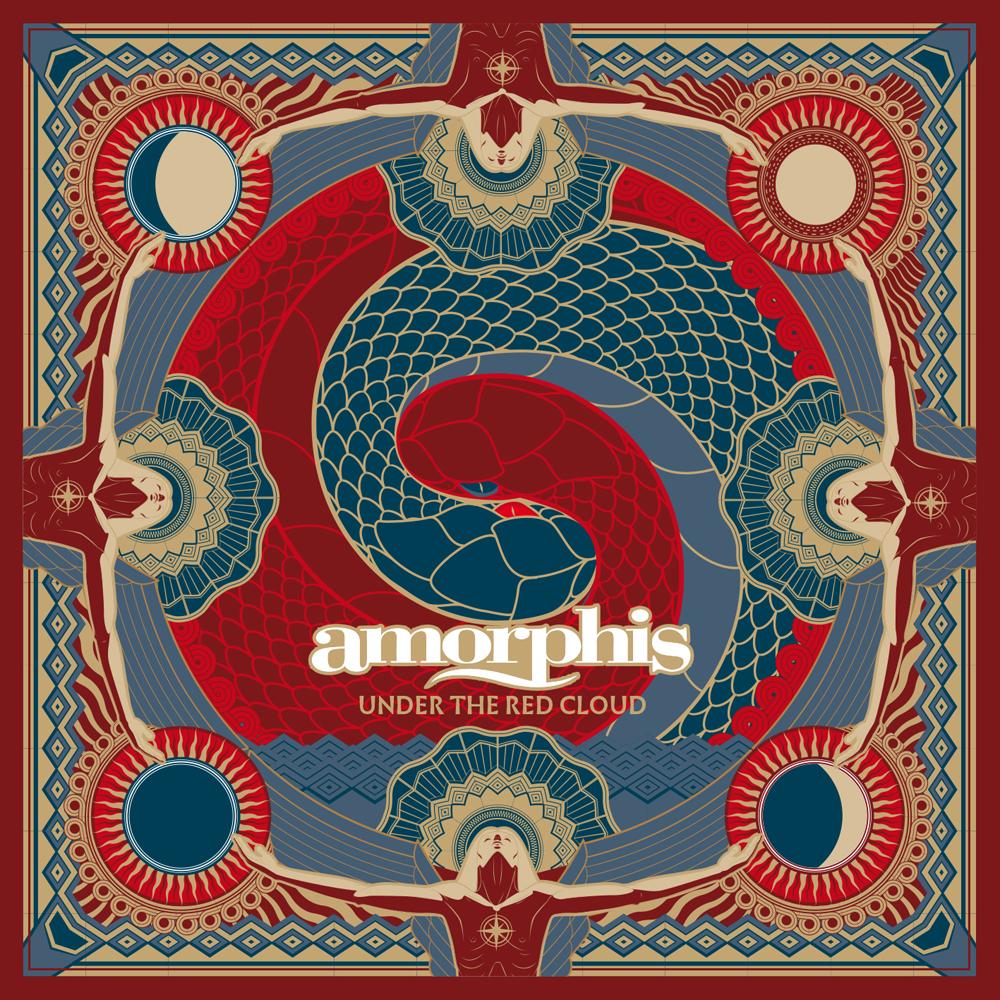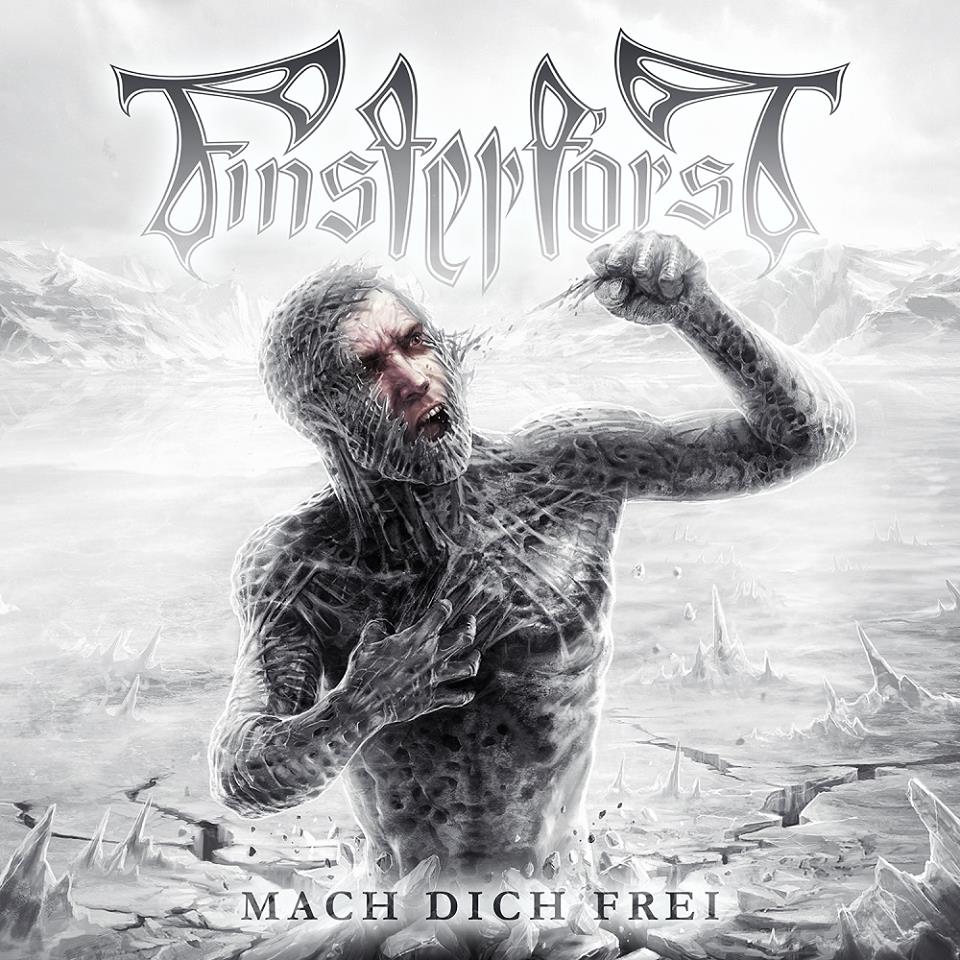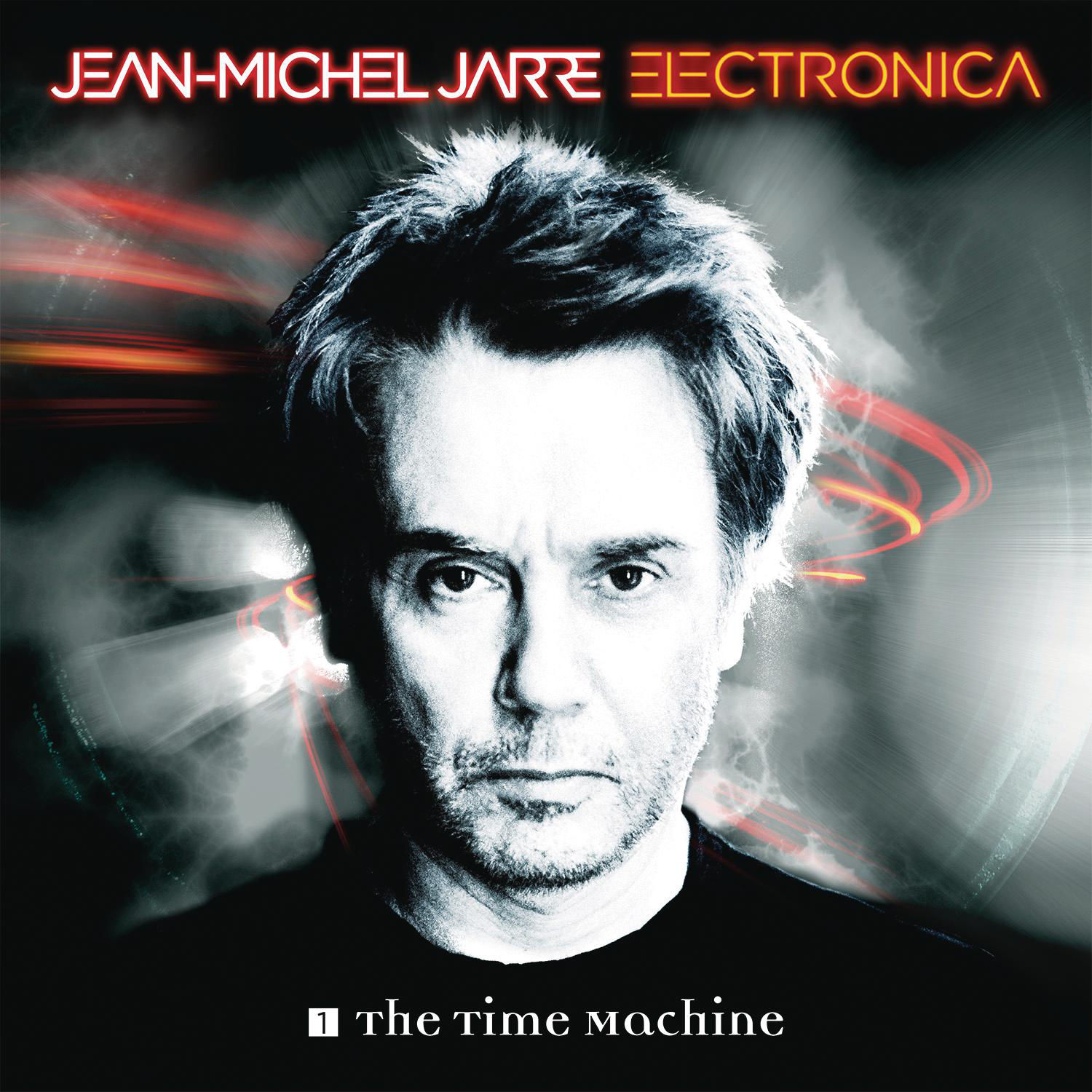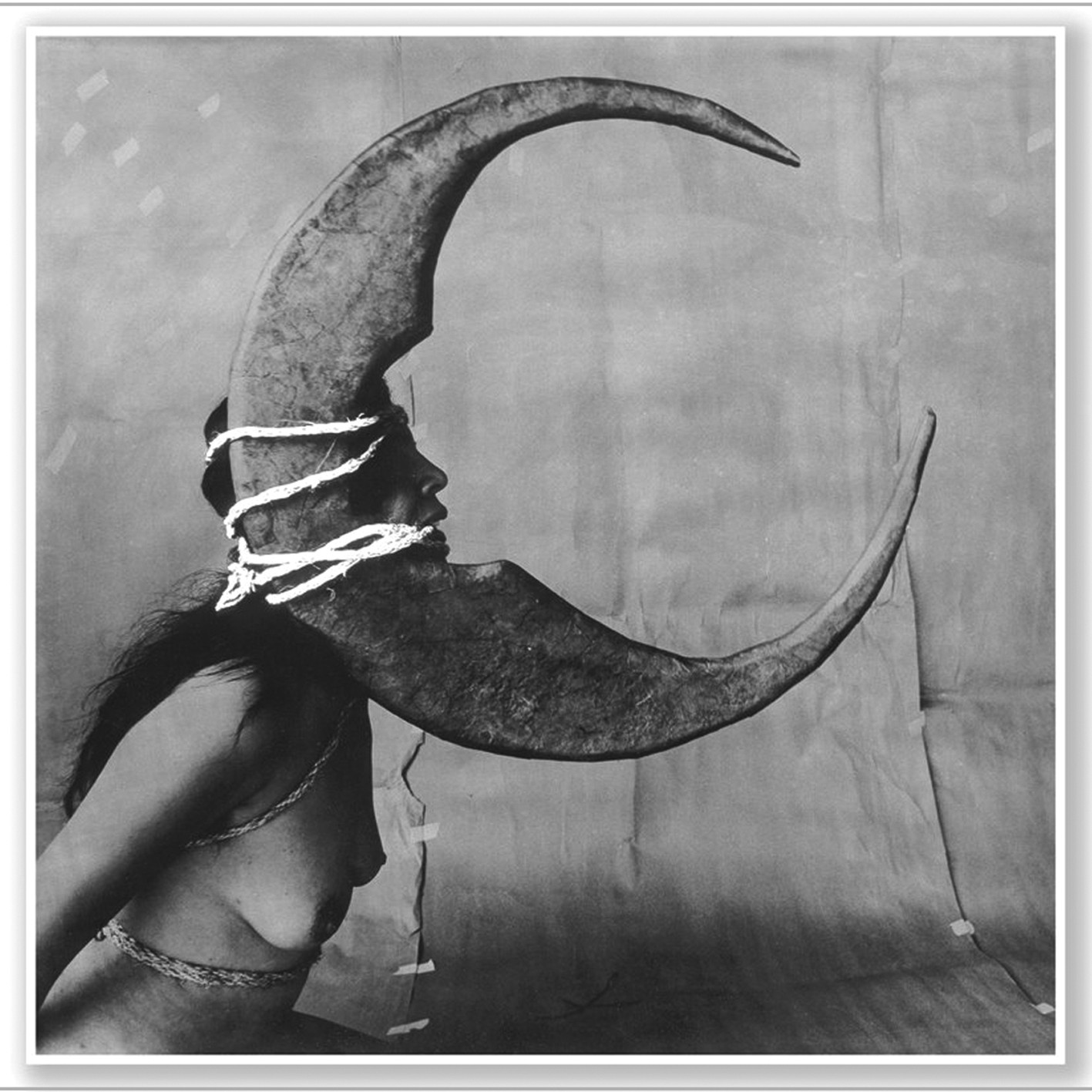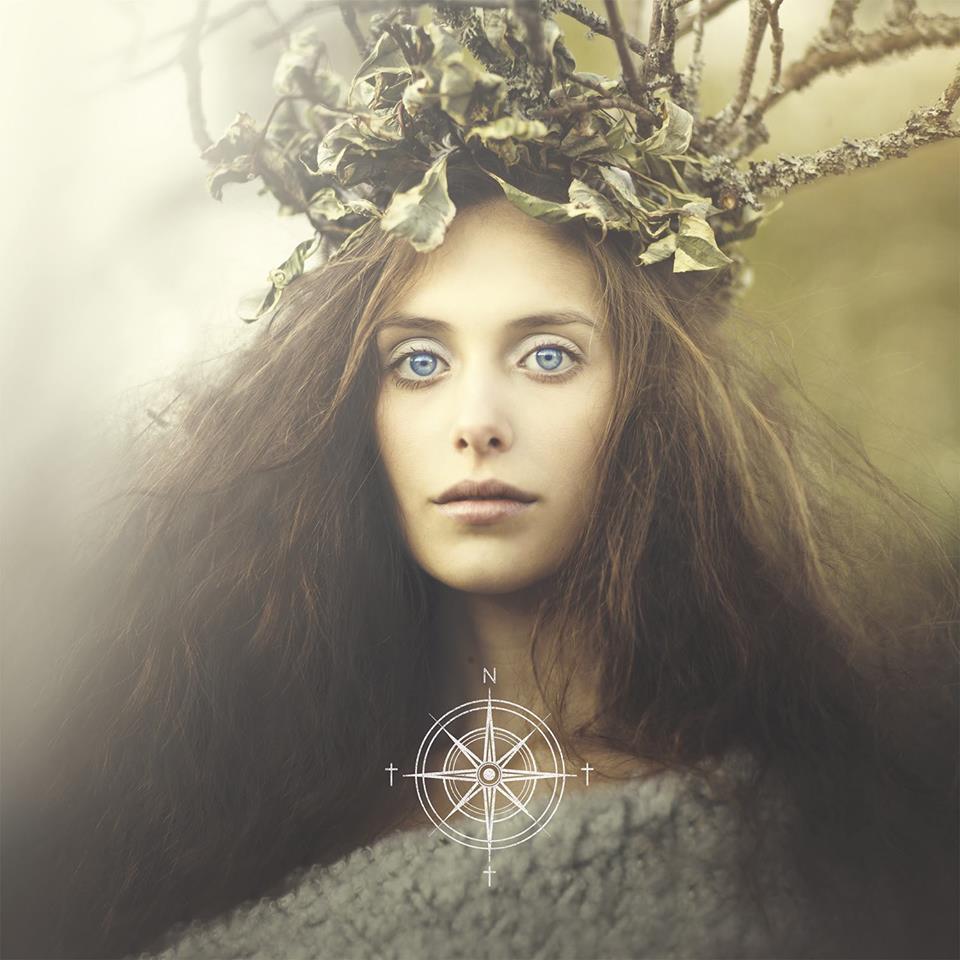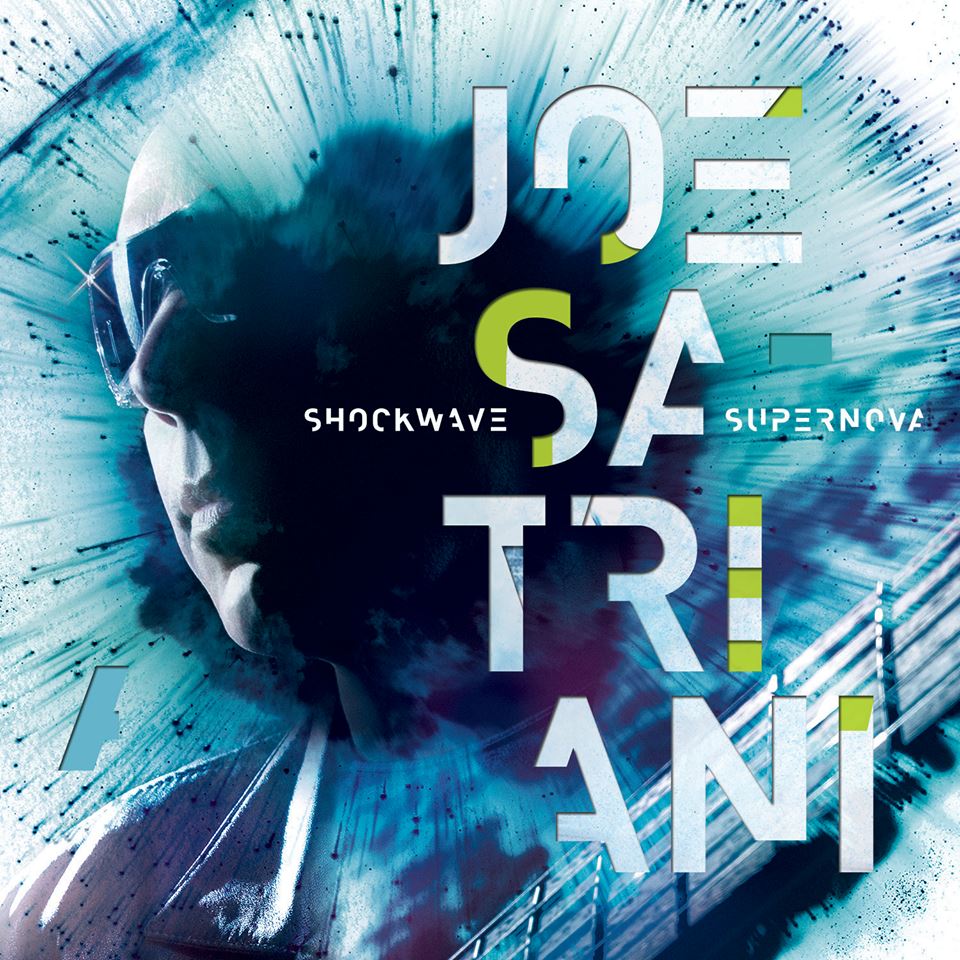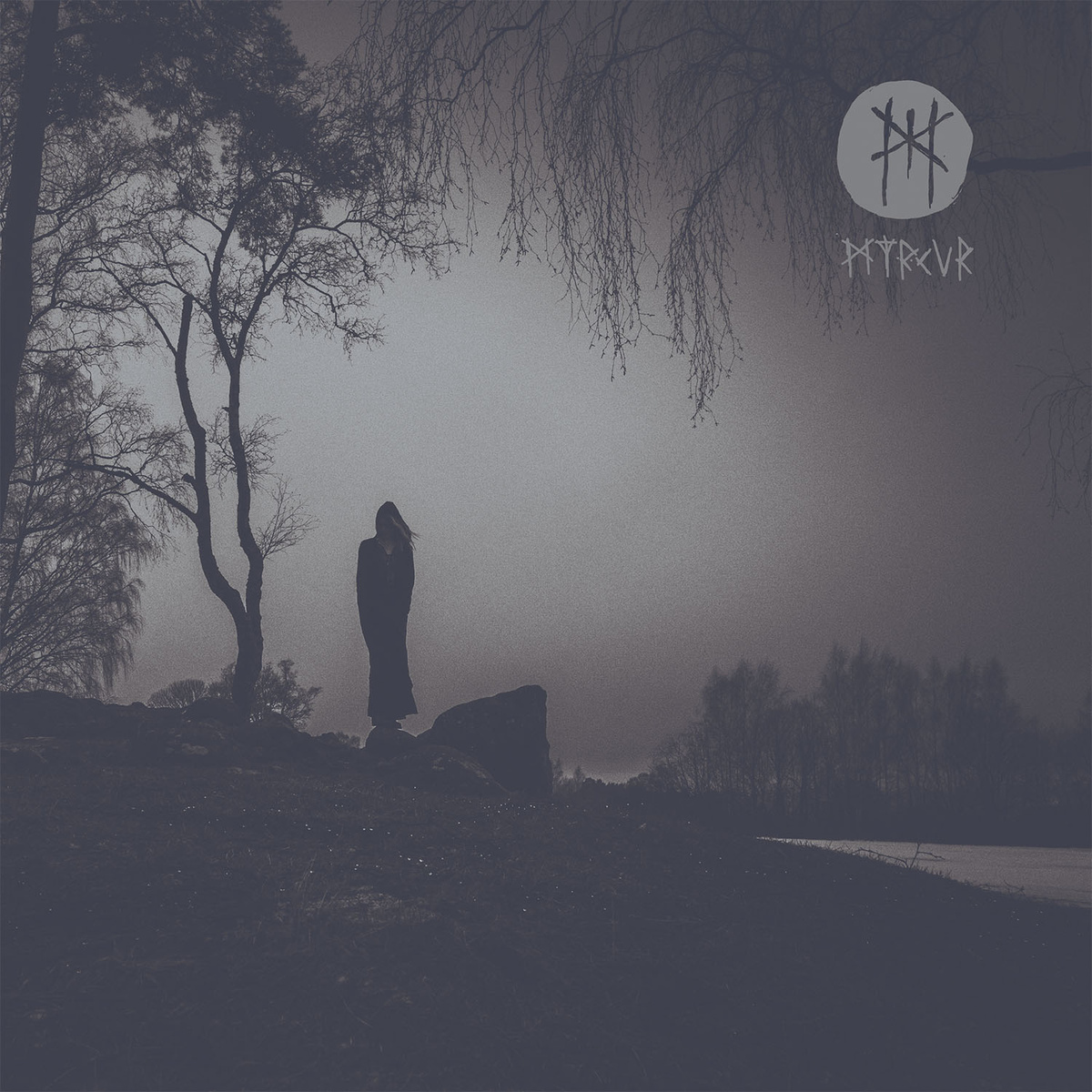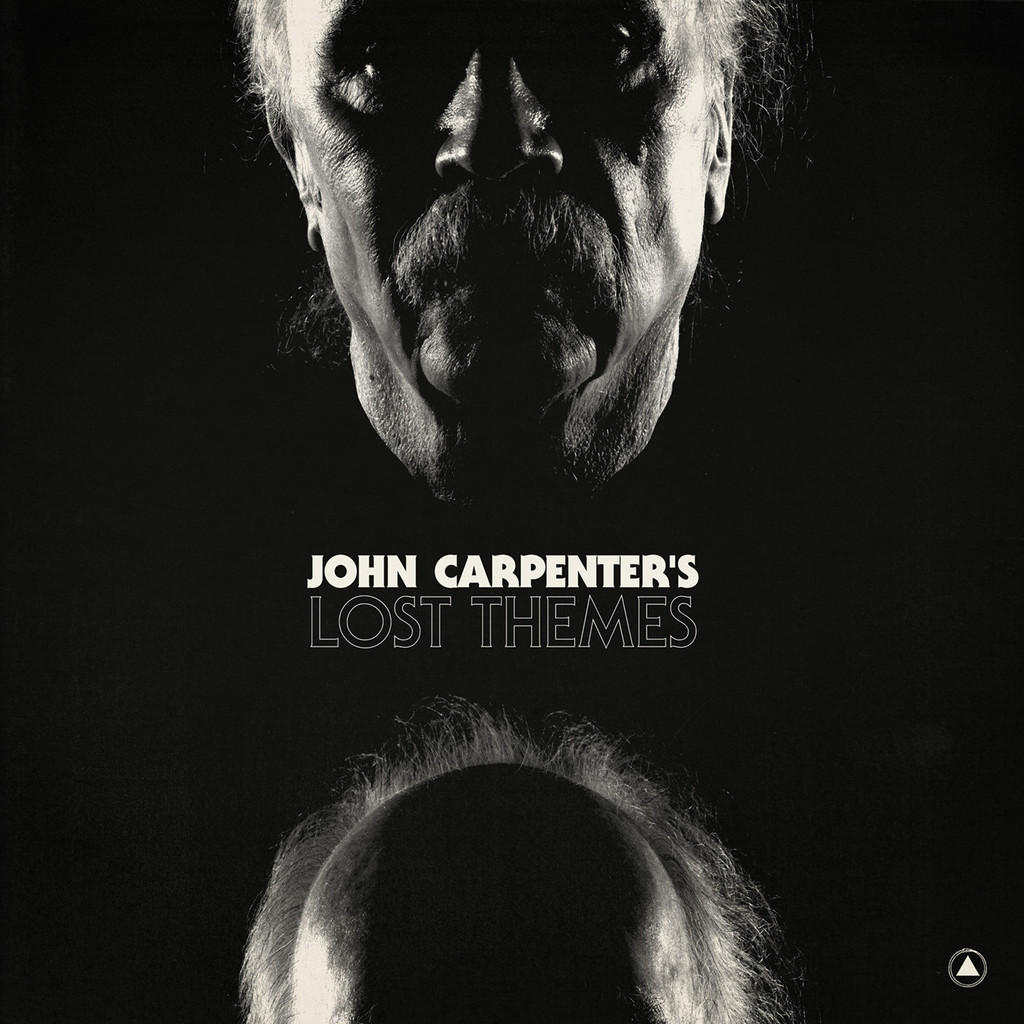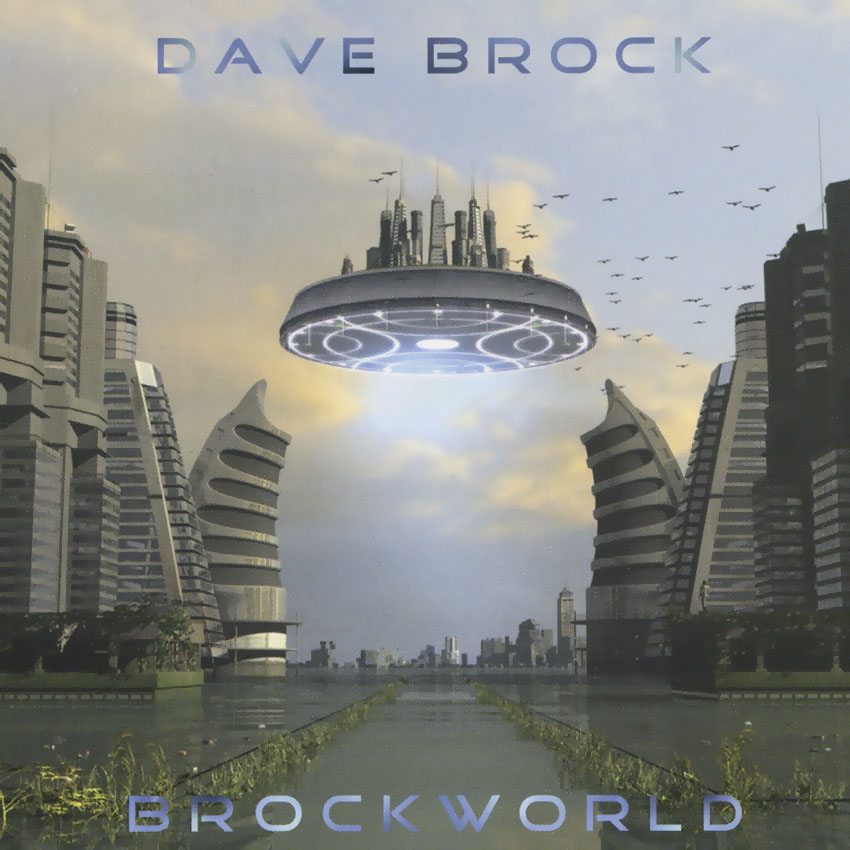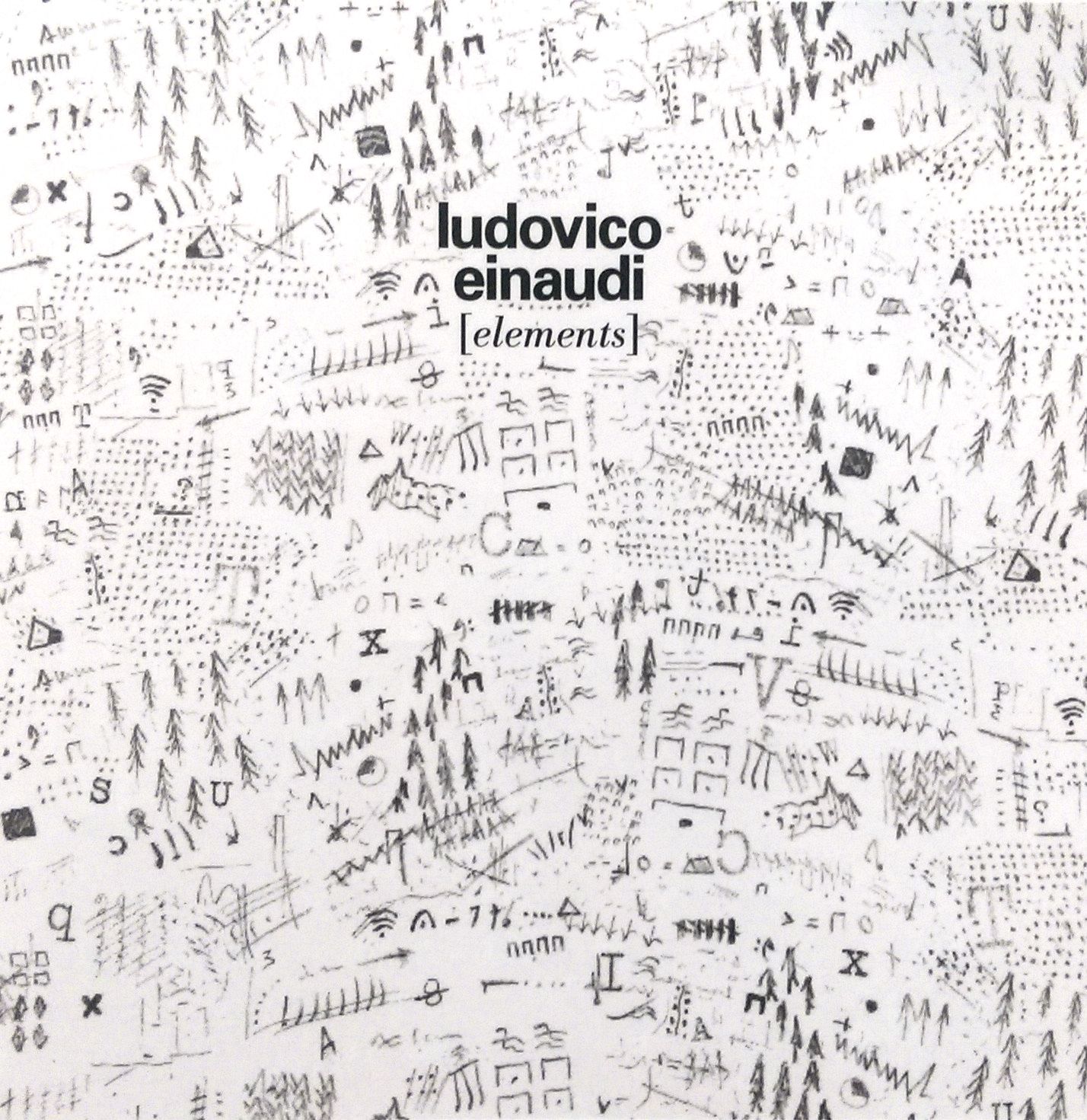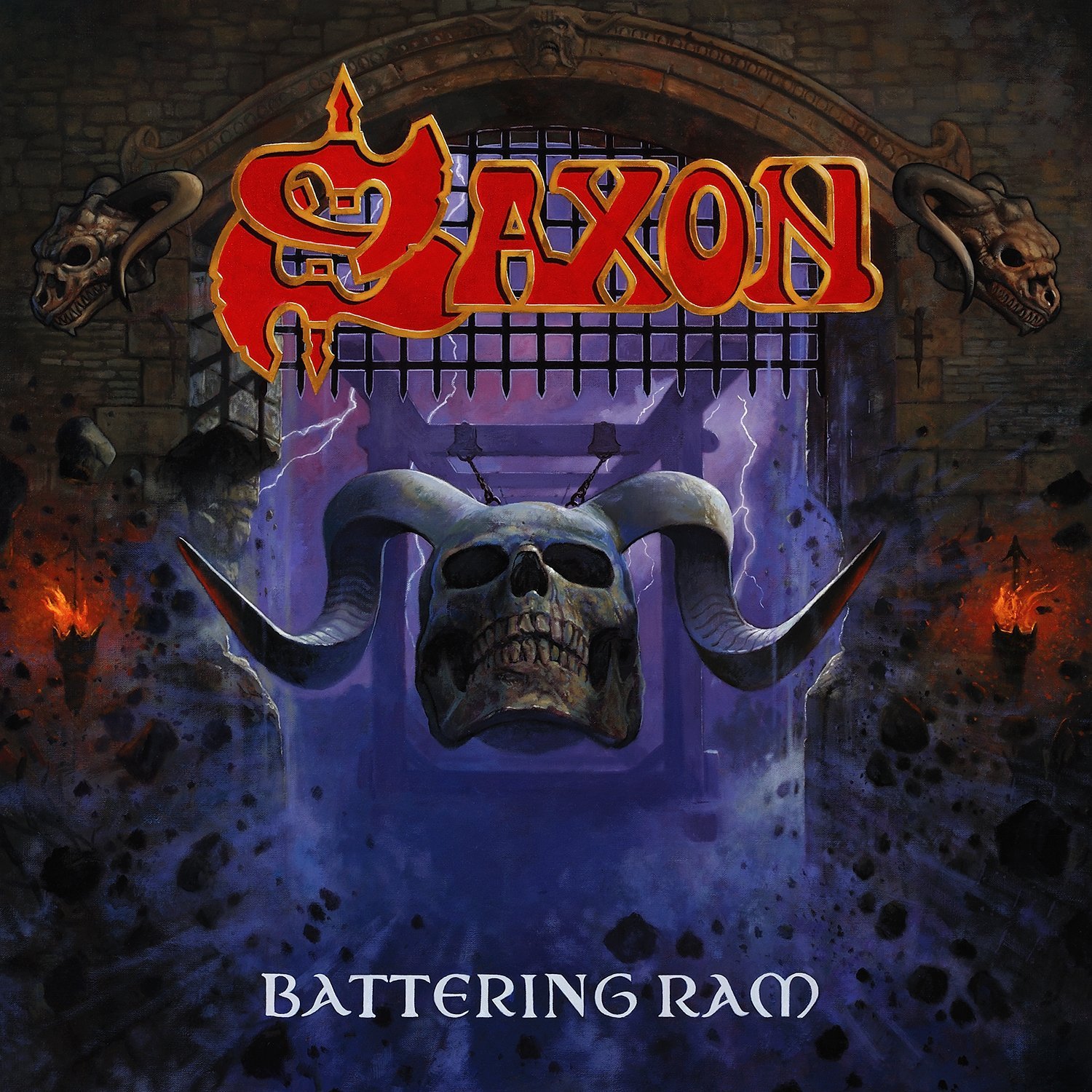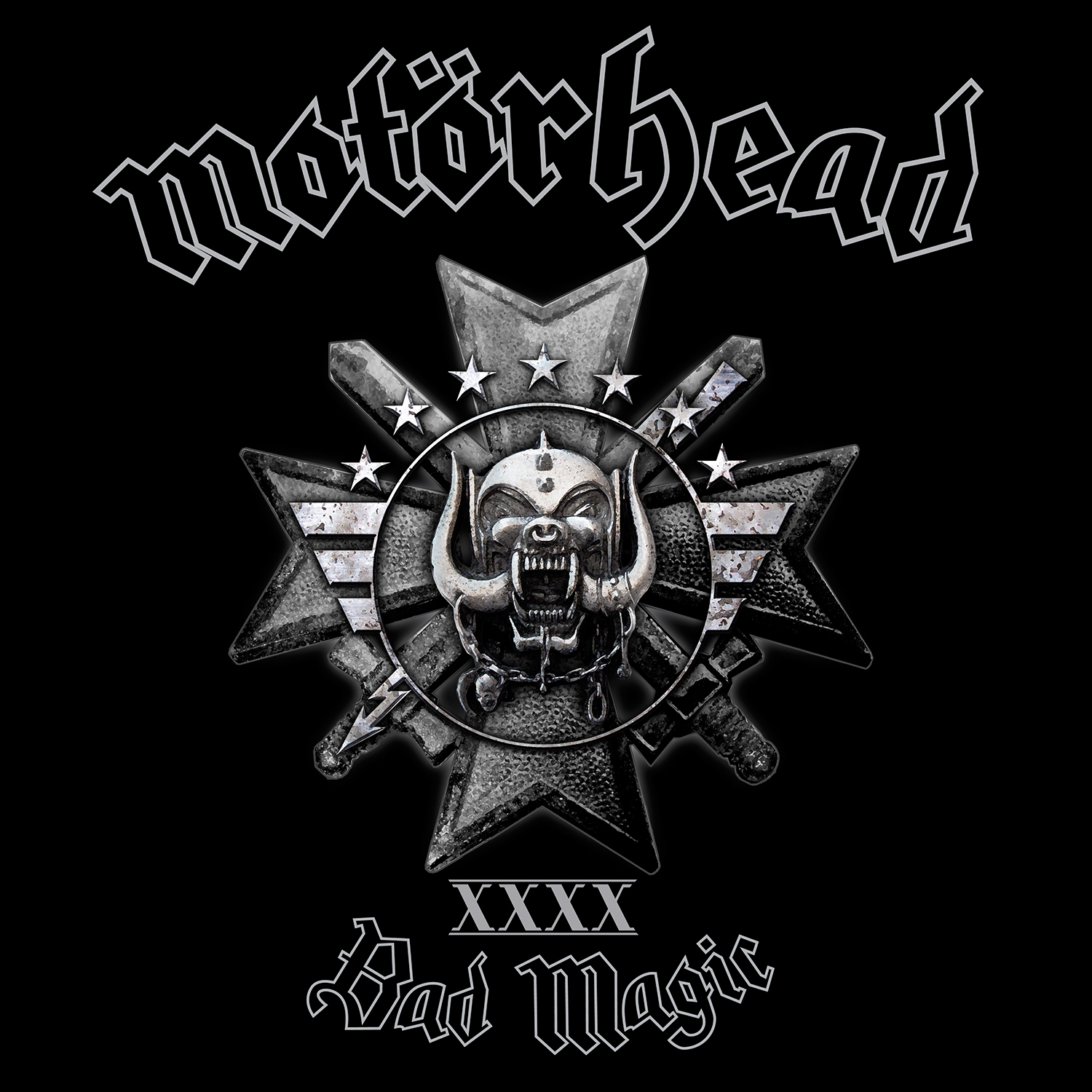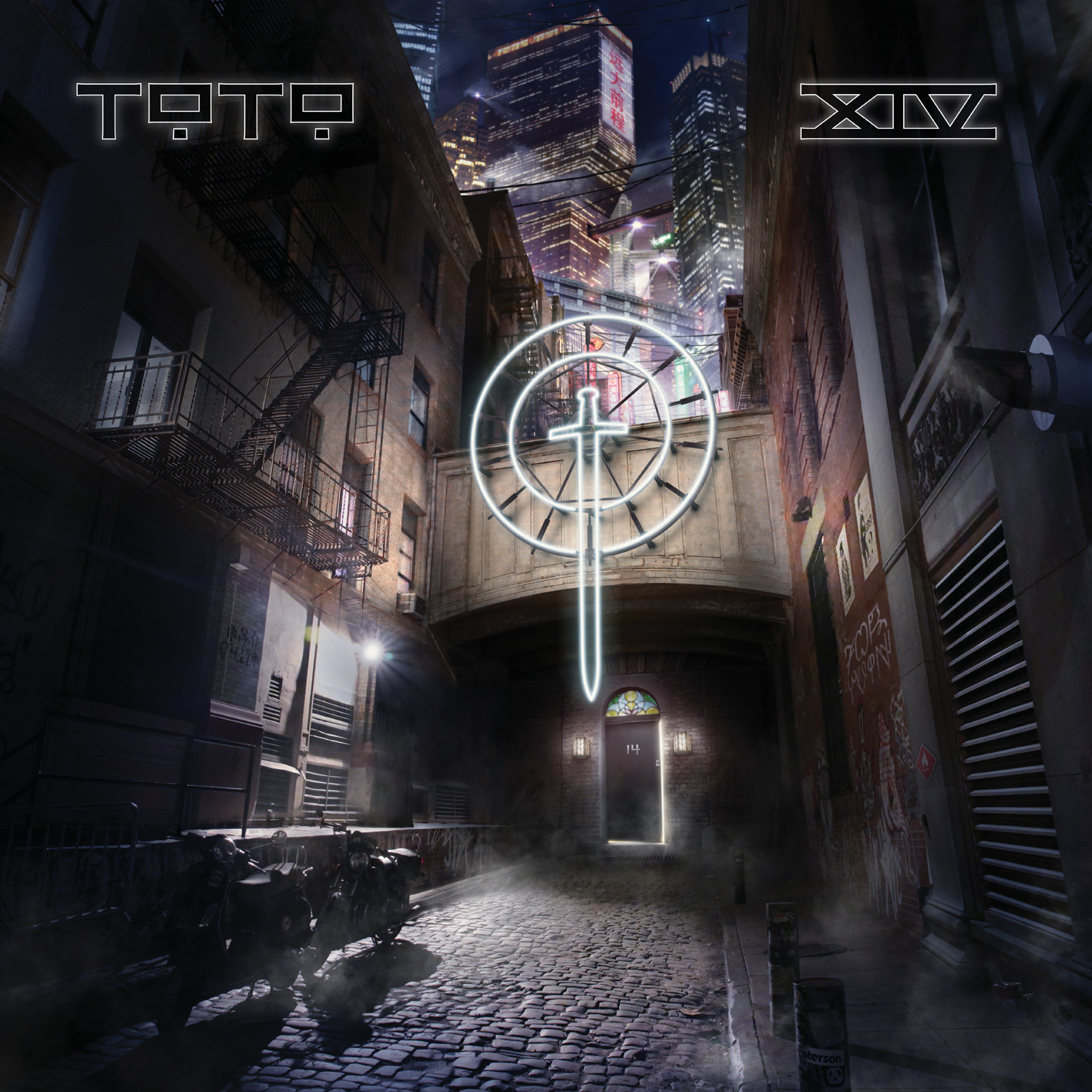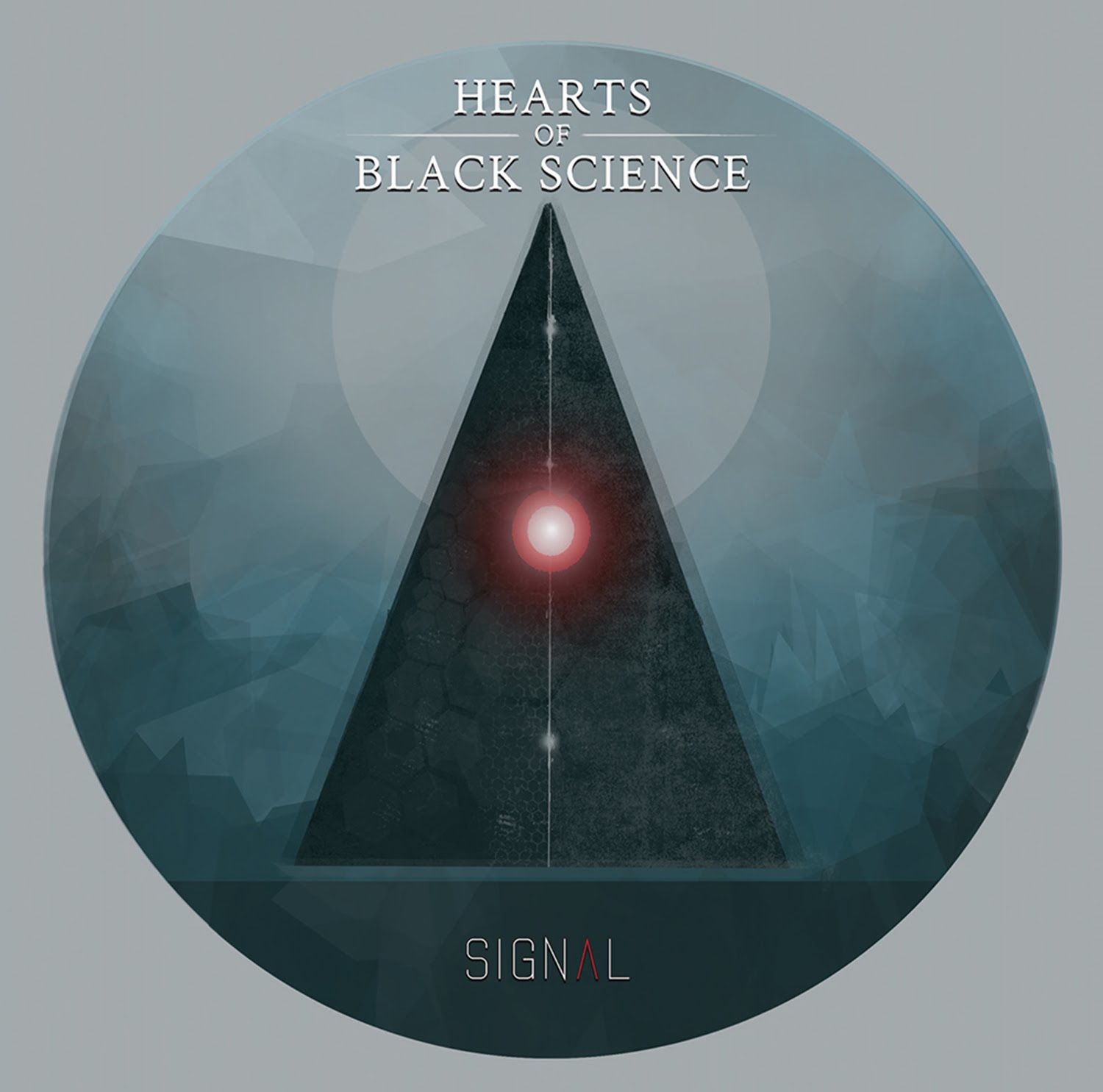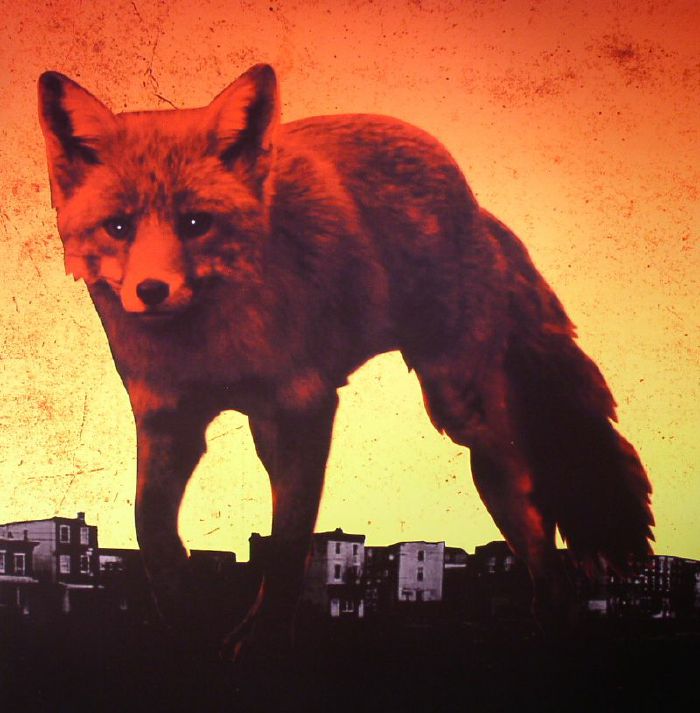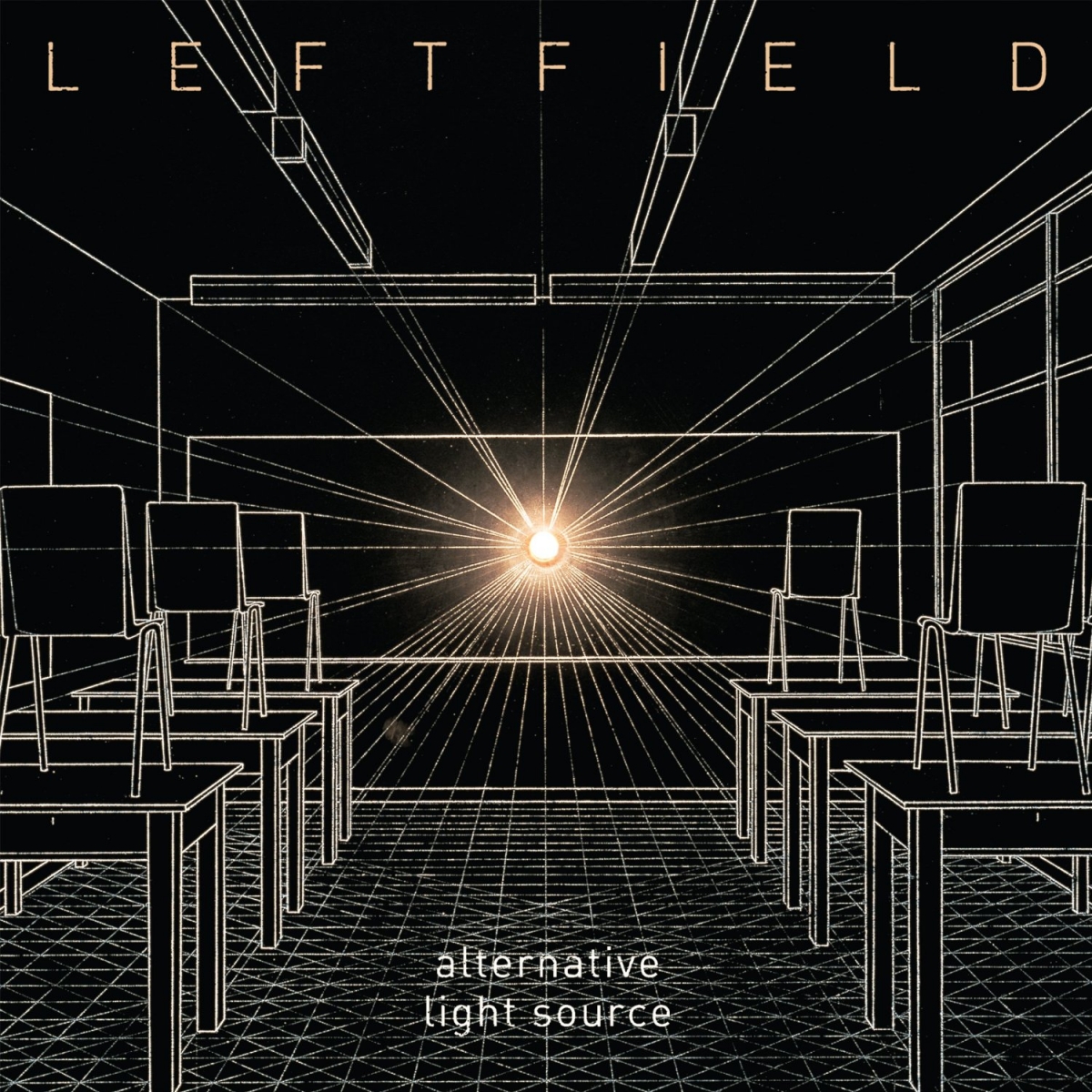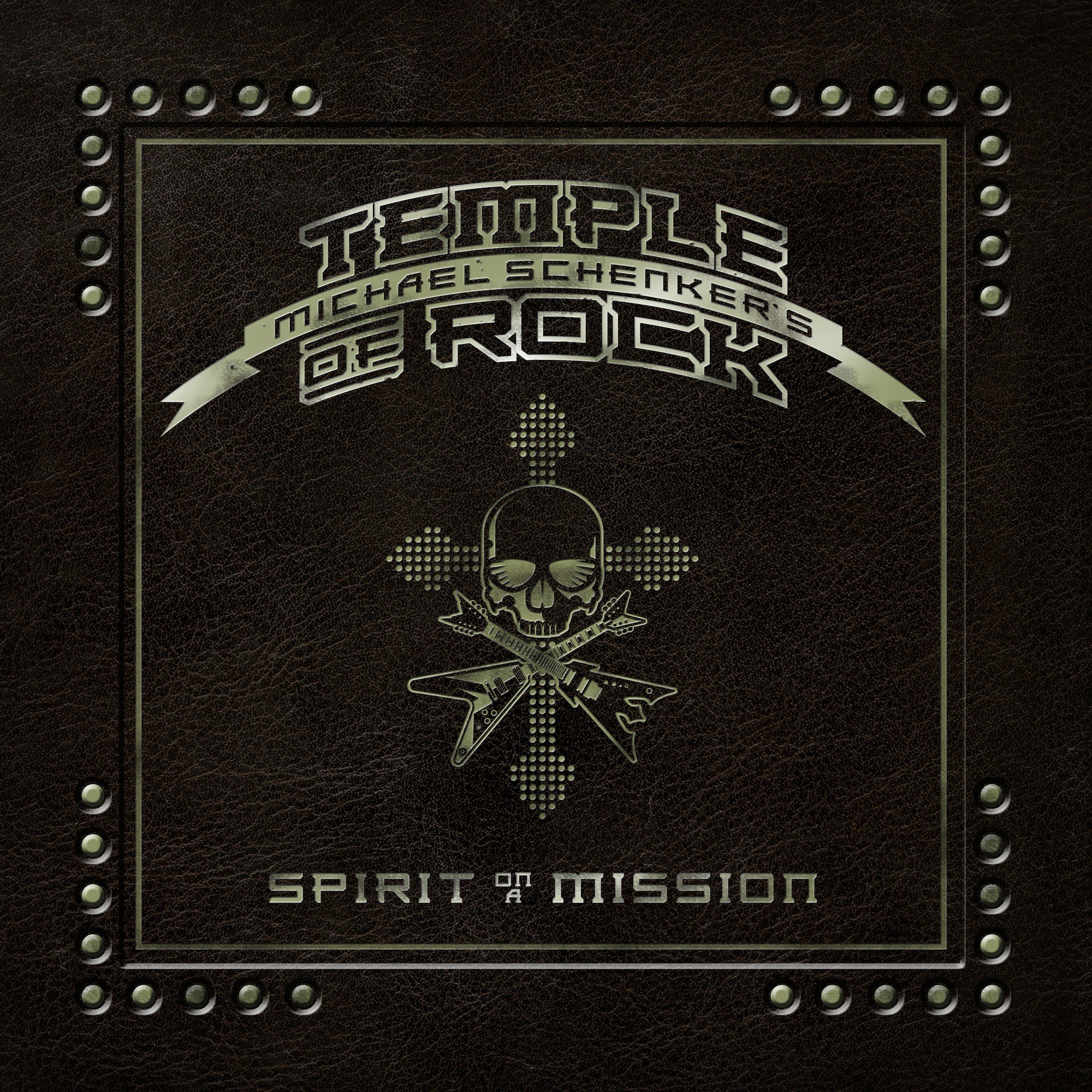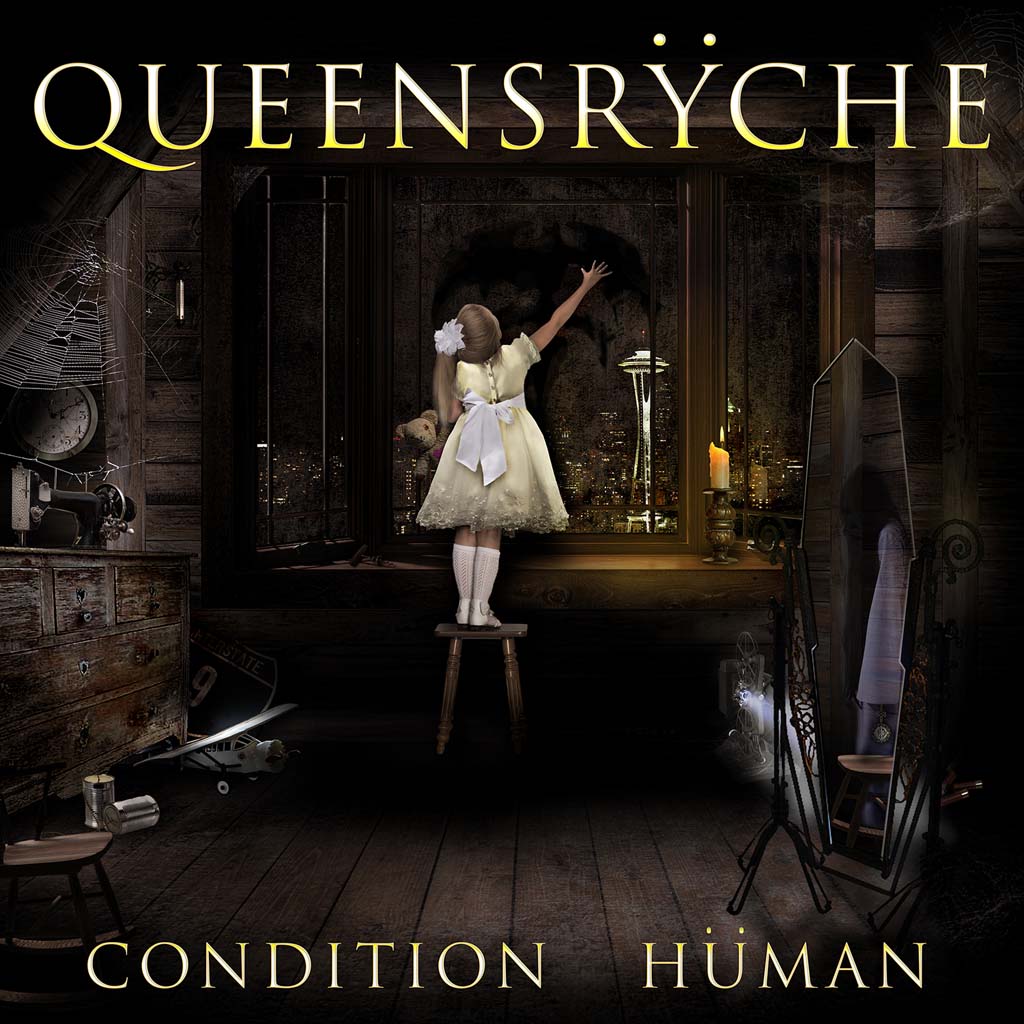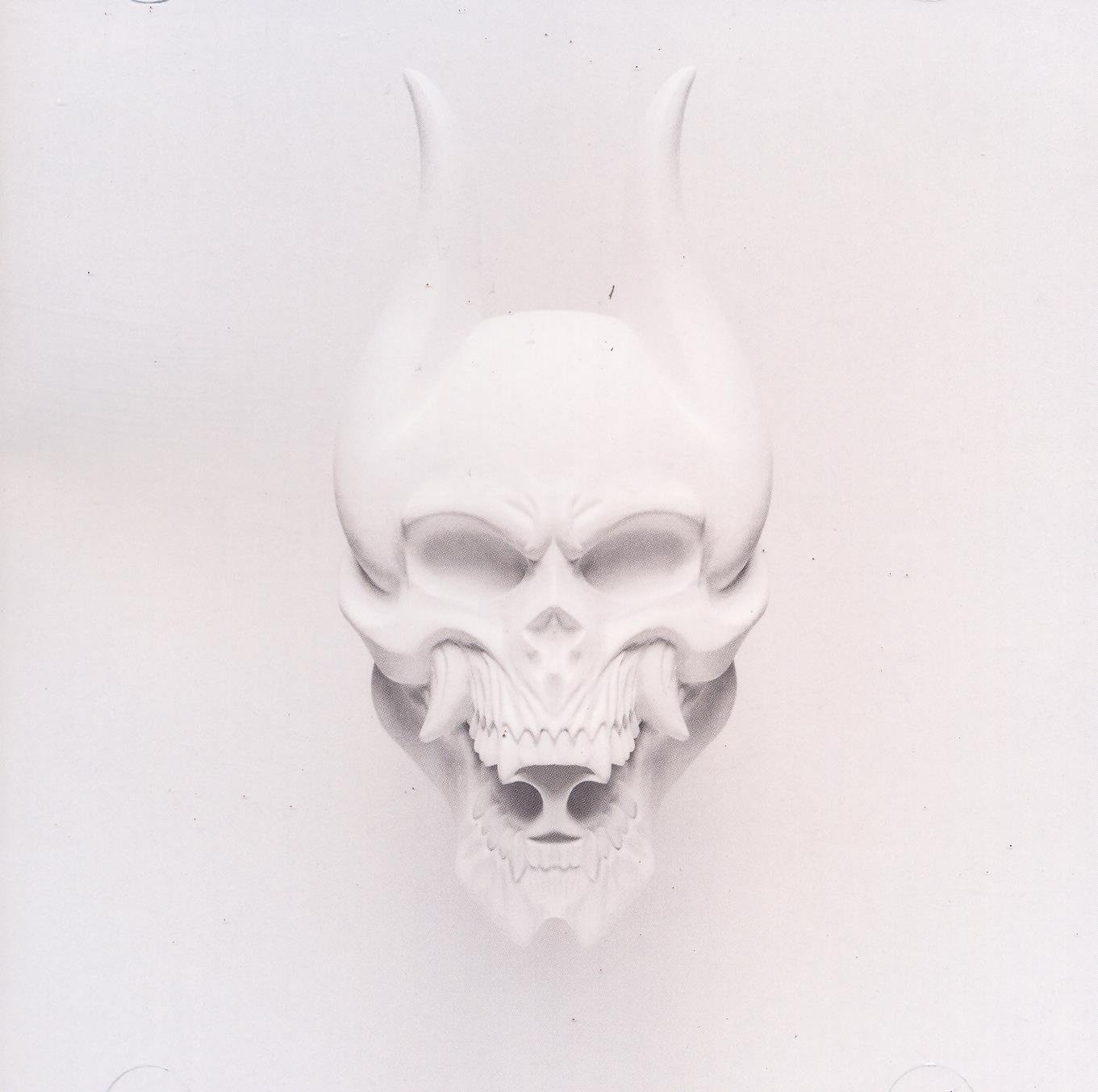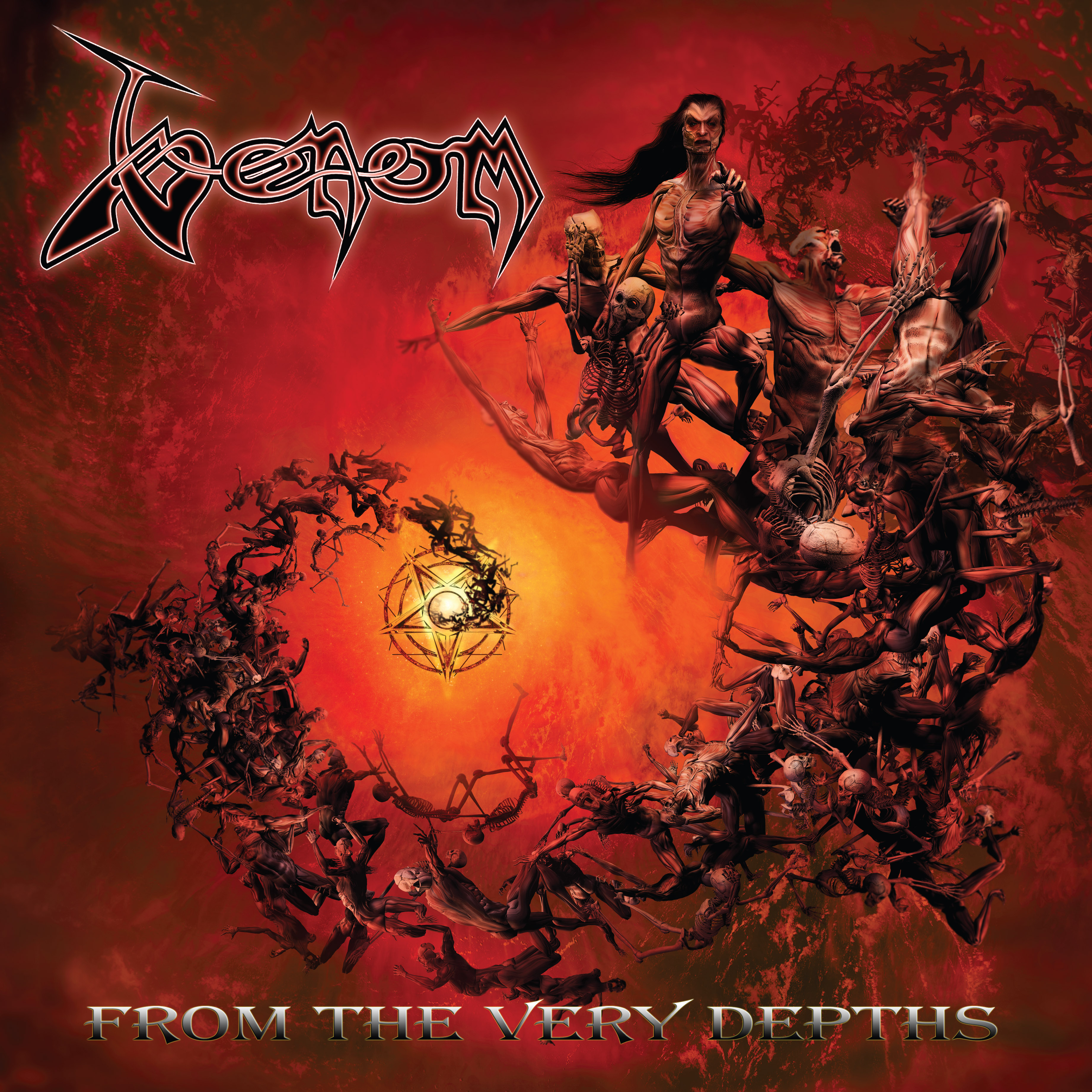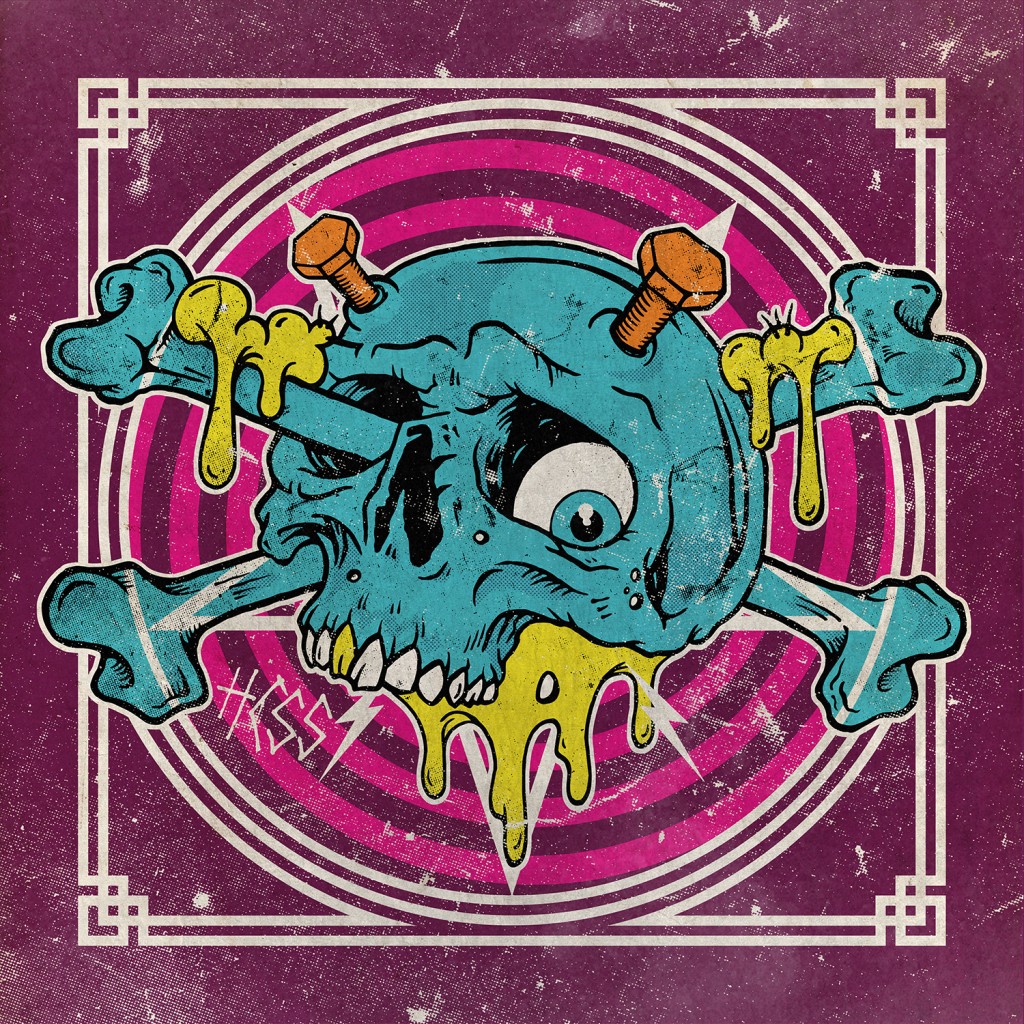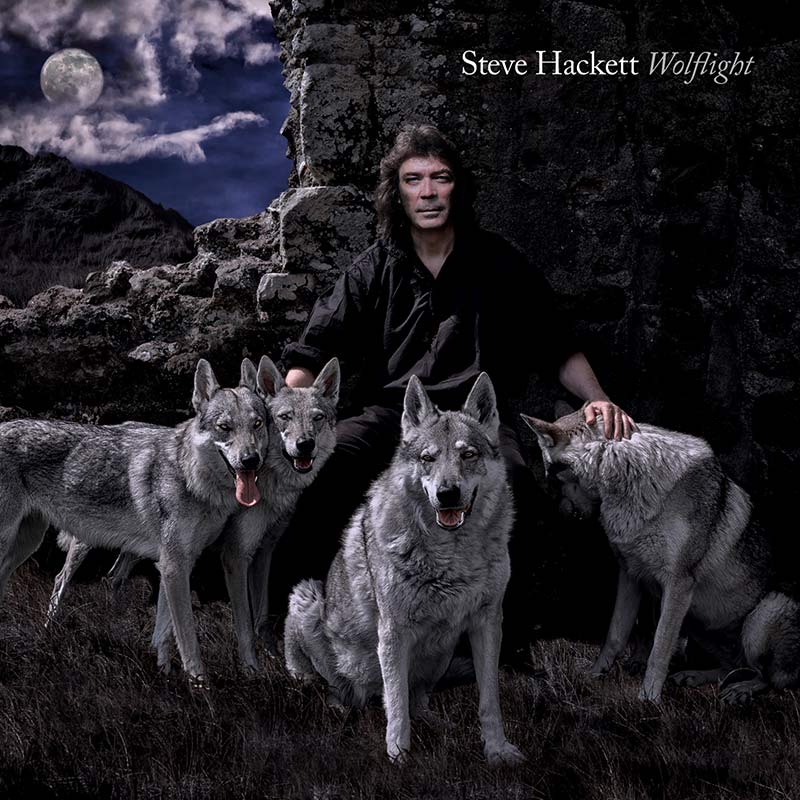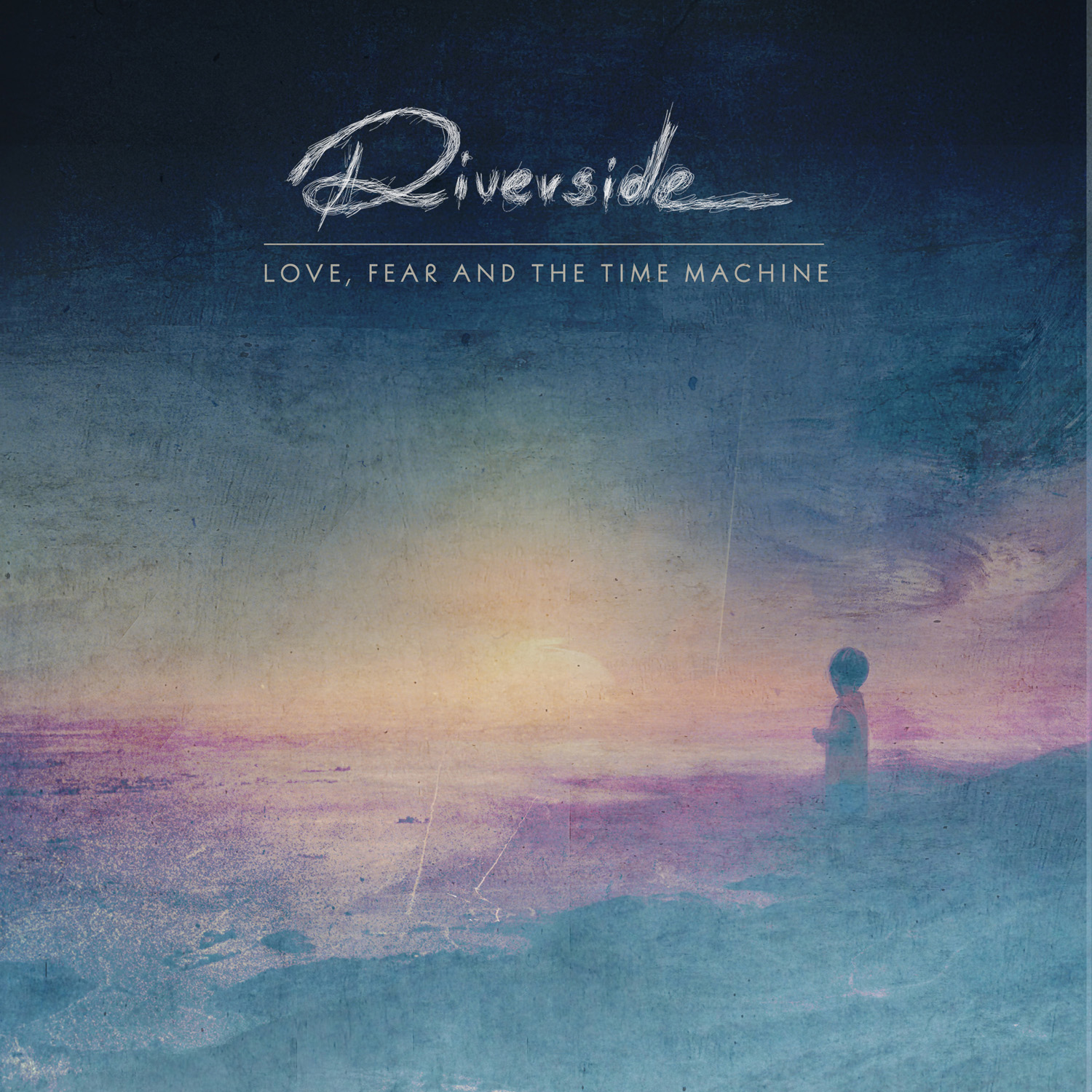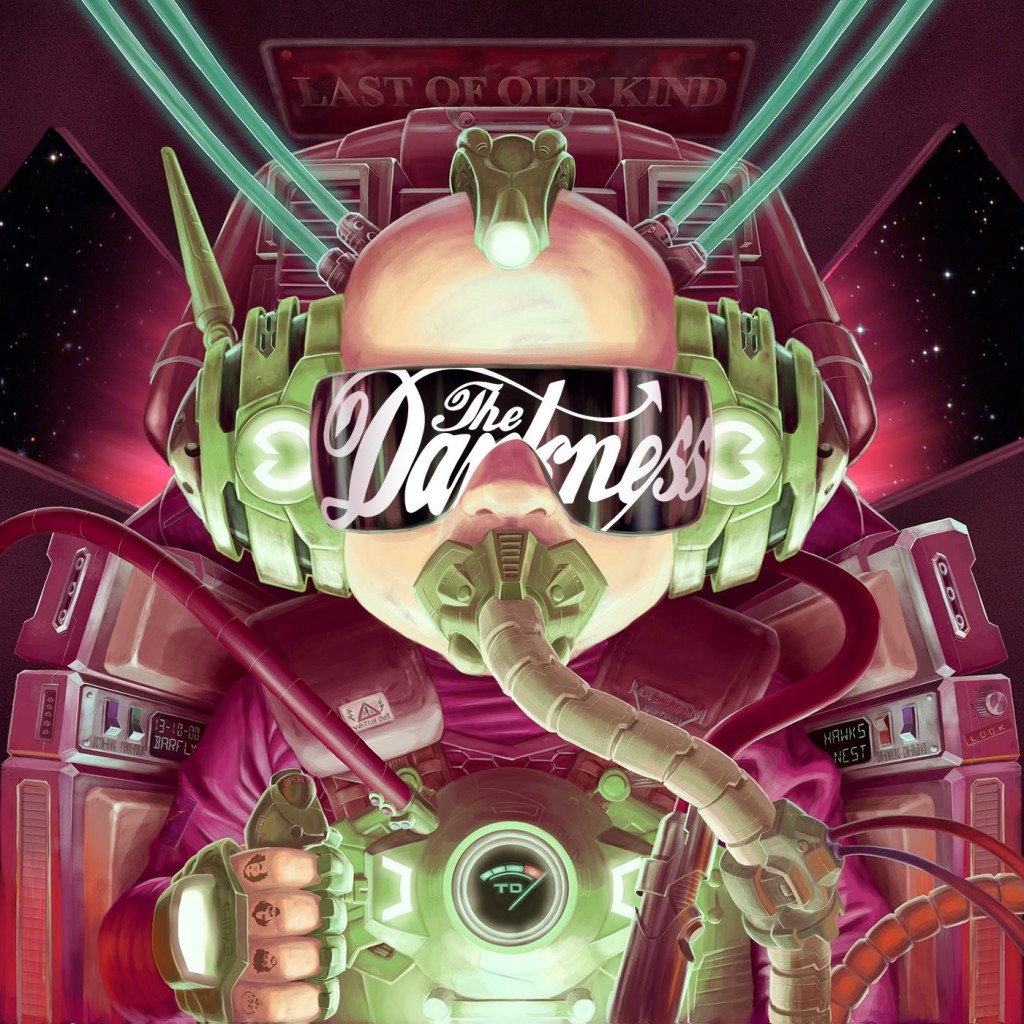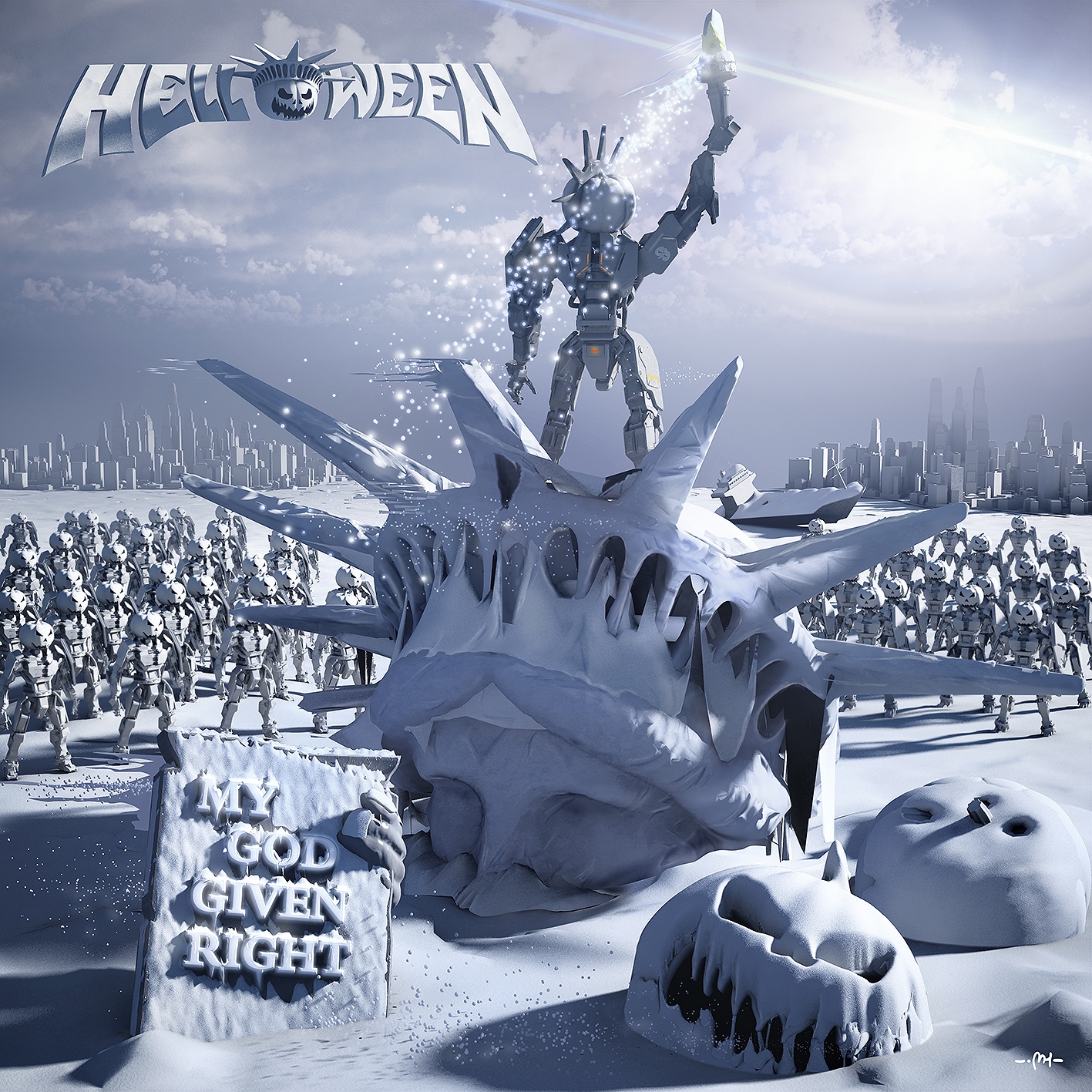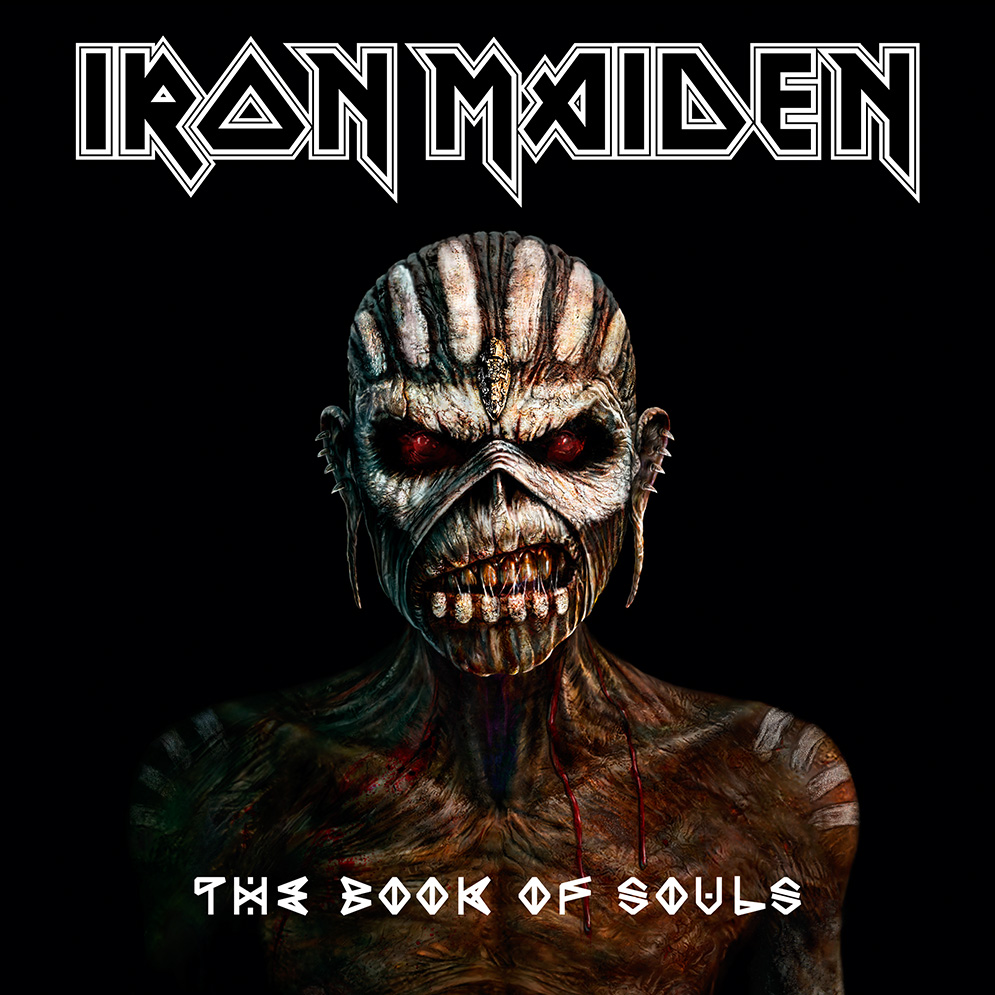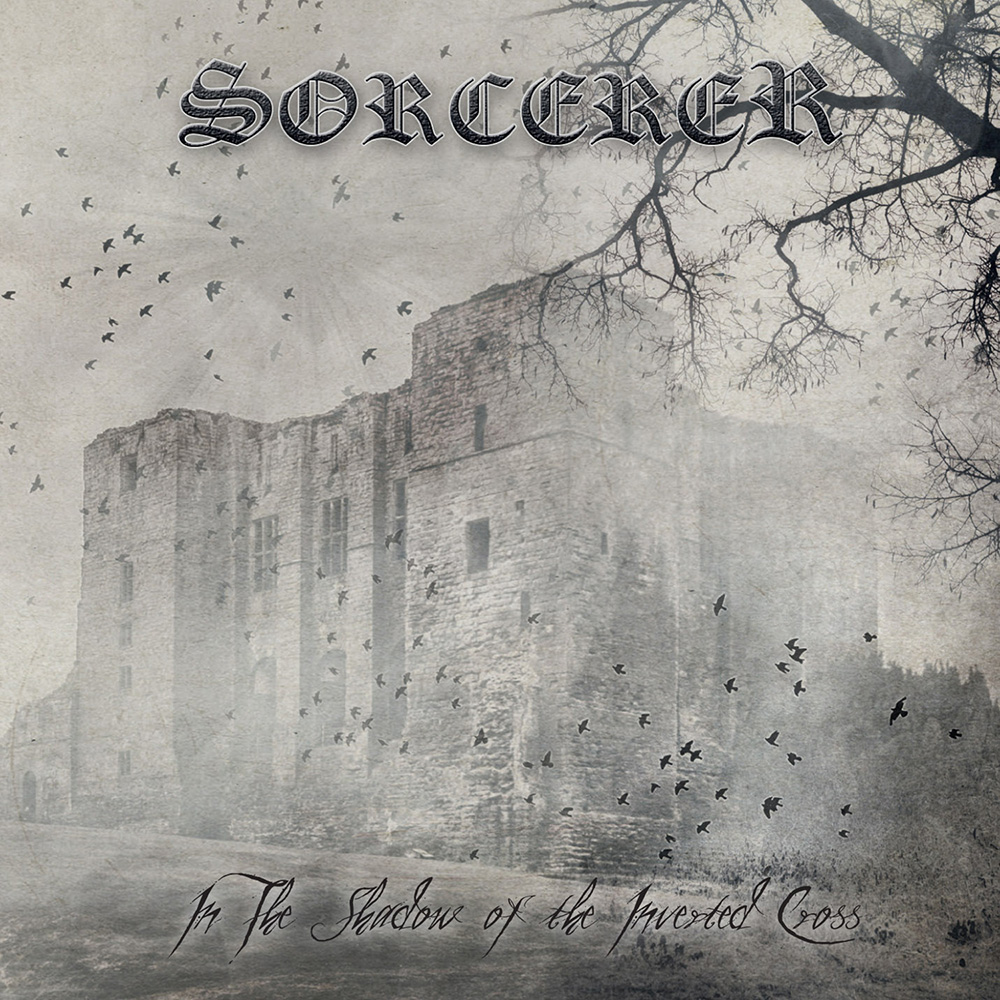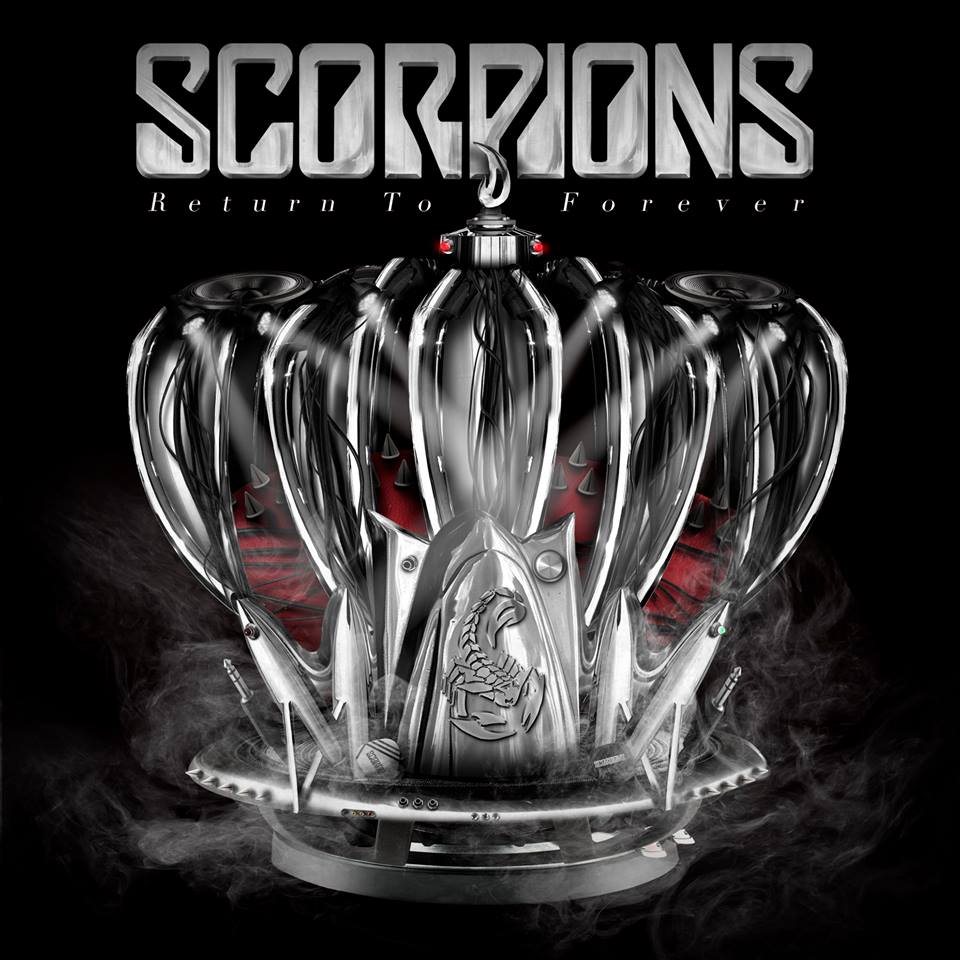My Top 25 Albums of 2019
1. Rotting Christ – The Heretics

In the same musical vein as its predecessor Rituals, this is epic, riff-laden metal driven by Sakis Tolis’s untamed growl, which would send the faint of heart scurrying for cover. Also like Rituals, there’s a strong religious theme (anti-religion is a religion in itself), with greater use made of choral backing vocals – like chants of the darkest Satanic monks. The command of melody is astonishing. It isn’t easy to combine extreme heaviness with inspired melody. Anyone can make a noise, but only Rotting Christ can do it like this. An immaculate conception.
2. Insomnium – Heart Like a Grave
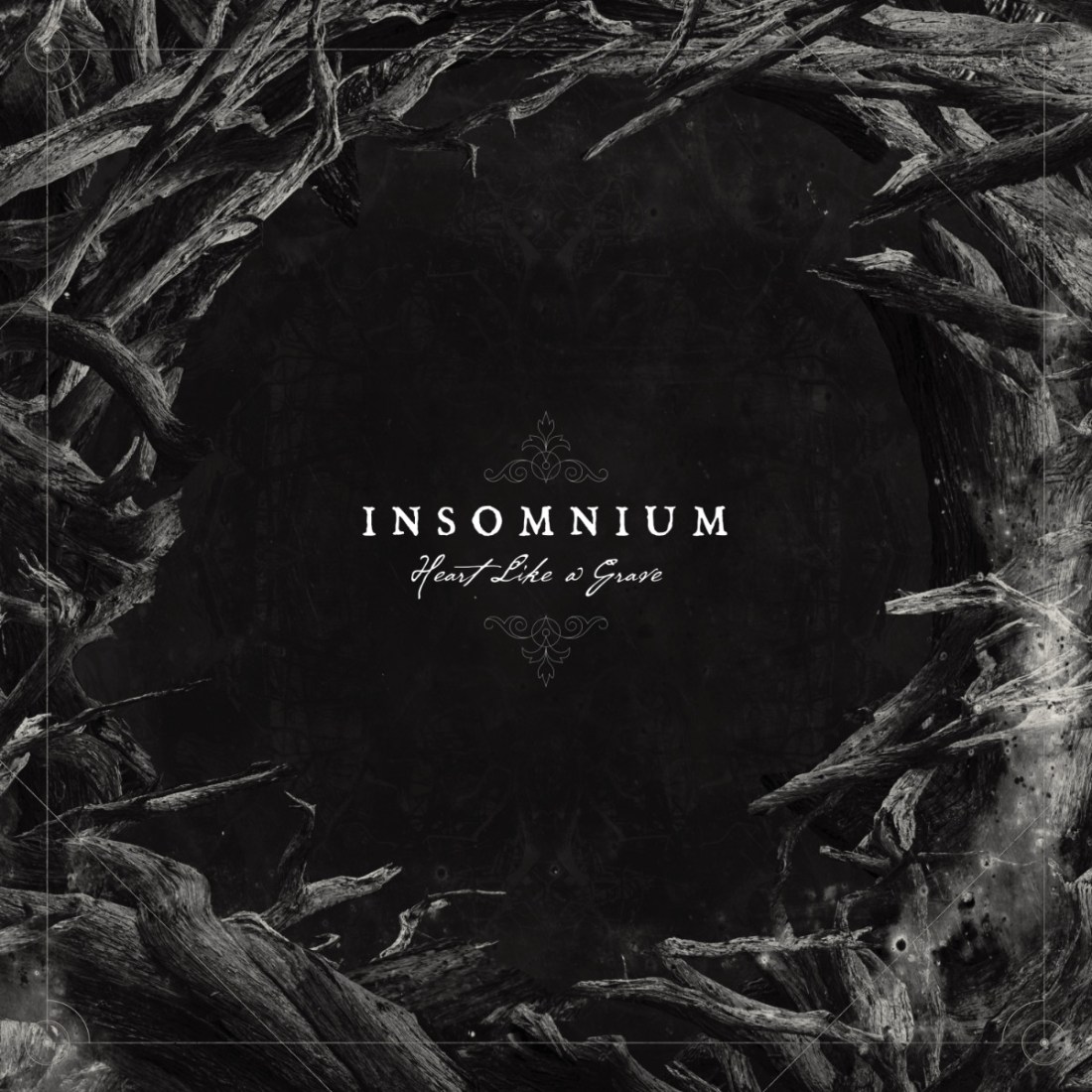
Insomnium albums have topped my charts several times in previous years. Their 2006 recording Above the Weeping World is my equal-favourite LP of all time. The prospect of new music from the band always excites and worries me (worry that the new material might fall short of the exceedingly high bar set by their previous work). They’ve never disappointed. Heart Like a Grave is loaded with the cold wintry metal that Insomnium has pioneered for 20 years. No one else does it quite like them. Another phenomenal record from masters of their craft.
3. Finsterforst – Zerfall

Finsterforst’s music is the perfect sonic expression of their home turf: the Black Forest in Germany. It’s dark, sweeping, beautiful, loaded with atmosphere and full of surprises. And it’s heavy. Make that HEAVY. I’ve enjoyed all their albums since the band’s inception, but 2014’s Mach Dich Frei! was a quantum leap forward. Zerfall is every bit as good. The guitar work alternates between mellifluous Queensrӱchesque refrains and awe-inspiring riffs. Vocals are for the most part clean, although there’s plenty of guttural growling for good measure. Production values are astonishing. Another gesamtkunstwerk from one of the best and most underrated bands on the planet.
4. Blut Aus Nord – Hallucinogen

Since hearing Blut Aus Nord’s debut album, Ultima Thulée, I’ve been hooked on this band. BAN tracks don’t follow the usual intro-verse-chorus-verse-chorus-widdlyguitarsolo-chorus-end pattern. They don’t follow any prescribed pattern at all. To even call them tracks seems inadequate. They’re vast soundscapes of beautiful heaviness. Each one takes the listener’s mind on a journey to places (s)he didn’t know existed. Yet these places feel familiar. This French outfit isn’t comprised of mere musicians: they’re sorcerers of sound with a knack for discovering jaw-dropping combinations of melody, harmony, überheavy riffage and otherworldly vocals. Hallucinogen sees them on stunning form once again. Stunning in the literal sense as well as the metaphorical. Play this album on a good sound system, turn it up loud, and you will be stunned. The atmospherics of Haallucinählia, for example, flit between divine heaviness and spine-tingling delicate sections, all of which work perfectly. BAN describe themselves as “Theoricians of Insane Aestheticism, creators of a hallucinogenic universe, erasing all preconceived ideas of Black Metal – and extreme music in general. We redefine the rules…” Yes, they do. And holy shit, they do it well.
5. Borknagar – True North
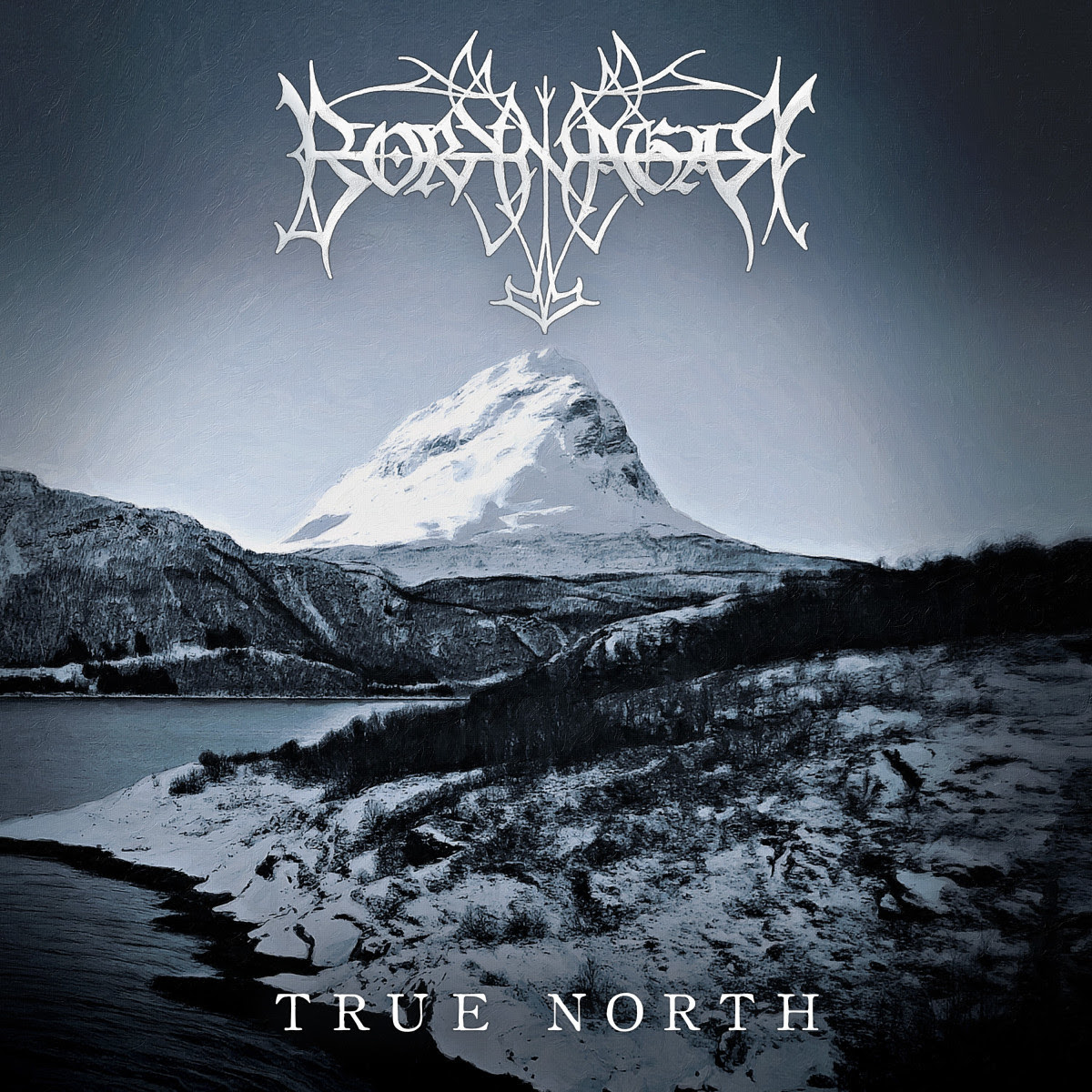
I like Borknagar’s image as much as the music: cold, northern (I don’t mean pretend-northern like Newcastle – I mean real northern…Vikings from the icy wastes of Norway), and grown-up (you won’t find any songs about going to a party on a Saturday night, or motorcycles, or big-titted women with quick-release panties and flexible morals, or any other clichéd metal tropes). This is thinking people’s metal. It’s philosophical and soulful. Borknagar’s only peer in terms of musical style is Sweden’s Vintersorg (another of my favourite bands, whose Till fjälls album is a milestone in Scandinavian metal). Both Vintersorg’s and Borknagar’s music contains a hint of Bathory, but any metal band that isn’t influenced by Bathory deserves to be lined up and kicked vigorously in the bollocks. Harsh, perhaps, but there it is. The standout track on True North is also the quietest one: a meditative, trancelike vocal called Voices, which reaches into the soul and stirs up awe.
6. Jean-Michel Jarre – Snapshots from Eon
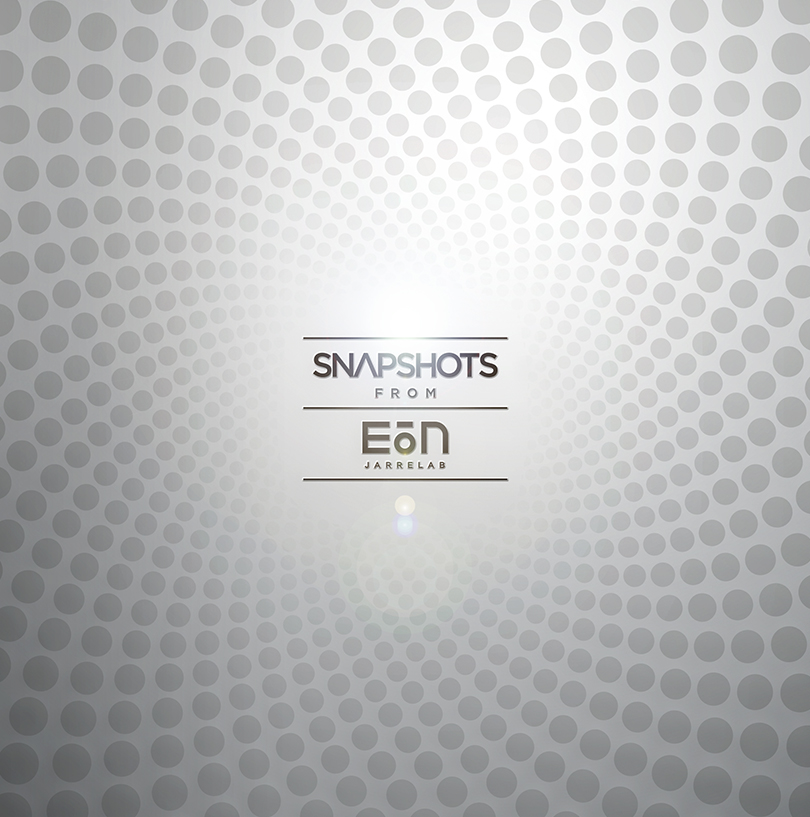
My thoughts of JMJ have been aired many times. I consider him a true genius. That’s not a word I use lightly. He’s the ultimate pioneer of electronica. Oxygène was the album that introduced me to Jarre, when as a kid I heard it at London Planetarium…and the entire Universe was in those melodies. Even now, decades later, that album sounds futuristic, its message to look after the planet more important than ever. Snapshots from Eon is another monumental recording from the master. Only 2,000 of them will ever be made. It’s a signed double-vinyl, 3CD, coffee-table-book combo. The music’s instantly recognisable as JMJ: glorious synth sounds and walls of bass, perfect percussion and inspired melodies. The Snapshots from Eon box set’s release coincided with the launch of Jarre’s Eon app for iPhone – a dynamic, constantly evolving suite of music he describes as, “Like an infinite album. Each time you play the music, it’s going to generate something special for you.” To Hell with iPhones, I say. They’re annoying and their sound quality’s shite. Jarre’s music deserves better. Playing SfE on a serious hi-fi setup – the only kind I touch – is an amazing, immersive experience.
7. Xentrix – Bury the Pain

The best British thrash band ever? As the folk at Carlsberg would say, probably. I’ve loved Xentrix’s music since they first emerged. Their insane rendition of Ghostbusters just might be the best cover version of all time. They’ve been gone a long time, though, so in early 2019, when I received an e-mail informing me there would be a brand-new Xentrix studio album coming soon, I felt the same mixture of excitement and trepidation I always feel when a band I love returns after a long time away. Excitement because I hope the new material will be as good as the back catalogue. Trepidation because I don’t want them to release something substandard and in doing so taint an otherwise-perfect legacy. Guess what? Bury the Pain is better than Xentrix’s previous albums. Decades away from studio recording didn’t dull their weapons. It had the opposite effect. The songwriting’s masterful, the musicianship’s amazing, the anger is present in spades, the production is crystal clear, and the band is tighter than a nun’s fanny (yes, I know there are slutty nuns, but I’m talking about the other ones). A welcome return from an ultra-talented and criminally underrated band.
8. The Hu – The Gereg

The Hu’s Mongolian folk rock (I won’t call it metal, because it definitely isn’t – if you want gung-ho berserk Mongolian folk metal, listen to Tengger Cavalry’s Blood Sacrifice Shaman, a mind-blowing record which topped my album-of-the-year list when it came out) is so rich in atmospherics, authenticity, musical quality and heart, listening to it on a good sound system is nothing short of a spiritual experience. Like Tengger Cavalry, The Hu chooses lyrical themes about homeland, nature, humanity, and of course Genghis Khan, or, to give him his proper Mongolian name, Chinggis Khaan. Some of the vocals are delivered in throat-singing style, which I find meditative to listen to. The band plays traditional Mongolian instruments as well as electrified western ones to deliver their blend of indigenous folk and rock. It works.
9. Thunderfuck and The Deadly Romantics – Dirty Sleazy Rock ‘n’ Roll

You know what you’re getting with The Deadlies – their music is like AC/DC, The Cult, Rose Tattoo, and Zodiac Mindwarp and the Love Reaction flung into a blender and set to stun. The band had called it a day and released a swansong album a couple of years ago, after founder member and vocalist Bruce Hotchkies relocated back to his native Canada (a polite way of saying “fled Scotland to avoid the law”), but you can’t keep a good man down. Soon he had reconnected with his original bandmates in The Deadly Romantics – a bunch of Canadian vagabonds whom you wouldn’t let near your daughter (or your auntie, or your mother…you get the point). Confused yet? The Deadly Romantics started in Canada an untold time ago, with Bruce at the helm. When he moved to Scotland, the rest of the band stayed in Canada. Bruce recruited new members – Scottish hooligans to a man – and The Deadly Romantics mark II was born. Then came some lineup changes and the addition of Thunderfuck to the official band name. Now that Bruce is back in Canada, the lineup has changed back to its original Canadian configuration. The music remains the same, though. As long as Bruce aka Thunderfuck is bellowing out the vocals and churning out tongue-in-cheek lyrics, a good time is guaranteed. It’s fantastic to have them back making new music, although I do miss hanging out with Bruce in Scotland, where we’d philosophise for tireless hours on end. One such occasion – the first time my wolfboy sidekick Shilo met Bruce’s Utonagan wolfgirl Sasha – turned into utter lunacy. Shilo walked straight into Bruce’s kitchen, drank Sasha’s water out of her bowl, ate her food out of its dish (while Sasha stood with a perplexed look on her face, clearly thinking, ‘Who the hell does this guy think he is, eating my snacks and drinking my water?’). She processed this thought for a while and then pounced on him. They wrestled and chased each other around for an hour solid, careering around the garden and every room of the house, growling, howling and running riot. Bruce and I sat outside drinking, chatting and watching the animals go berserk. When we walked indoors the kitchen looked like the scene of a massacre. There were blood trails across the tile floor and up the hall. A fairly comprehensive bloody redecorating had been done in the living room too. And upstairs. It turned out that Sasha had torn one of her dewclaws while wrestling, and all this blood had come from that one small injury. Shilo, meanwhile, had lashings of blood on his fur, making him look as though he was fresh from a hunt. Sasha wasn’t remotely bothered by the injury – she hadn’t even seemed to notice it. She was still trying to play with the wolfboy when Bruce wrestled her away to have her dewclaw checked out by a vet. She was fine, of course. Heck of a first date for the girl, though.
10. Can Bardd – The Last Rain

From Switzerland comes the atmospheric-folk-black-ambient-nature-metal outfit Can Bardd. Musically they’re reminiscent of Saor. While Saor expresses the landscapes and history of its home (Scotland) in gloriously heavy and sweeping fashion, Can Bardd does the same with Swiss vistas. Imagine Saor minus the Celtic flourishes, then add a hint of Fen and some eerie atmospherics, incorporate some dungeon synth and medieval harp for the quieter, more melodic interludes. That’s Can Bardd. It’s a heady mixture and I love it.
11. Alcest – Spiritual Instinct

Two Alcest albums (Shelter and Kodama) are, to my ears, pure sonic perfection. Spiritual Instinct had a lot to live up to. It’s a strong album but it seems a wee bit like Alcest by numbers: the tracks don’t send shivers through me, make my body hair stand up, and bring tears to my eyes the way La Nuit Marche avec Moi (from the album Shelter) does, or the way Kodama‘s title track does. The musical quality’s there, as always, but the tracks don’t resonate in my soul the same way some earlier Alcest soundscapes do. Which seems ironic, given the album’s title. It’s heavier than anything the band has done in a while, moving away from the shoegaze/ambient/post-rock territory that Neige had dived into at times, particularly on Shelter. Still, Spiritual Instinct is a worthy release from one of France’s greatest bands.
12. Symphony of Pain – Virology
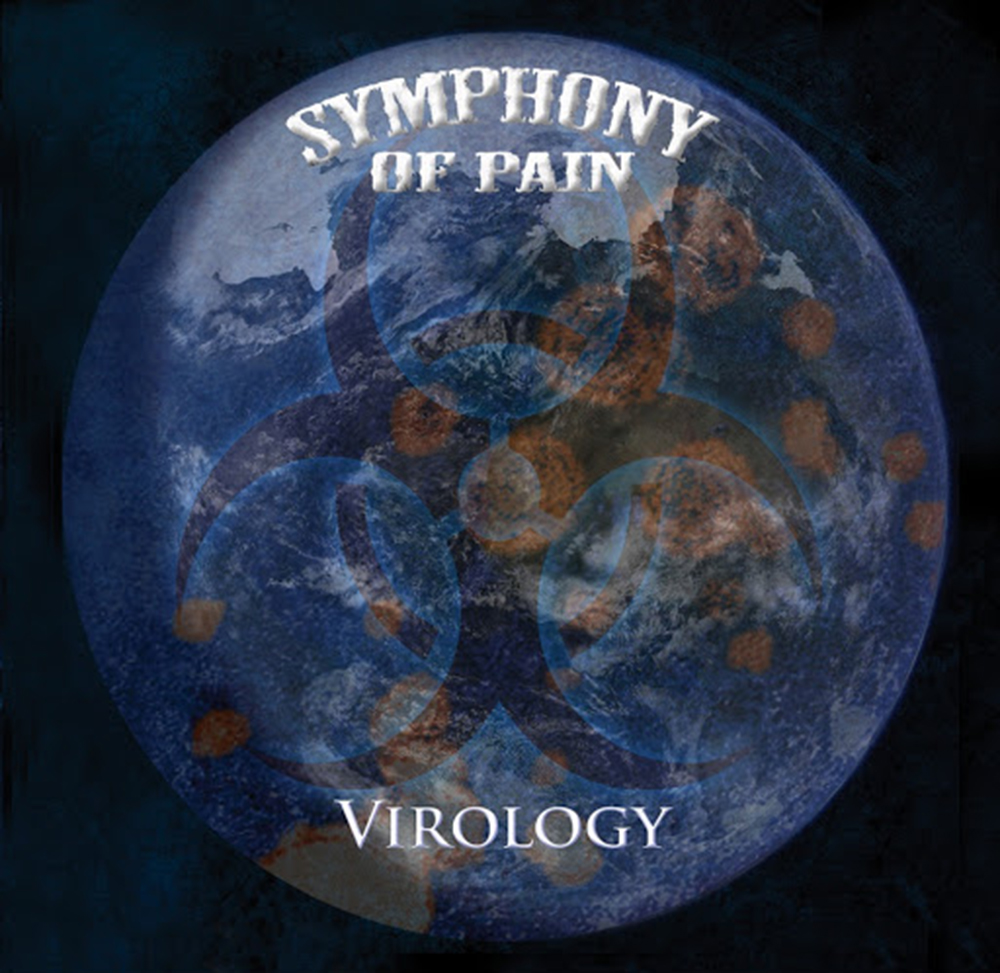
Featuring my favourite bassist bar none, Mark Bloxsidge (whose work with power-prog trio Trilogy ranks among my all-time favourite music), Symphony of Pain blends Alice Cooperish theatricality with Queensrӱchesque (Chris DeGarmo era) guitar tone/melody, and song structures that remind me of Savatage. All of which is good. Keyboardist/pianist Pam Chowhan adds layers of gorgeous melody to the band’s sound. She also engages in occasional bouts of serious fiddling (musical, not sexual), such as on her violin solo during Darkling. Jonas Costa’s guitar work is fluid and polished throughout. Vocally, Traci Law often reminds me of Jon Oliva (a huge compliment coming from me: Oliva’s Savatage material ranks as some of my most beloved music). There’s also a dose of Alice Cooper, a pinch of Steve Hogarth, a smidgeon of Tobias Sammet and a hint of Wayne Hussey in that voice. Johanne James does a sterling job on drums. And Mark Bloxsidge is my favourite bassist for a reason…’nuff said. Virology is a concept album of sorts, but I won’t give the game away by delivering spoilers. Give it a whirl for yourself. It wears its influences on its sleeve, but there are enough original elements to make this a unique beast.
13. The Great Old Ones – Cosmicism
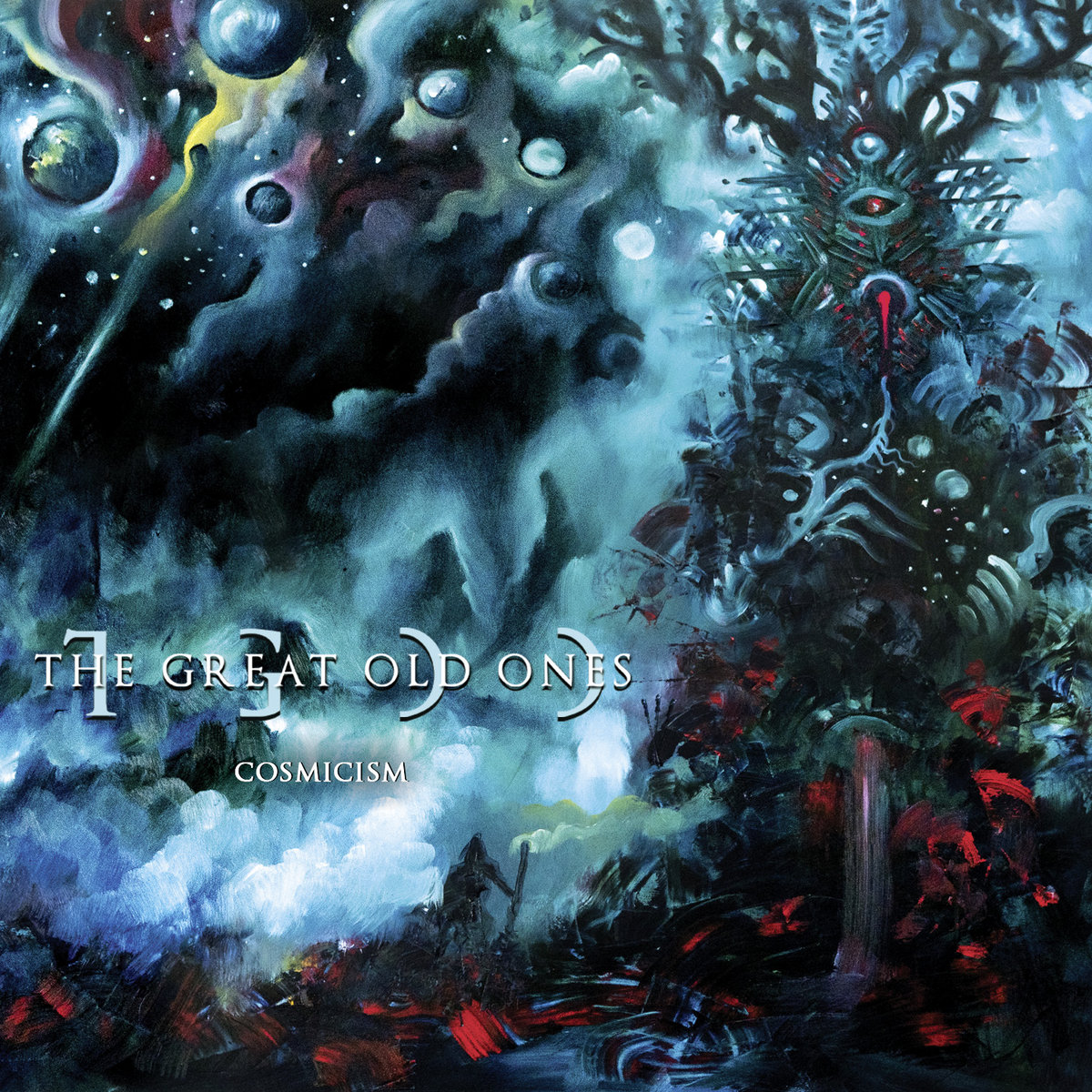
I was a wee bit underwhelmed by this band’s debut album Tekeli-Li. I wanted to love it, as French metal that’s avant-garde is usually my cup o’ tea, especially if the sound includes elements of ambient black metal (the hi-fidelity, well-produced, expansive stuff, which is worlds apart from the lo-fi screechy black-metal recordings of the early Scandinavian scene or the raw riffage of the original black-metal act, Venom, who coined the term ‘black metal’ on their album of that name), but, despite some truly immersive moments, it lost me in parts. Their next album, EOD: A Tale of Dark Legacy, was more consistently impressive. On Cosmicism they’ve finally come of age. It’s jaw-dropping. The album’s spacey keyboard intro Cosmic Depths lulls the listener into a transcendental reverie, then, as it segues into The Omniscient the band’s newfound command of dynamics is displayed in style, with an inspired chugging bass line paving the way for a gigantic wall of riffage that even Blut Aus Nord would be proud of. The musical calibre doesn’t drop throughout the rest of the album. Flawless.
14. The Young Gods – Data Mirage Tangram
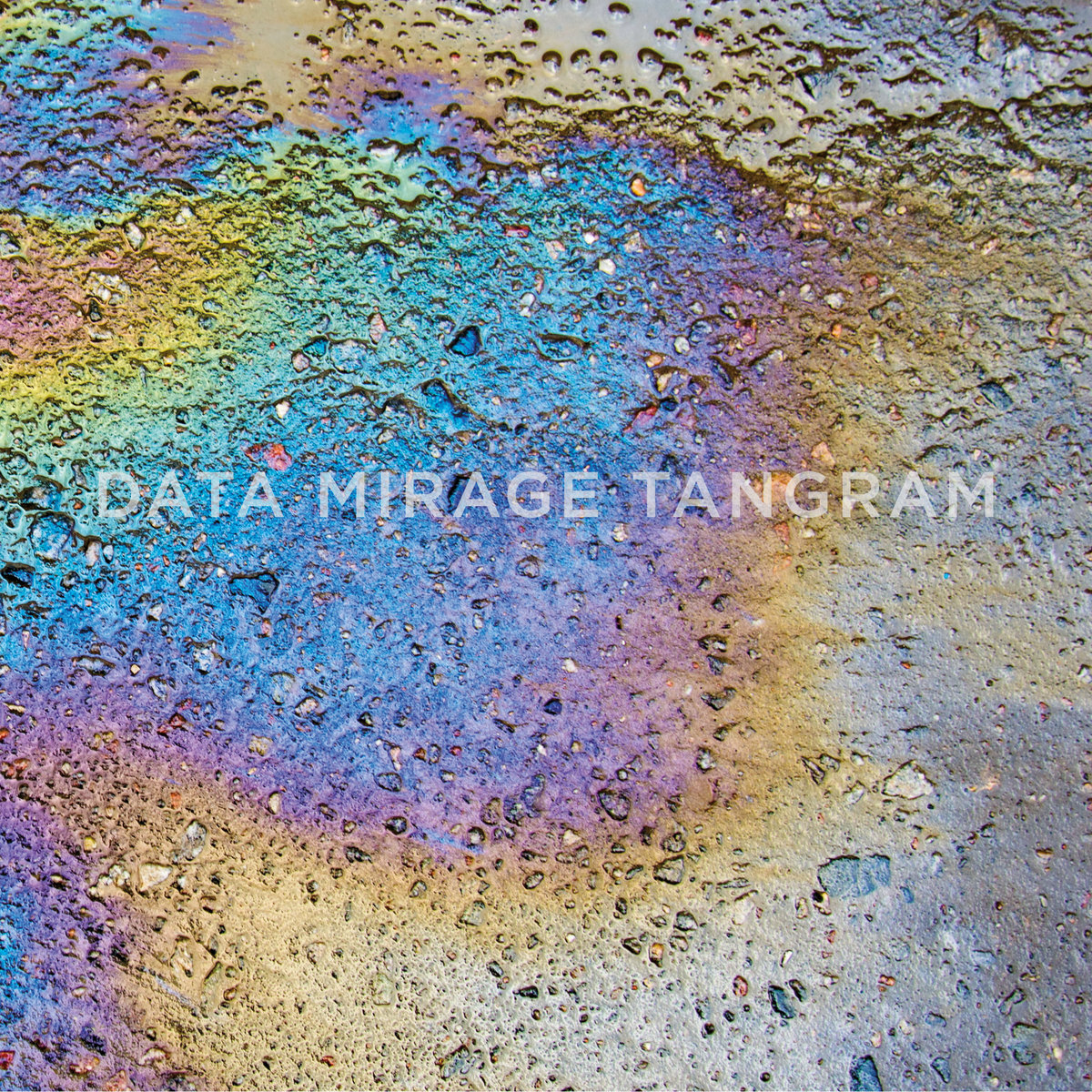
A new offering from the Swiss visionaries who formed in 1985 and whose music (along with that of peers Front Line Assembly) ushered in the industrial-metal movement of the early ’90s. Their 1991 track Skinflowers made me prick up my ears and notice this band: it’s now one of my desert-island tunes – a song I couldn’t do without. In 1995 their Only Heaven album broke new musical ground with its blend of ultra-delicate dreamscapes interspersed with hypnotic vocals and vast riffs. Like most of The Young Gods’ recordings since then, Data Mirage Tangram is more about the dream sounds and not so much about the noise. The music’s still sublime and they still blast out the occasional wall of riffage (for example, on Tear Up the Red Sky) to add dynamic shade to their dreamy light. The track Figure Sans Noms is very much the sonic successor to Skinflowers, from the bouncy bass line to the riff that bides its time before bursting out to flex its muscles. Masterful, as always.
15. Rock Goddess – This Time

When I received a copy of this long-awaited new Rock Goddess album signed by all the girls in the band (technically they’re women now, but they’ll always be girls to me, just as I’ll always be a fourteen-year-old delinquent when I listen to their music), it was one of those life-affirming moments: as long as Julie and Jody are cranking out their catchy brand of anthemic metal, the world is OK. That sort of thing. This Time is heavy. The songs are still anthemic, accessible and singalong, but this is the heaviest Rock Goddess has ever sounded on record. It’s fantastic.
16. Holocaust – Elder Gods

Scotland’s premier NWoBHM band returns (they were never away, but you know what I mean) with another quality slice of metal that is instantly recognisable as Holocaust. Lyrically there’s more of a pagan theme than usual (no bad thing), but musically this is Holocaust as they’ve always sounded: raw, angry, heavy, minimalist and effective.
17. Swallow the Sun – When a Shadow Is Forced into the Light
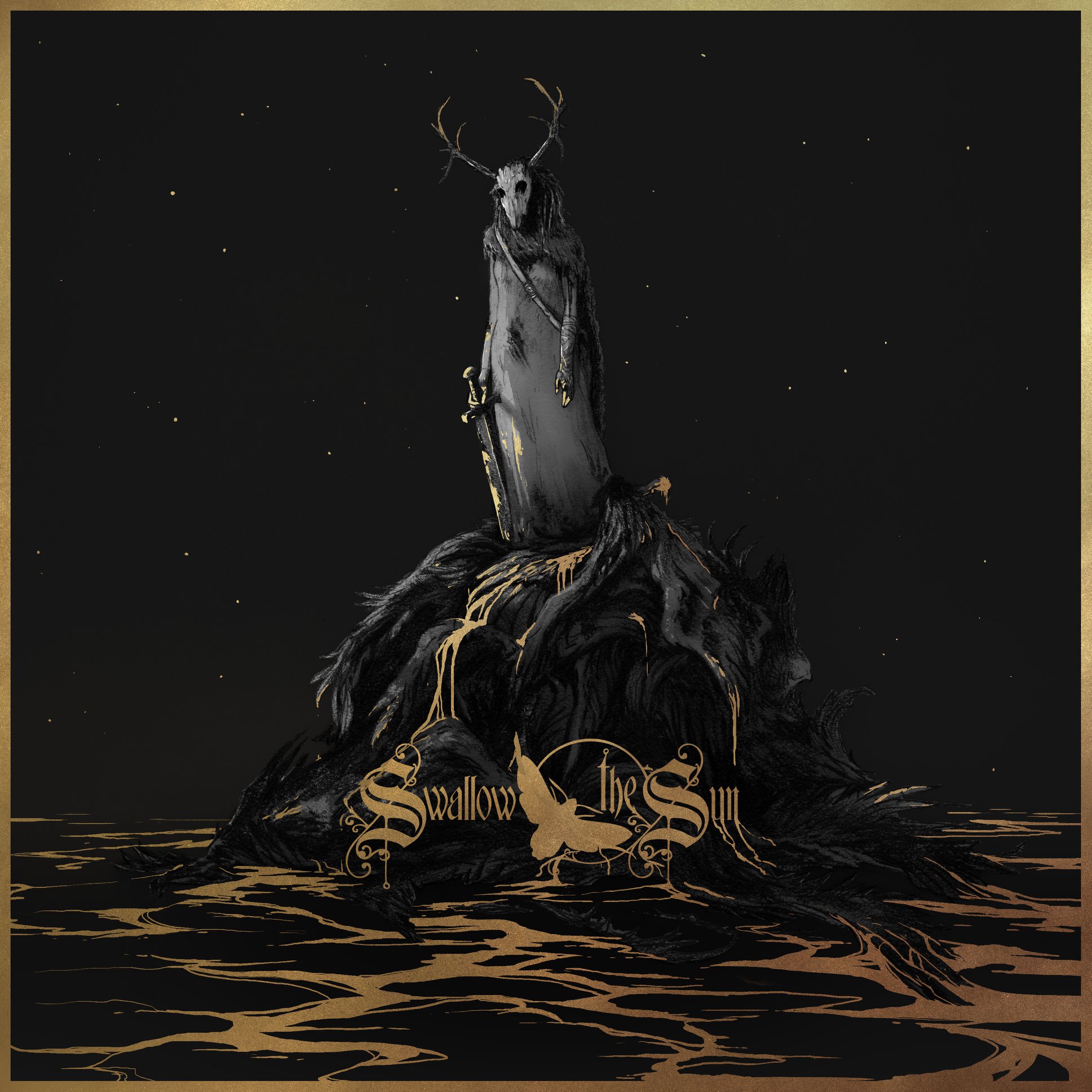
One of Finland’s greatest bands (and that’s a huge statement, as Finland has more metal artists per capita than any other country – by far), Swallow the Sun has for a couple of decades been spearheading the Finnish melodic-death-metal movement (along with Wintersun, Amorphis, Insomnium and Omnium Gatherum). If I were sent to a desert island and could take only one musical genre with me, this one would be my top pick. It’s a sublime mix of light and darkness, heaviness and melody, clean vocals and guttural growls, all of it executed by some astonishingly talented musicians. When a Shadow is Forced into the Light isn’t my favourite StS record (that would be the triple-album masterpiece Songs from the North I, II and III), but it’s an excellent addition to their musical catalogue.
18. Diamond Head – The Coffin Train

Diamond Head without Sean Harris may seem like a strange beast in theory, but the band still sounds almost exactly like Diamond Head with Sean Harris…just a little less Led Zeppelinish. They copied what Judas Priest did during its two-album period without the Metal God Rob Halford on vocals: hired an audio-clone soundalike. In JP’s case that came in the form of Tim ‘Ripper’ Owen. Diamond Head did it first with the fantastically named Nick Tart from 2004-2014, then more recently with Rasmus Bom Andersen, whose voice is eerily reminiscent of original DH vocalist Harris. 2016’s self-titled album with Andersen at the mic was a welcome return to top form. The Coffin Train continues that inspired run of form, with founder member/guitarist/backing singer/main songwriter Brian Tatler once again a force to be reckoned with.
19. New Model Army – From Here

Get your clogs on…New Model Army is back with a new studio album! One of the (many) things I love about NMA is the band’s resistance to categorisation. They’re full-on punk sometimes, a bit metal on occasion, ballady when it suits them, folky here and there, rocky much of the time, angry most of the time, but impossible to pigeonhole. As all artists should be. I can’t help comparing NMA’s punkier tunes to Vengeance (which I consider the sonic blueprint for anger beautifully expressed), and sizing their lighter material up alongside Green and Grey (which is utter perfection). NMA main man Justin Sullivan is rightly considered by some (including me) to be a figure worthy of adoration, for his passion and artistic vision, for his refusal to compromise, for his steadfast sailing against the wind and giving not a single fuck about trends or external pressures. His vision has remained pure since day one. How many musical artists can say that? From Here is another flawless slice of sonic bliss from a band that has never, ever had an off day.
20. IQ – Resistance

I find it heartening that IQ (along with their early peers Marillion, Solstice and Pendragon) can still create new music that takes me by surprise, decades after I was first amazed by their sounds. Resistance is, I reckon, IQ’s strongest and best-produced album. Better, even, than their second LP The Wake, which is held up often as one of the definitive prog albums. 2019 IQ is heavier than ever before, musically and thematically. Mike Holmes’s gargantuan guitar tones are the crux of the whole sound, driving it forward in an unstoppable wave, with the unique vocals of Peter Nicholls the only hint that this is indeed IQ. It’s less proggy, the keyboards are lower in the mix than in the past (either that or they’re partially drowned out by Holmes’s monster riffage), Paul Cook’s on his best ever form on drums, and Tim Esau’s bass is a throbbing constant that further fleshes out the sound. The cumulative effect is a vast, immersive experience.
21. Tool – Fear Inoculum

To borrow a Faith No More-ism, this one came from out of nowhere. Last year’s long-awaited return from Maynard James Keenan’s other band, A Perfect Circle, was unexpected, but a return from his once-main project Tool came as an even bigger surprise. I wasn’t impressed when the album started out with an annoying sound I’d describe as a screechy ping. Then more of the irritating screechy ping. Then a cello-ish echo-chamber tone that improved things, but still with that horrible screechy ping at regular intervals. When Danny Carey’s familiar tribal percussion came in, however, followed by Maynard’s distinctive robotic vocals, I felt happier: this was Tool as I know and love them. They were back and they hadn’t fucked up their legacy with a whole album of screechy pings. A relief. If I were their manager I’d have had serious words with them about that intro, though. Imagine the scene: the four members of Tool are sitting in the studio with the newly cut record; I walk in and Maynard excitedly plays it for me; the music starts, my face goes all perplexed and I say, “You’ll need to get rid of that annoying sound glitch at the start.”; Maynard shakes his head and says, “That’s not a sound glitch. It’s meant to be there. That’s how we want the album to start.”; now it’s my turn to shake my head as I reply, “The band’s been away for thirteen years and this is how you want to return? With a screechy ping? Not on my watch.” Anyway, screechy pings aside, this is quintessential Tool. There’s a (deliberate?) tip o’ the hat to Metallica towards the end of the title track/opener Fear Inoculum, when Danny Carey rattles out rhythms that are almost identical to those in the most famous section of Metallica’s One. There’s more hat-tippage/ripping-offage (delete as befits your opinion) on short instrumental Litanie Contre la Peur, which borrows heavily from/steals (again, delete as appropriate) Rainbow’s keyboard intro to Tarot Woman. No one else seems to have commented on this, but there it is. Tool sticks to its tried-and-tested musical formula throughout the rest of the album: emotionally detached, robotic vocals; mathematically precise tribal percussion; glorious clean-toned guitar work; heavy, expansive bass; spacey keyboards. It’s a welcome return but it’s not my favourite Tool album (Lateralus gets that award). I’m not complaining, though. It’s good to have them back.
22. Darkthrone – Old Star
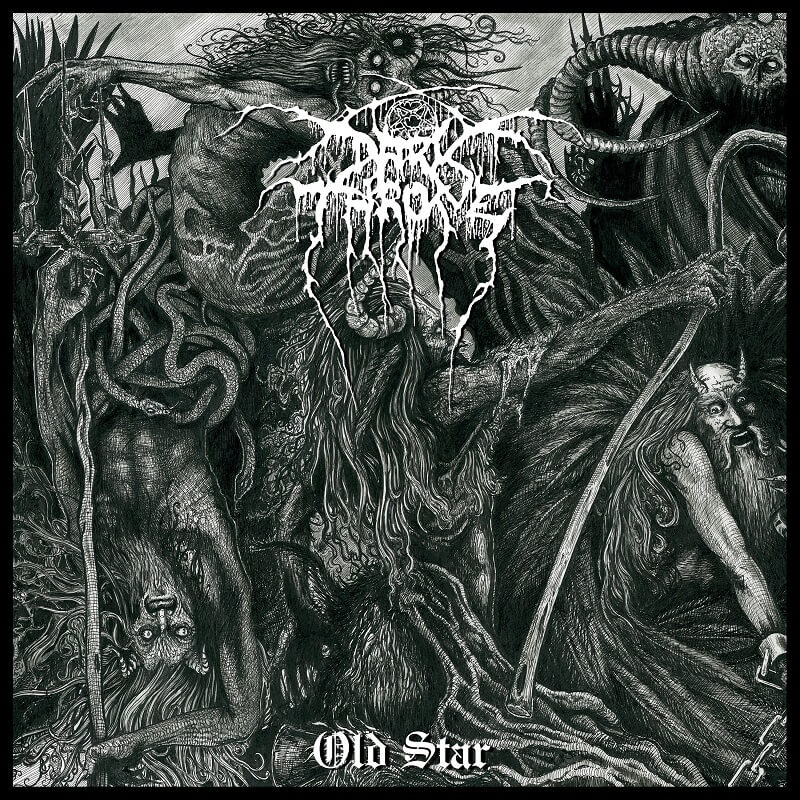
Fenriz has always been all about the music. When he formed Darkthrone this was the case. When fellow Norwegian black-metallists Mayhem were burying their trousers, sniffing dead birds and concentrating too hard on contriving a ridiculous image for themselves (instead of rehearsing, composing and bettering their abilities), Fenriz was crafting and recording music. As a result, even though Mayhem formed years before Darkthrone, the latter band released the first album of the Second Wave of Black Metal: A Blaze in the Northern Sky, which pioneered the feral screeching lo-fi sound that would come to define Scandinavian black metal through the ’90s and beyond. While members of Norway’s black metal inner circle were burning down churches, Darkthrone remained focused on composing, recording and releasing more genre-defining music. As those same inner-circle members were killing themselves and each other (and the occasional innocent park-walker), Darkthrone just kept making music. I admire Fenriz and his Darkthrone compadre Nocturno Culto for that: no matter what kind of chaos is going on around them, they shut it out and focus on crafting music. That’s why they’re two of Scandinavia’s most prolific musicians. In addition to the vast Darkthrone back catalogue, they’ve recorded music for solo projects as well as guesting on numerous other artists’ recordings. Another way they managed to achieve such a prolific output was by refusing to play live. While other bands were touring the world, Fenriz and Nocturno Culto remained hidden away in their Norwegian Bombshelter headquarters, always moving forwards with new music. A fanatical work ethic. Sonically, post-2010 Darkthrone is closer to Motörhead than it is to early Darkthrone (nothing wrong with that!). Old Star features seven new studio tracks, all of which are excellent. One even has a Scottish theme! The Hardship of the Scots kicks off with a blatantly ripped-off AC/DC riff (Let Me Put My Love into You), which is mangled and distorted somewhat…but a big fat rip-off nonetheless. Other than the ripping-offage of riffage, the track sounds about as far from AC/DC as it’s possible to be. I love that Fenriz decided to write a Scottish-themed track. The song contains no mention of whisky, sheep, kilts, shortbread, Robert Burns or The Skids, though, so one has to question its credibility. All things considered, Old Star is a gorgeously guttural growlfest underpinned by dirgelike slow riffs, off-kilter percussion, and some wild lead-guitar breaks. It even sounds produced! Not produced crystal clear like a Rush album or a Marillion album. Produced more like a morning bowel movement after a second helping of oats, bran and strong coffee: it’s dark, stinky and a little bit evil, but you can’t help taking some kind of perverse pleasure in it.
23. Opeth – In Cauda Venenum
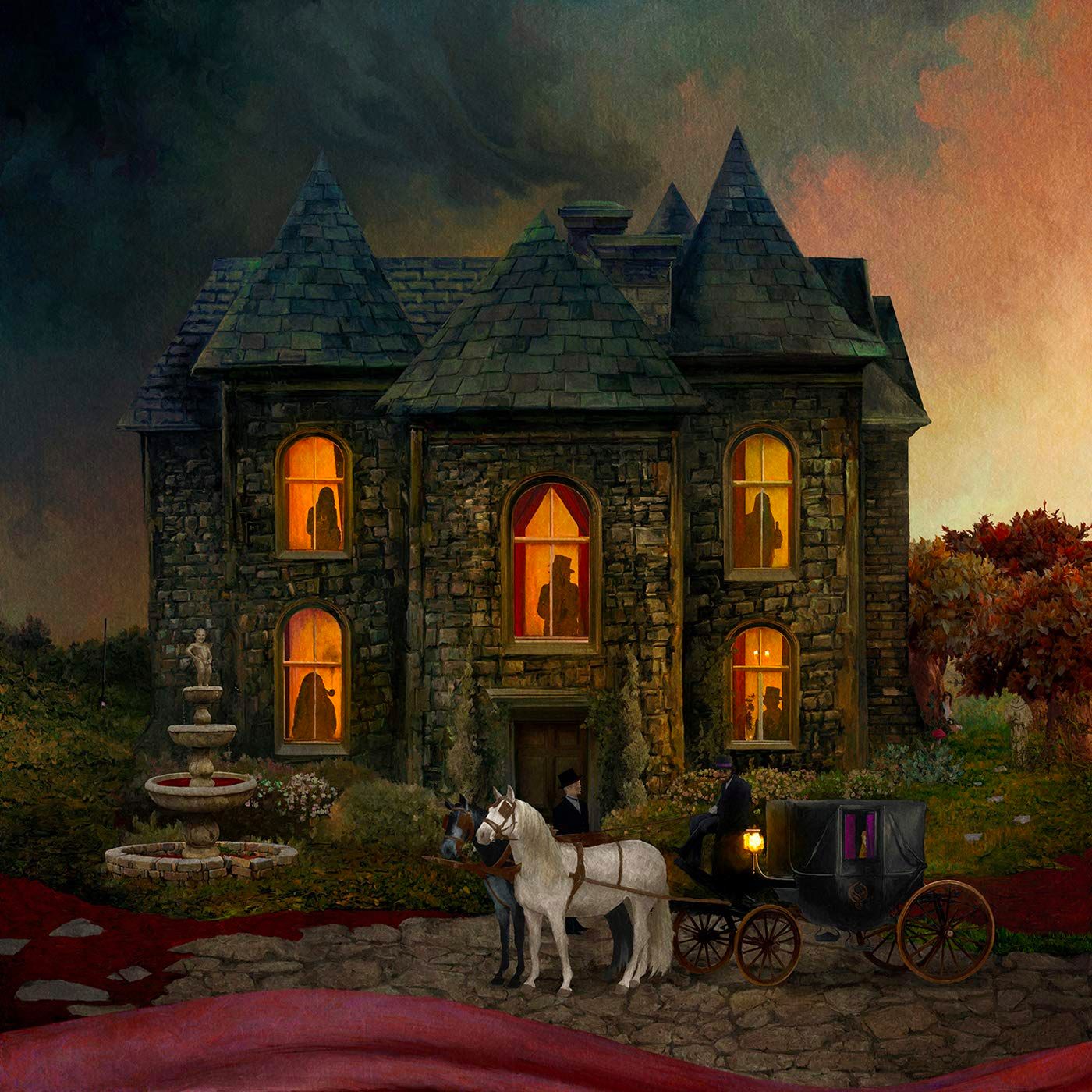
Opeth’s Blackwater Park is a milestone in metal. It also marked the point at which prog sensibilities and really heavy extreme metal first blended in a seamless way. To this day, I find that album awe-inspiring. Like most Opeth recordings since then, In Cauda Venenum veers more into prog-metal territory, rarely bringing forth moments of extreme heaviness. That’s not a criticism; just an observation. They’re growing up and evolving, which is one sign of a true artist. The musicianship is as adept as ever. Production values and song compositions are still spellbinding. I got the 2CD version of In Cauda Venenum, One CD features the album tracks sung in English. The other features the songs sung in Opeth’s native Swedish. It’s amazing the difference this makes to the sound. I prefer the Swedish version.
24. Månegarm – Fornaldarsagor

Swedish band Månegarm blend folk sensibilities, Viking iconography and brutal black-metal delivery. They don’t cobble together disparate parts, but play from the heart and let their influences flow through in a unique, seamless sound. (The band’s name derives from a character in Norse mythology: Mánagarmr (Moon-Hound) – a human-hating wolf conceived when the enormous demon-wolf Fenrir shagged the giantess Angrboda – there’s a mental image for you!) Fornaldarsagor contains the odd hint of Finntroll in the music, but never to the point of rip-off or parody. This is a serious band delivering serious music.
25. Arkona – Age of Capricorn
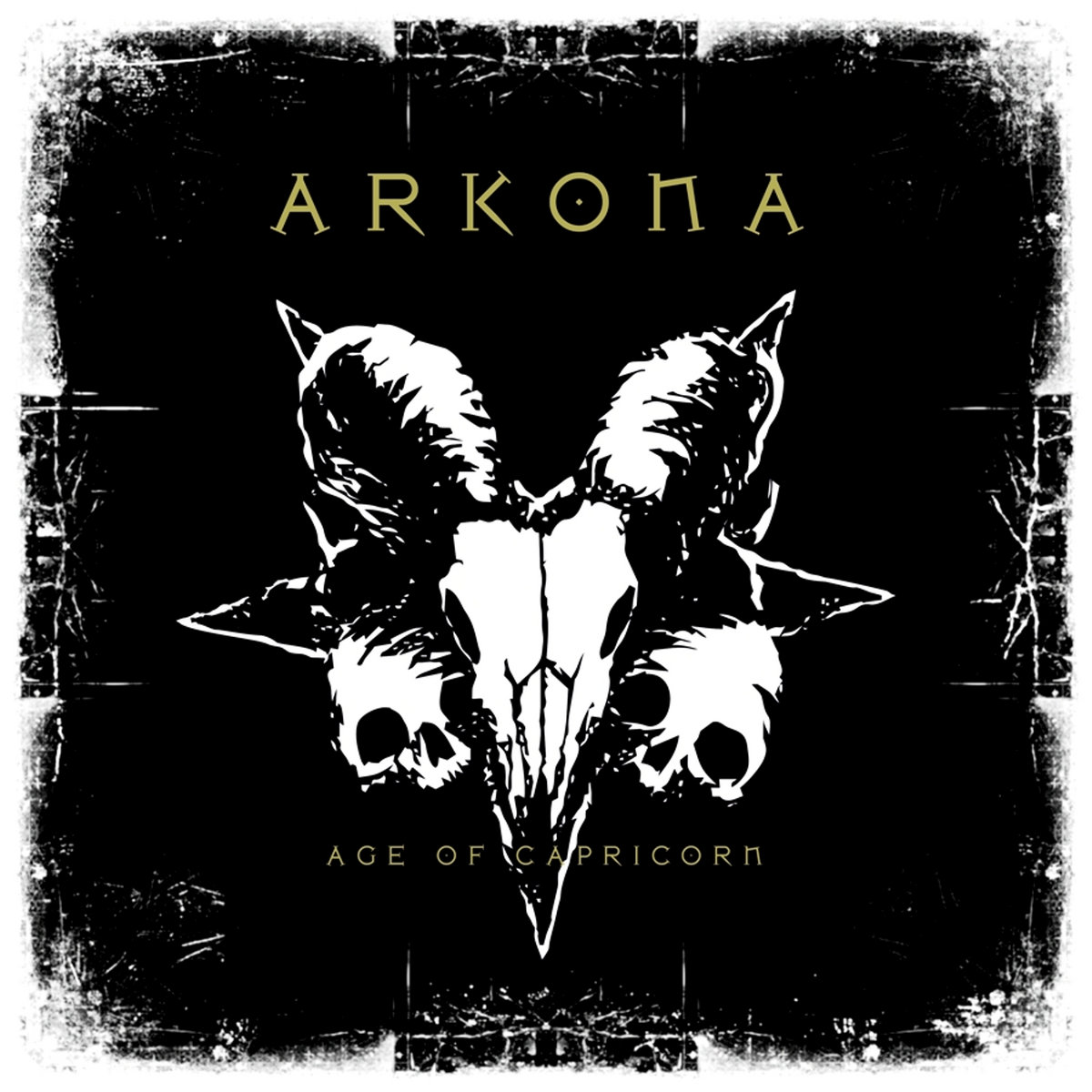
Not to be confused with the Russian folk-metal outfit of the same name, this (Polish) Arkona plays black metal that refreshes the parts most other corpsepainted nutjobs can’t reach. Age of Capricorn is an inspired blend of old-school black-metal heaviness/attitude/song structures and more modern, so-called post-black-metal production values and expansiveness of sound. I find it incredibly refreshing – an album to blow away the cobwebs of the mind.
That’s it! Those are my top 25 of the year. Other artists whose 2019 albums I enjoyed, but who didn’t quite make it into my list: Reuben Archer, Helheim, In Flames, Kampfar, Stilz, Tygers of Pan Tang, Moana, Rammstein, The Rods, D.A.D., Angel Witch, Lustre, Eluveitie, Gaahls Wyrd, Alfahanne, The Darkness, Heilung, Soen, Michael Schenker Fest, Ager Sonus, Phil Campbell and the Bastard Sons, Skyblood, Waste of Space Orchestra, The 69 Eyes, Abbath, Sodom, The Emerald Dawn, Avantasia, Orbital, Soilwork.
I’ll finish this not-so-little post by blatantly plugging the remastered version of my novel Metallic Dreams, which I spent a year reworking. It’s now better than ever – immeasurably so. Check it out. It’ll make you laugh, cry (sometimes both at the same time) and maybe even pee a little. It’ll also make you more interesting, enlightened, handsome/beautiful (delete as appropriate) and more fragrant too. Trust me. I’m a Scotsman.
The cover image below is a link to the definitive hardback edition of Metallic Dreams. If you fancy a copy, left-click on the picture and you’ll be transported to the page where you can purchase one. Paperback and Kindle e-book editions are available from Amazon, but the hardback is available exclusively from lulu (the booksellers, not the diminutive songstress from Glasgow).
Till next time, keep your powder dry and your metal heavy.
